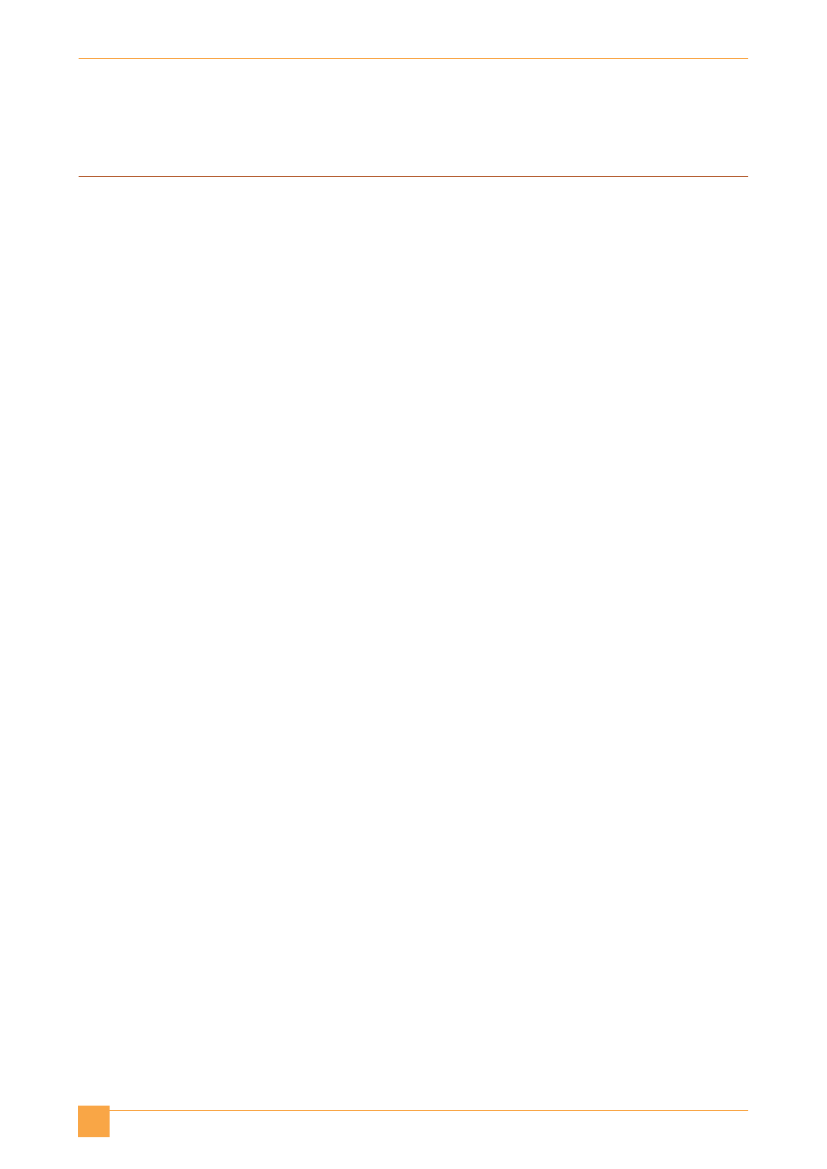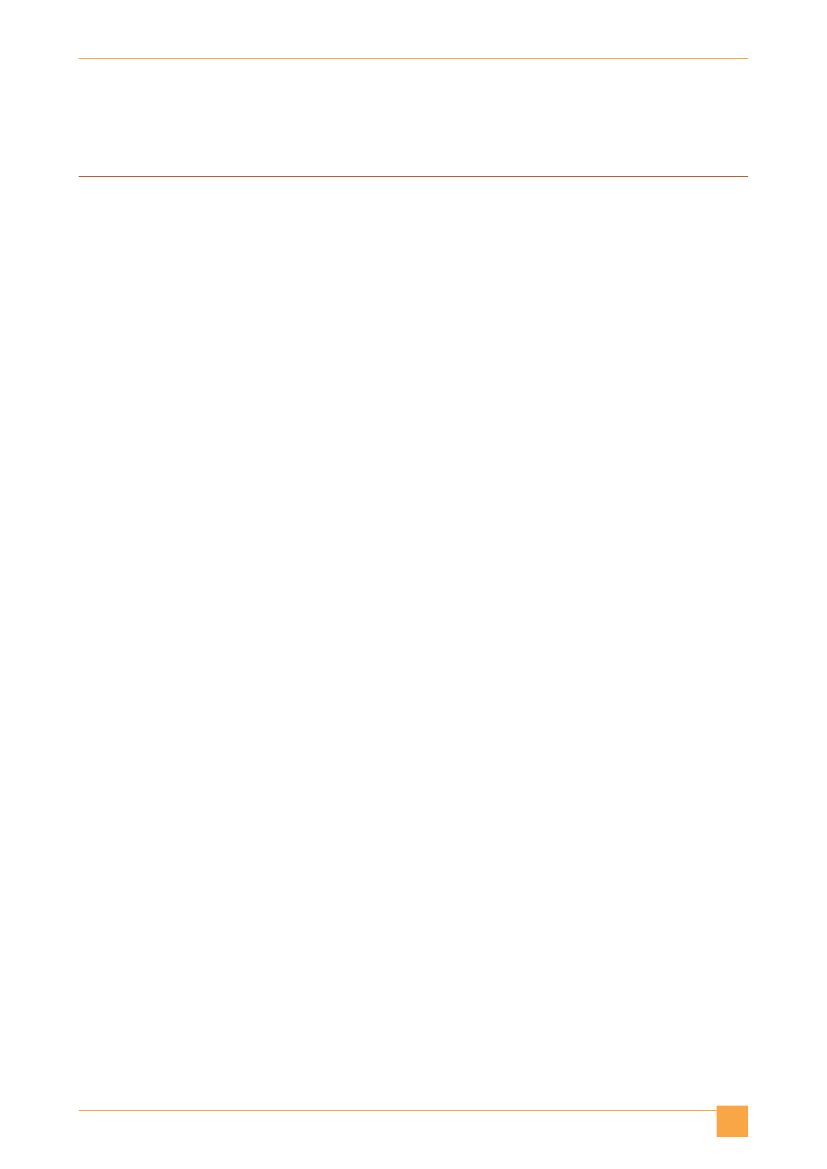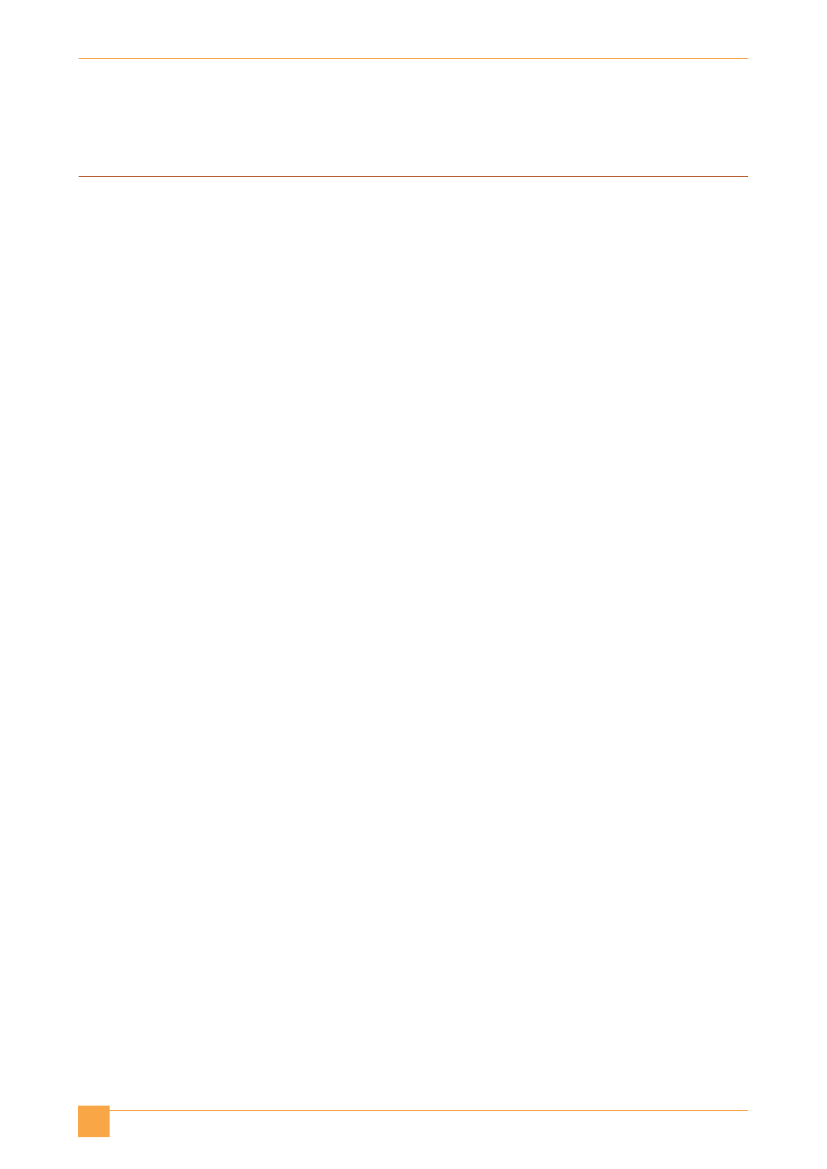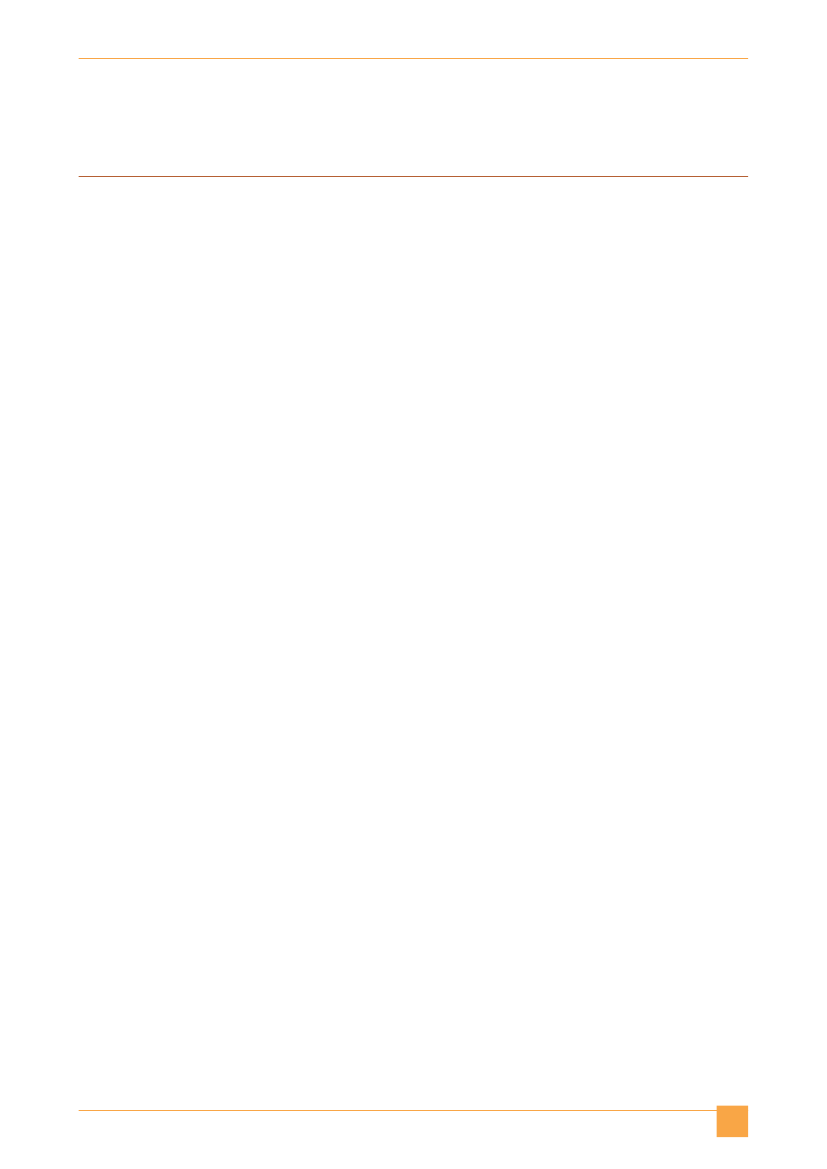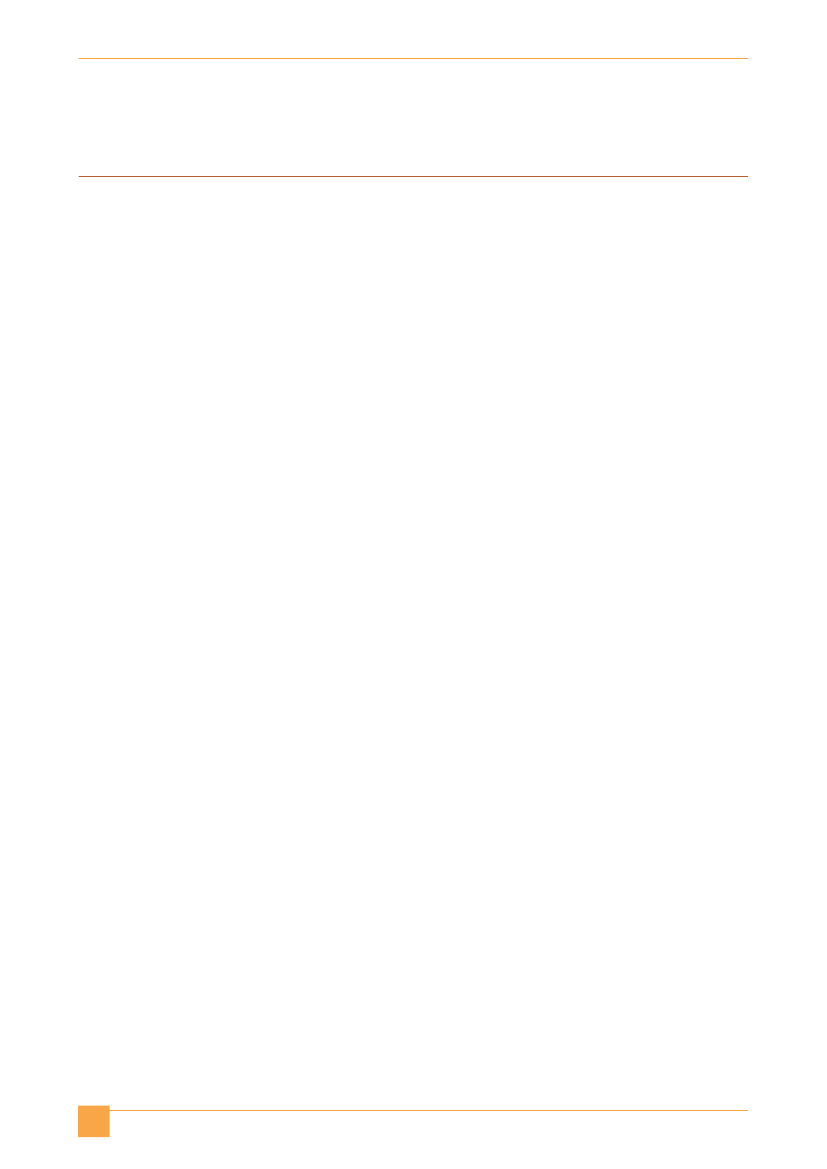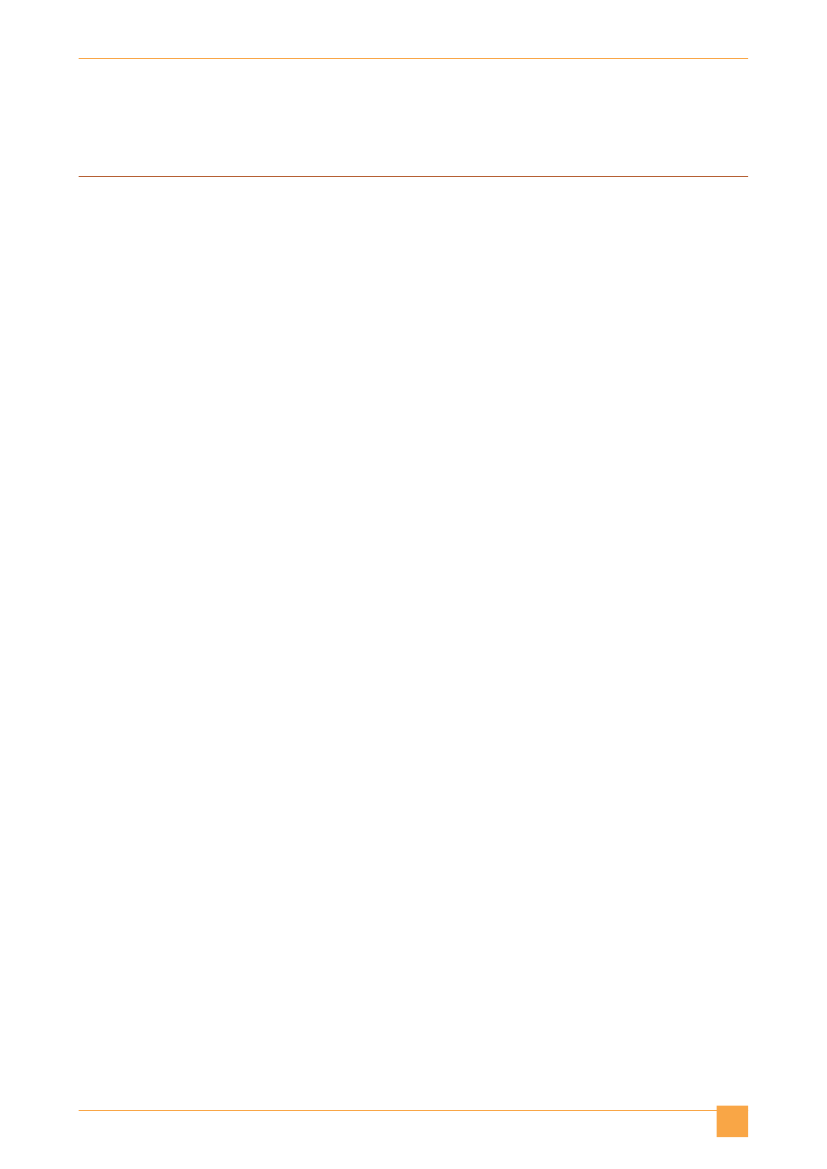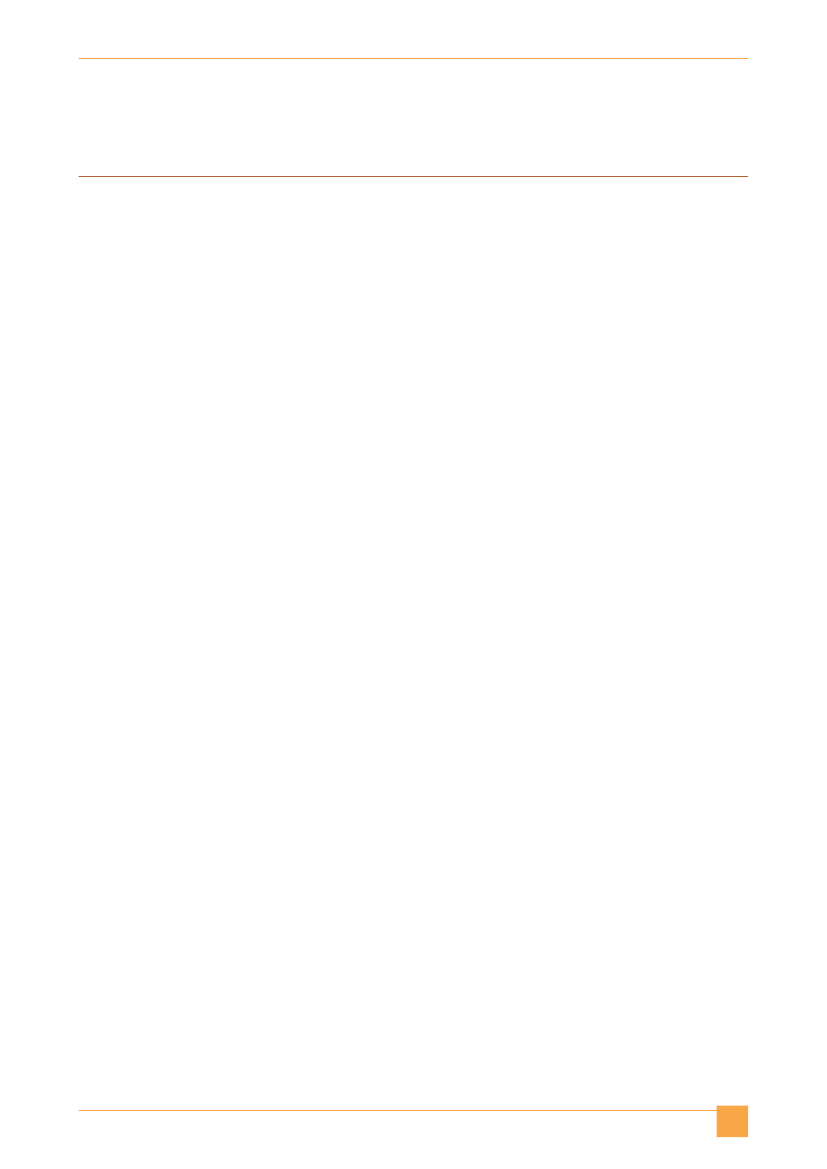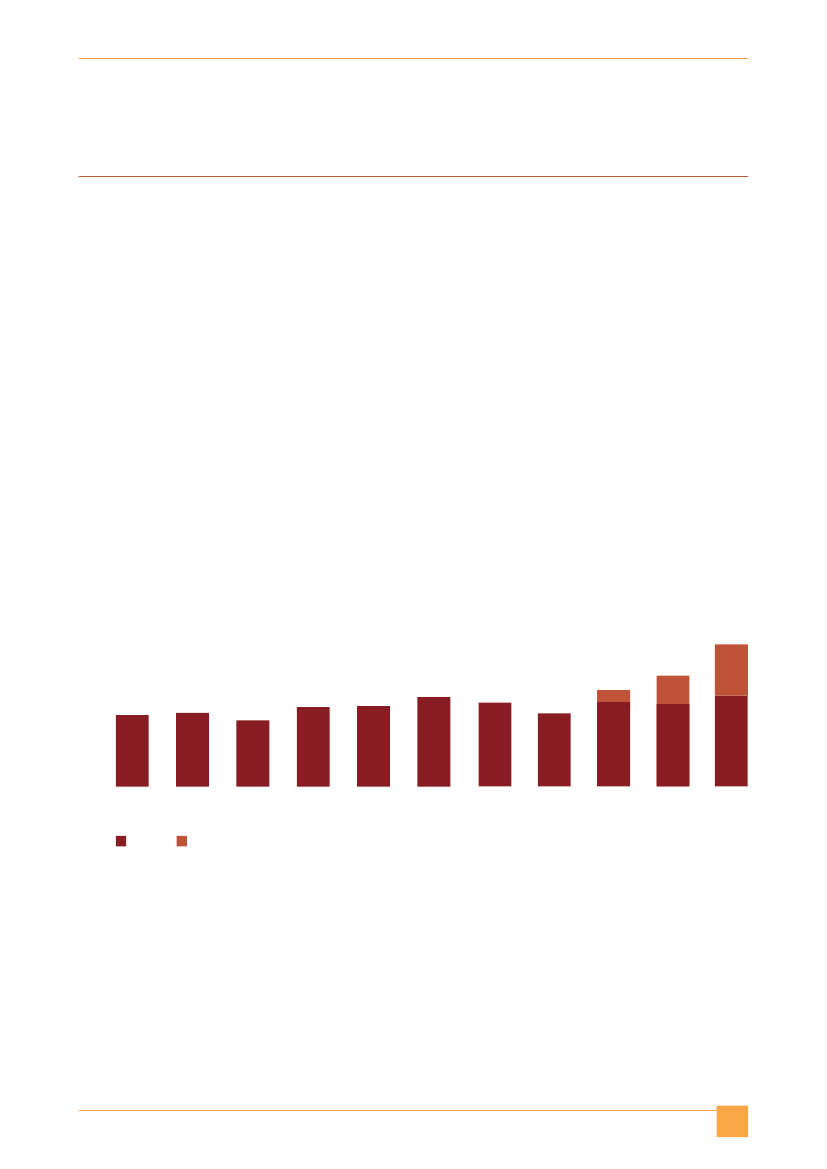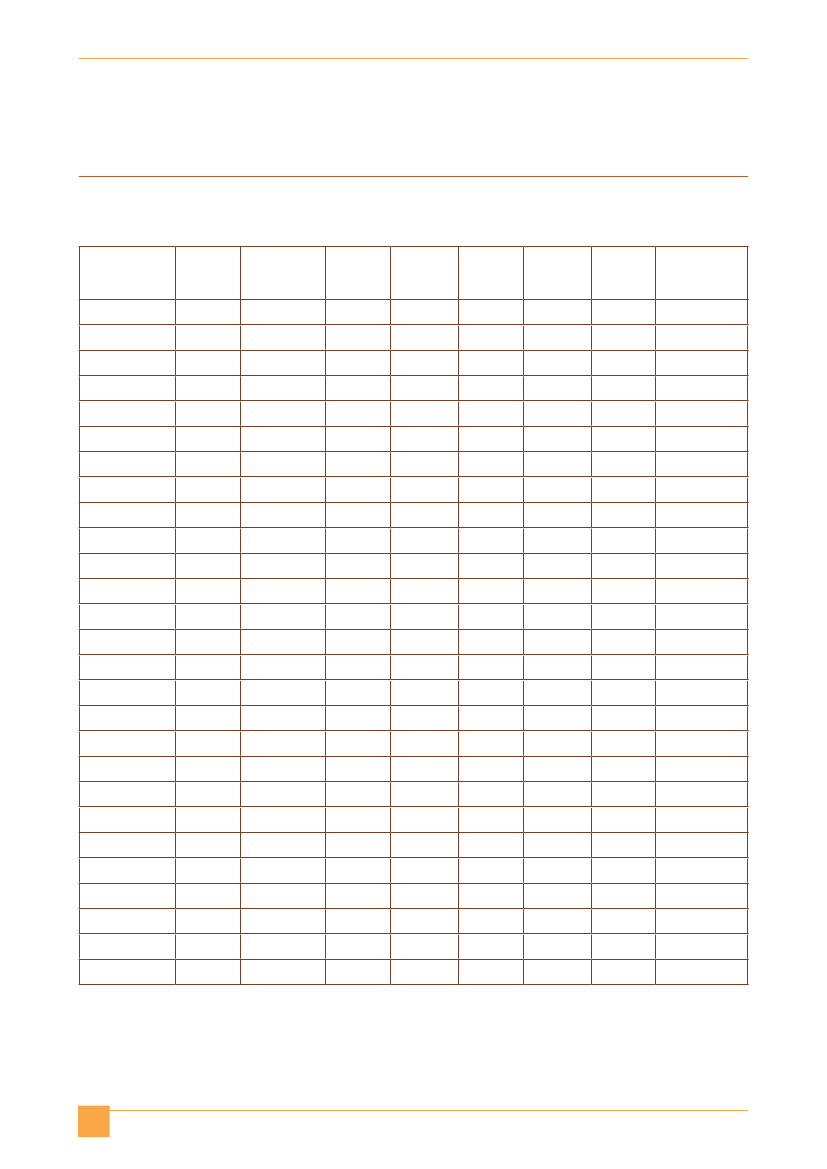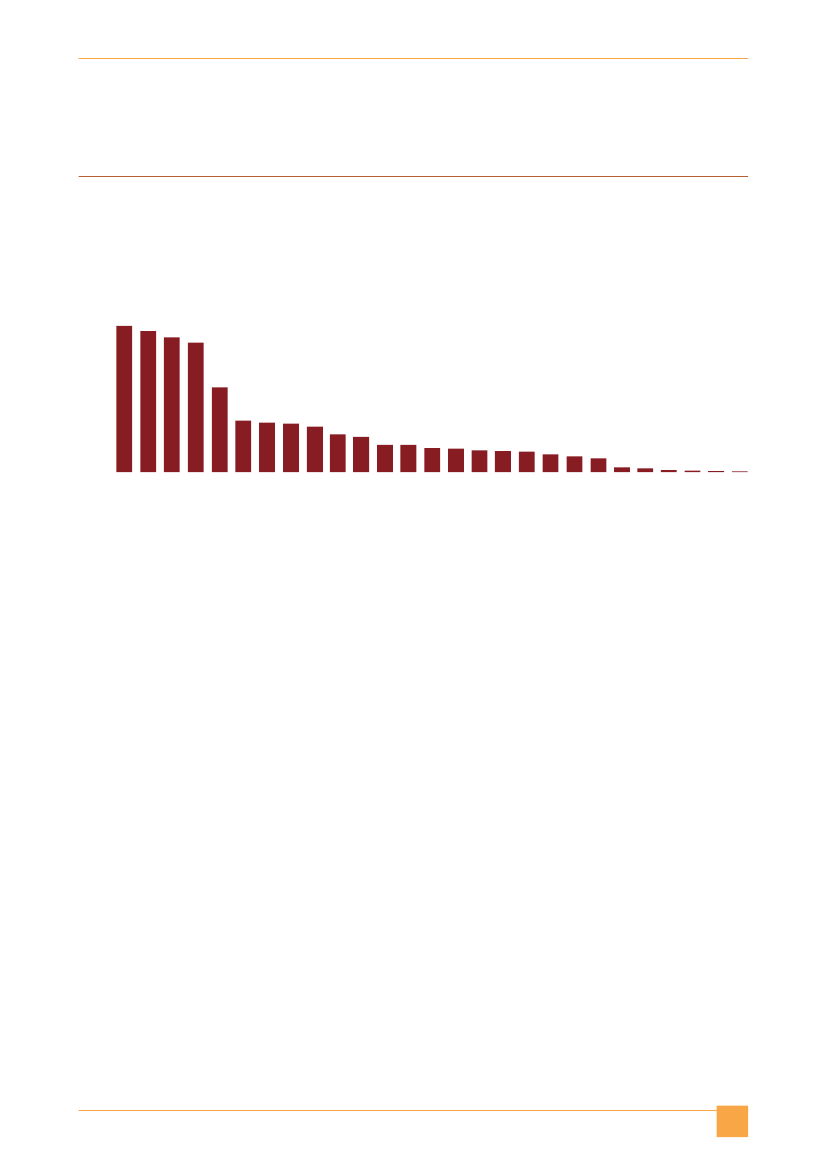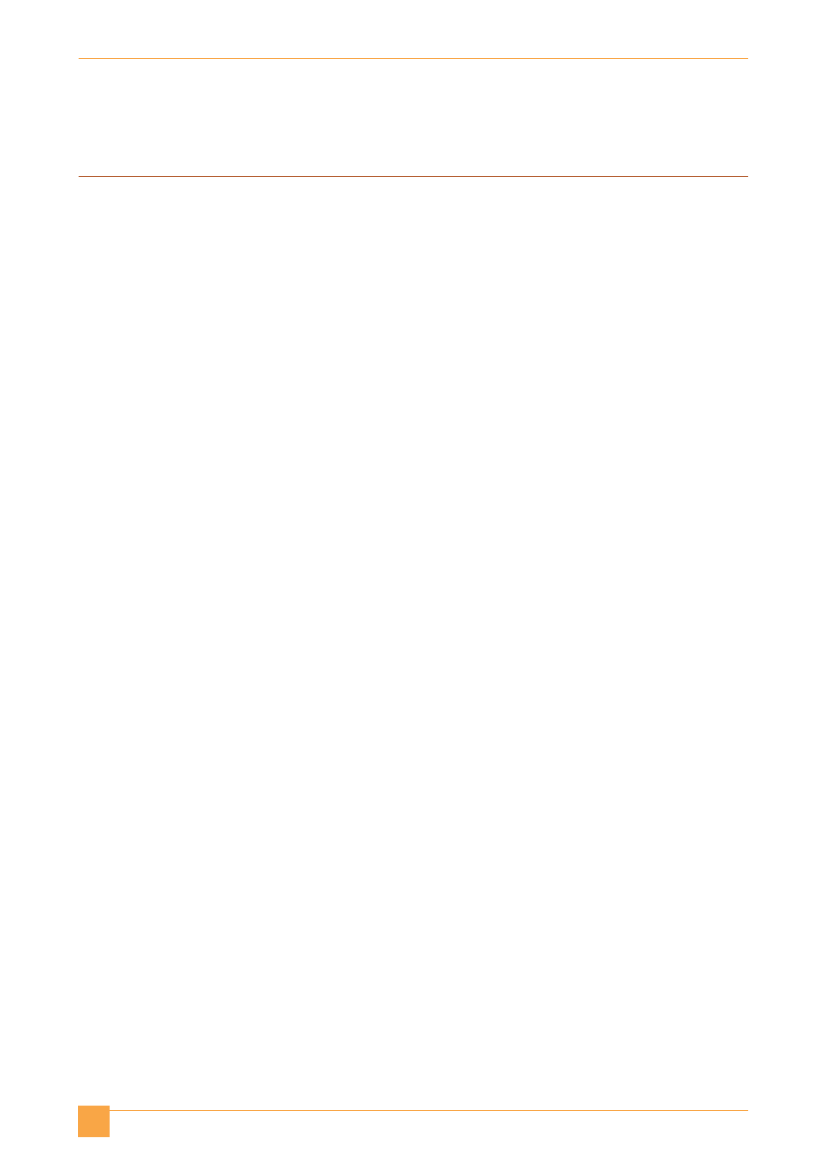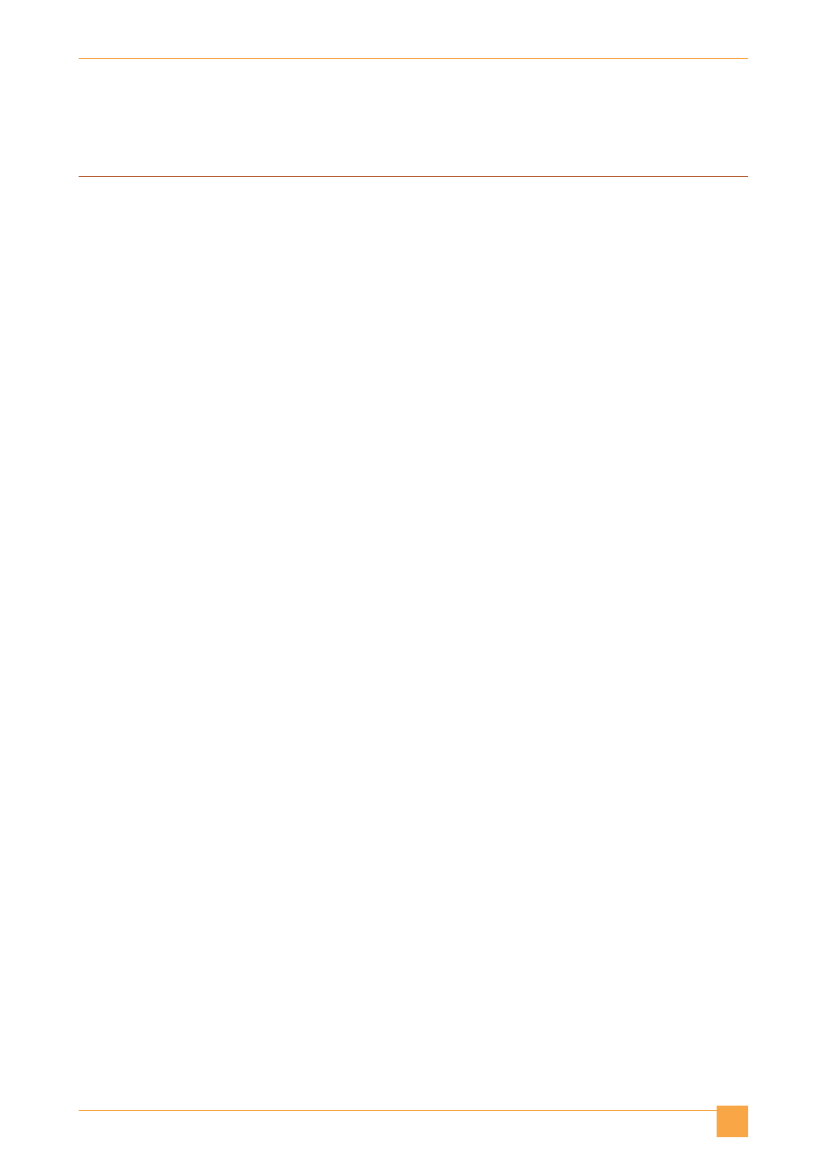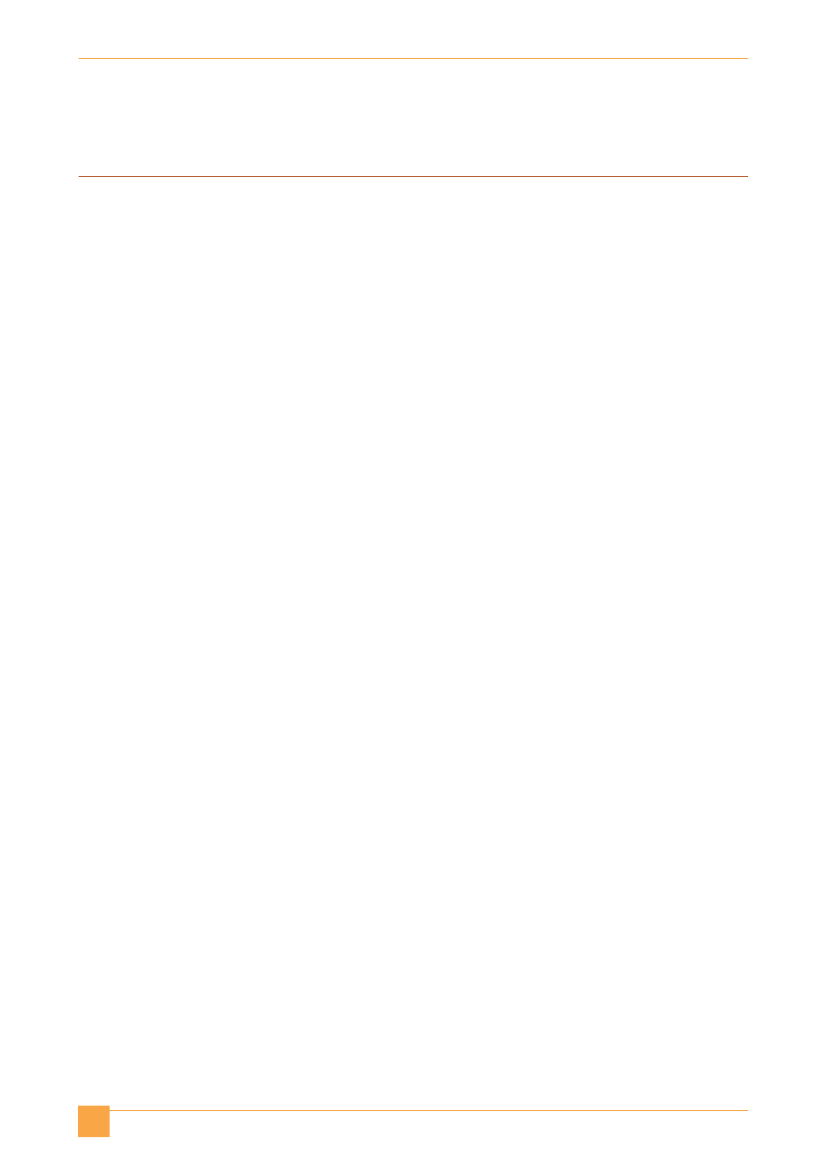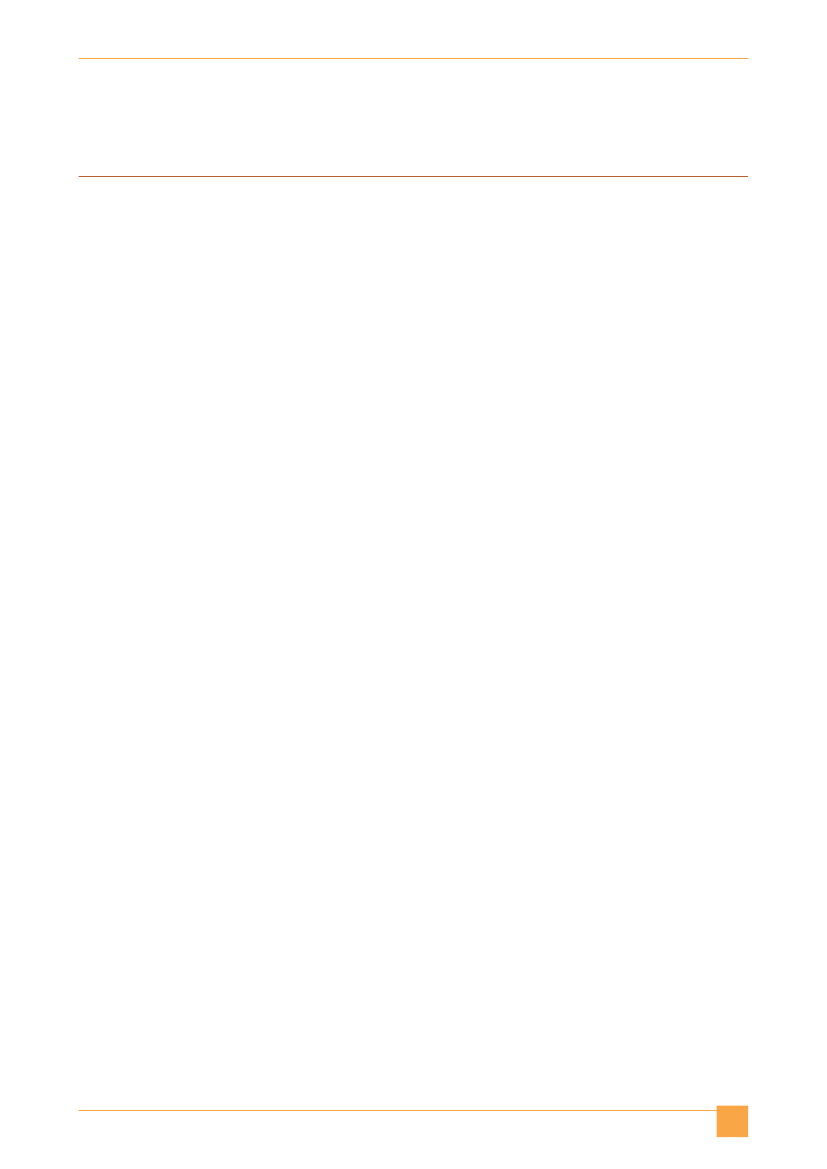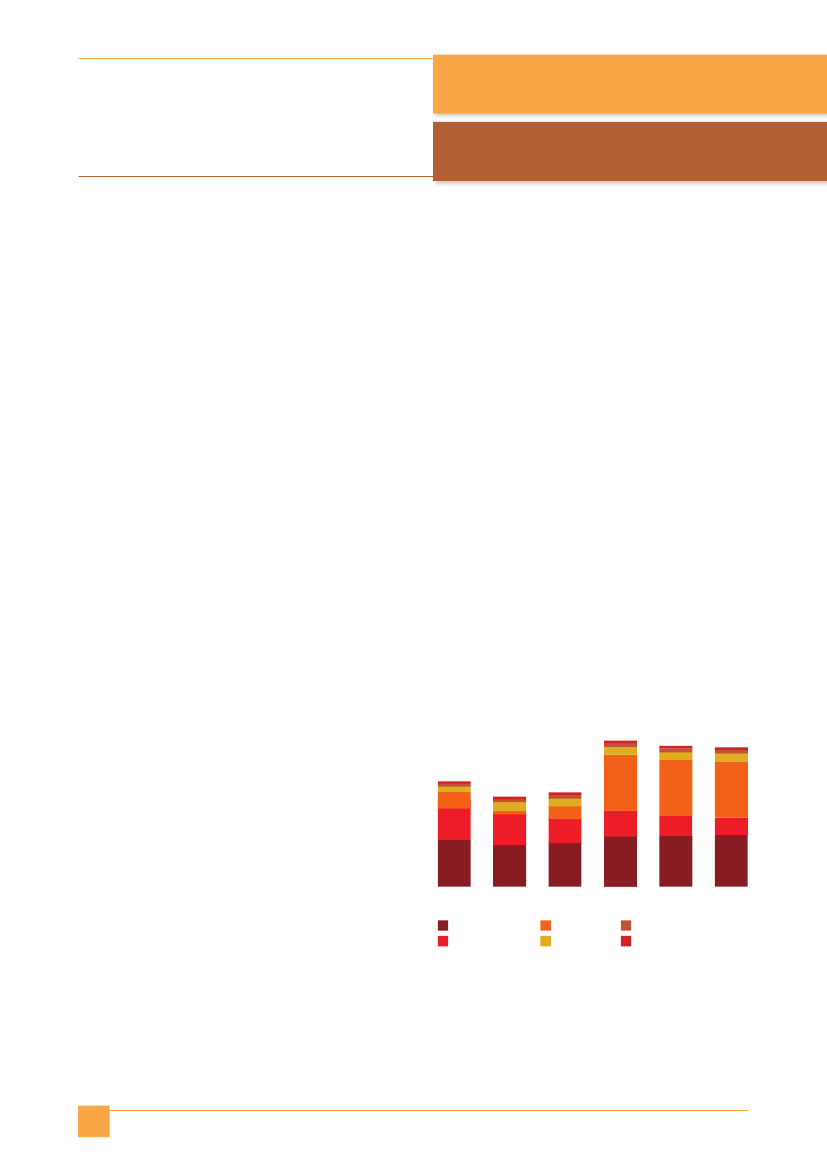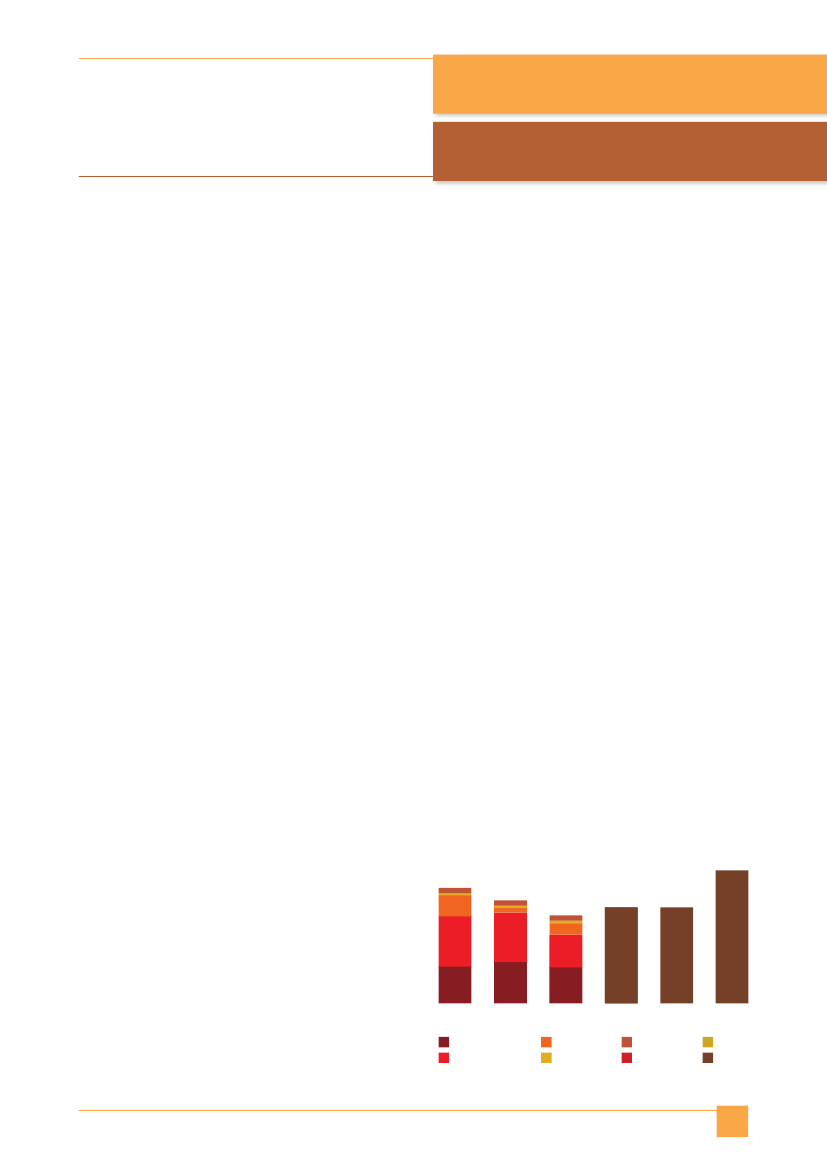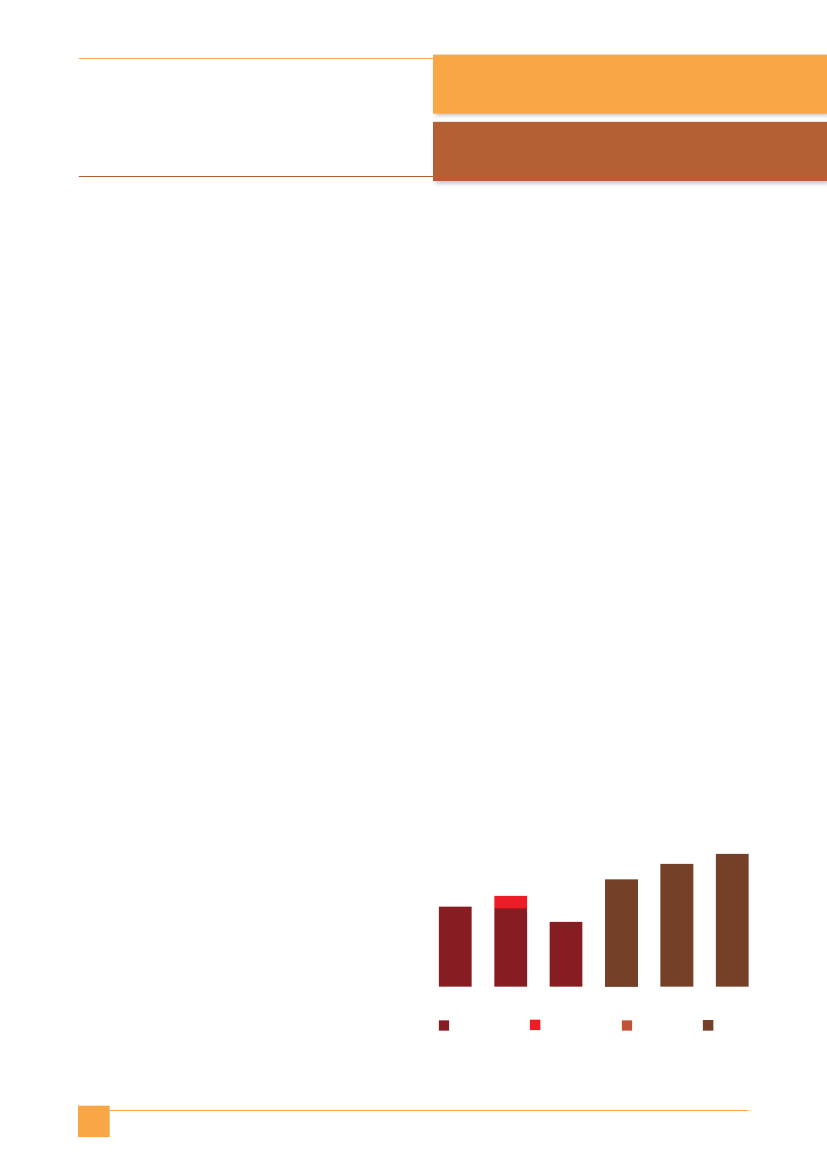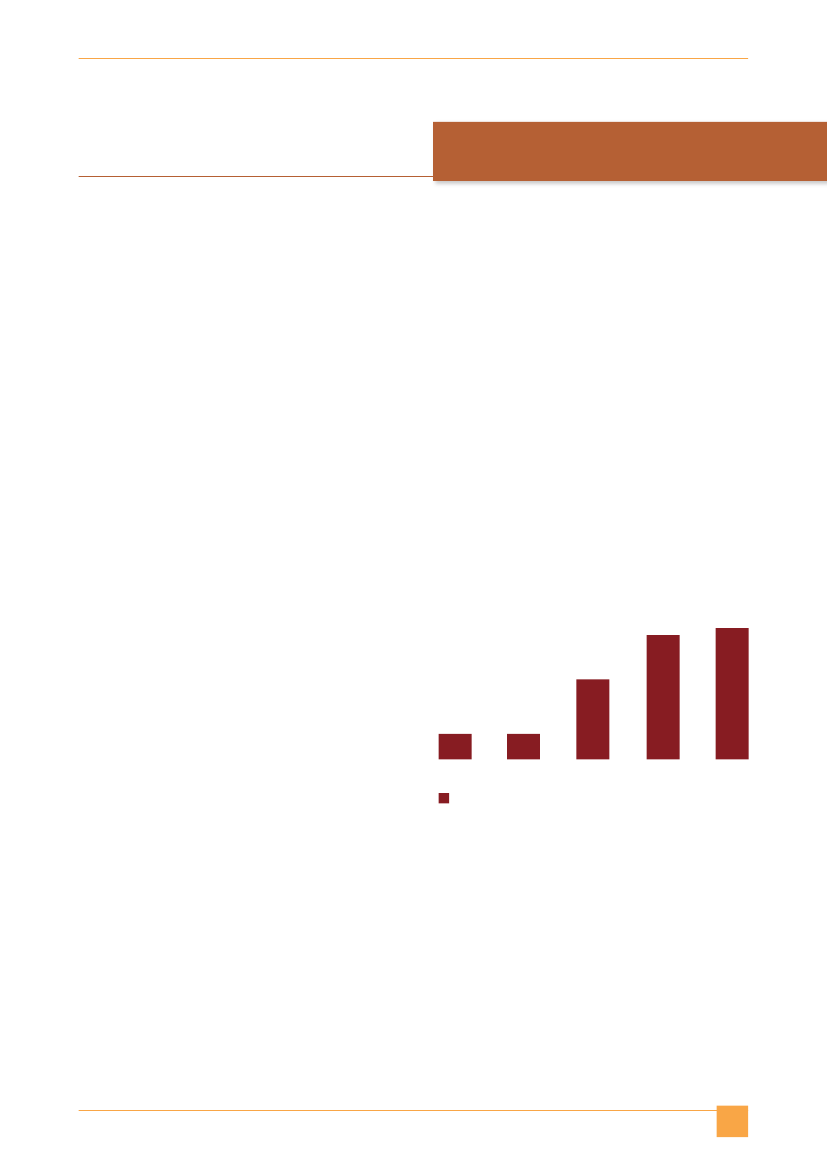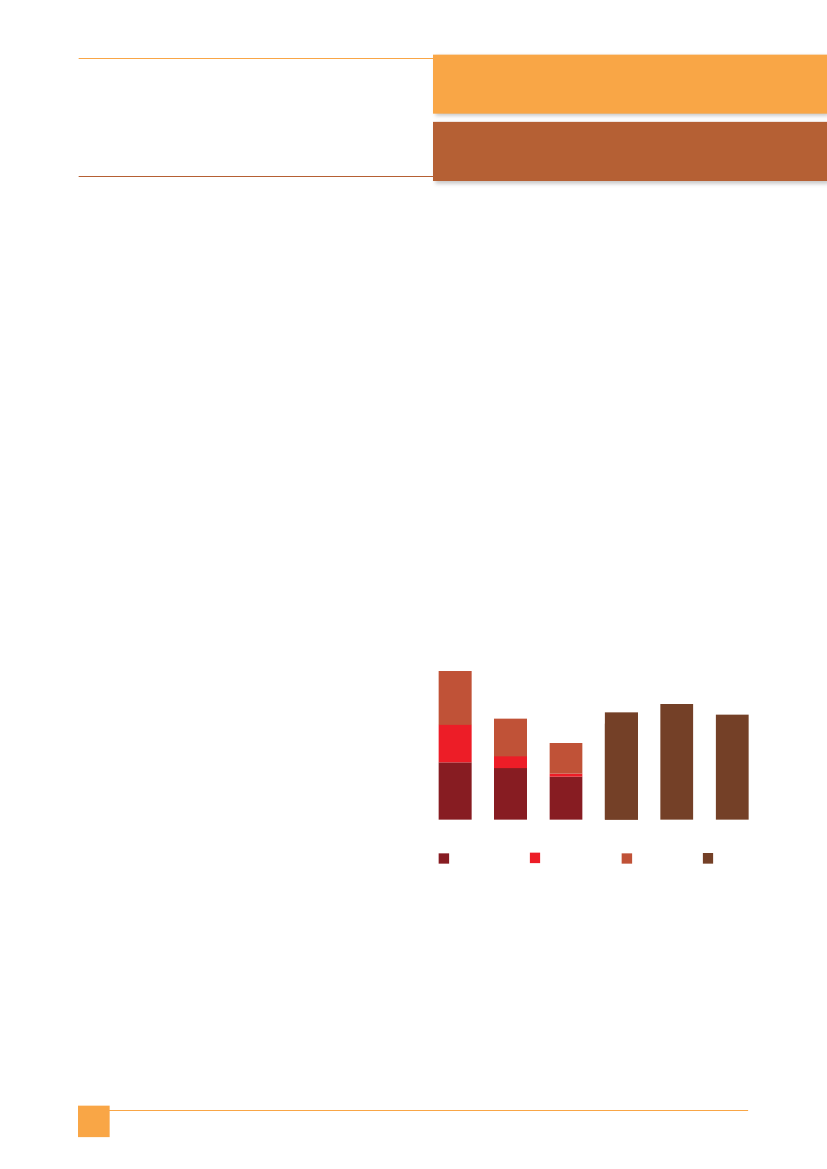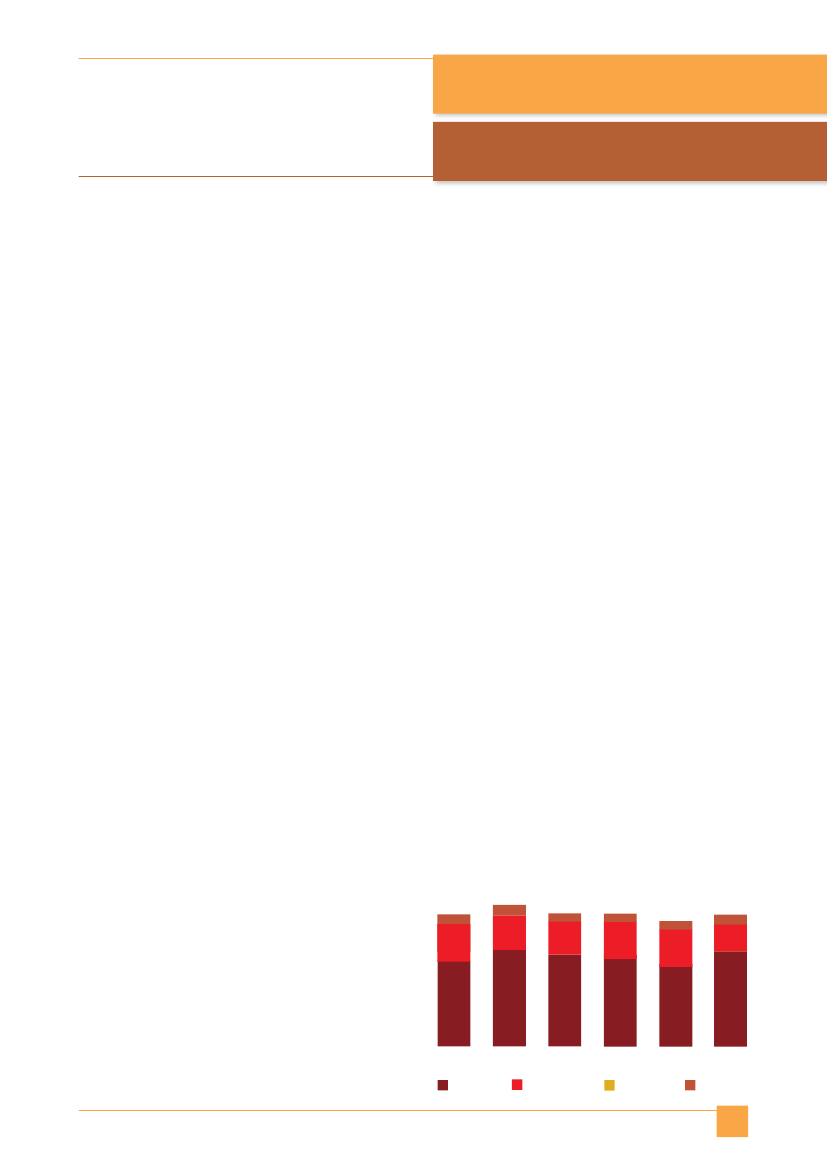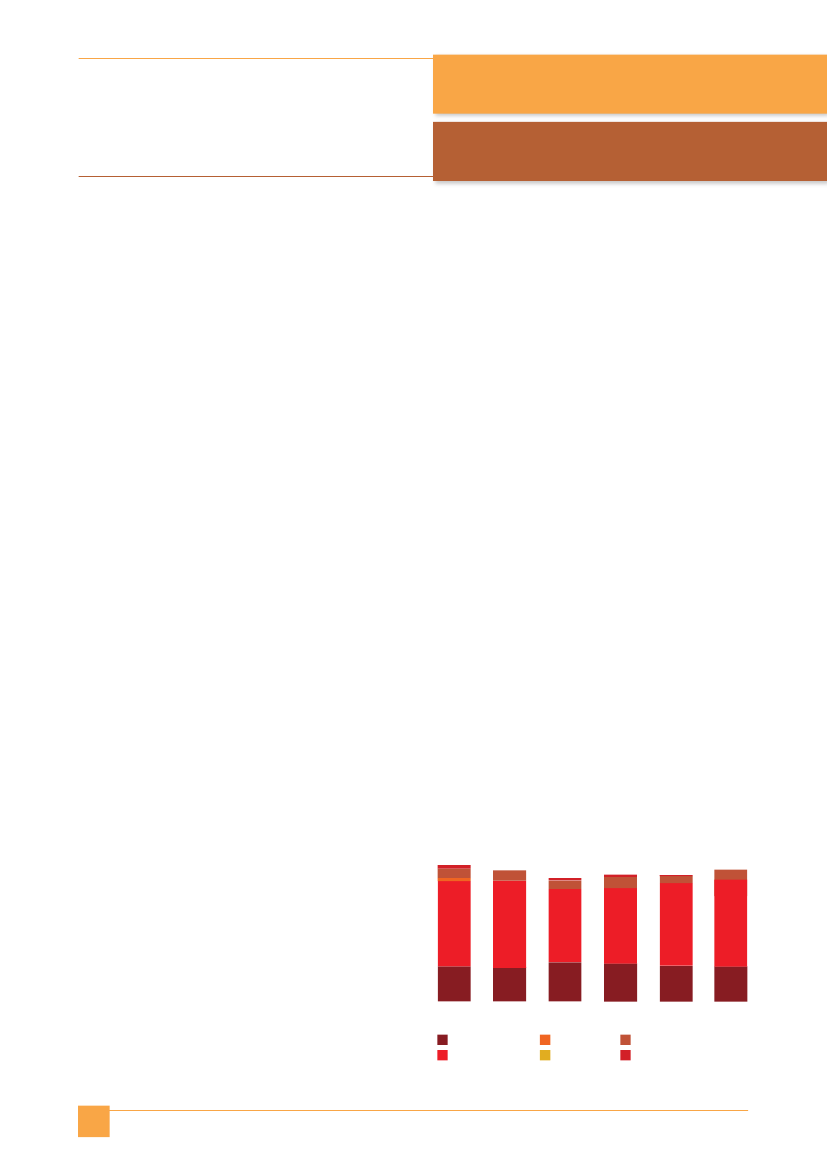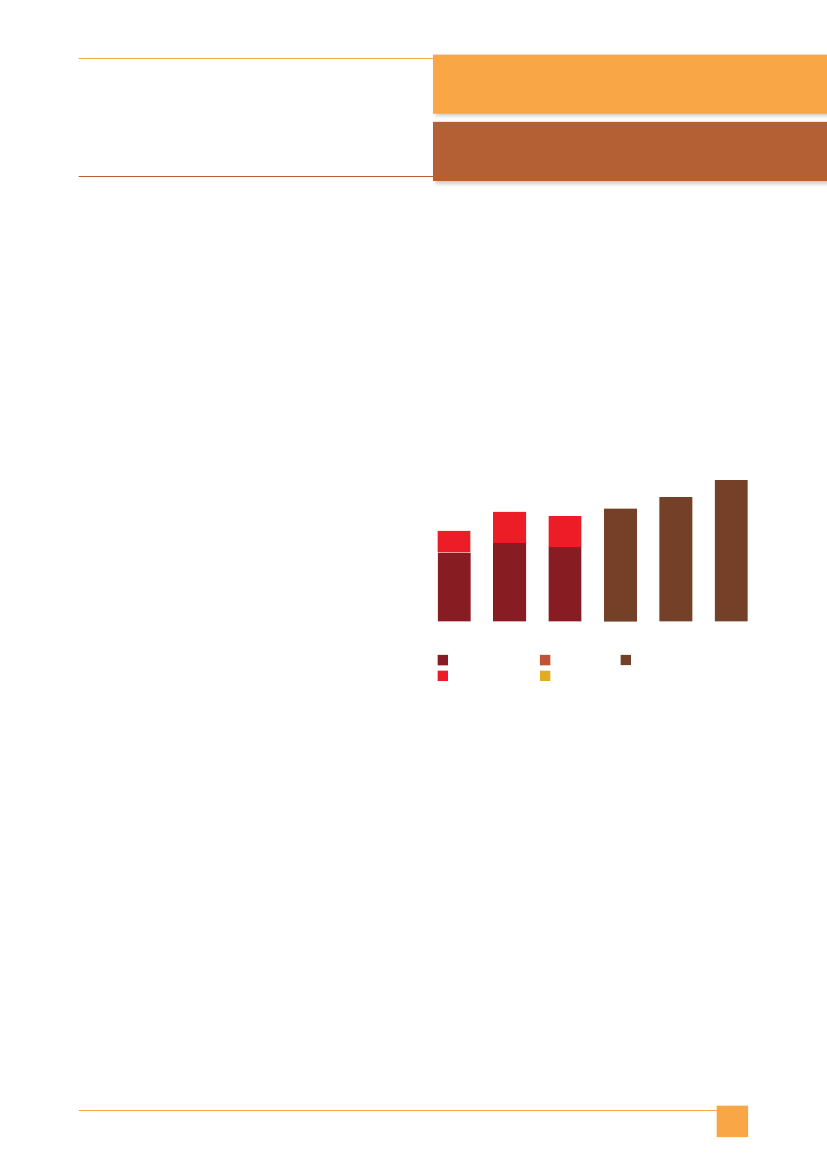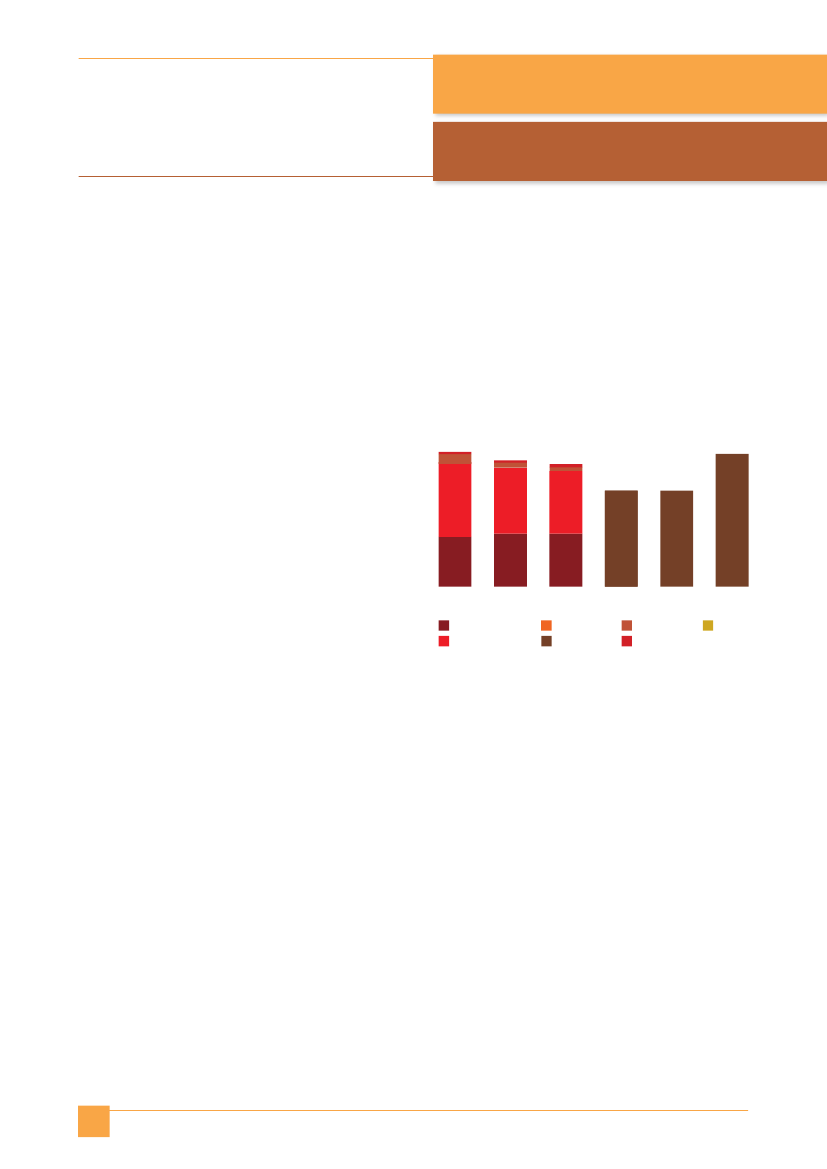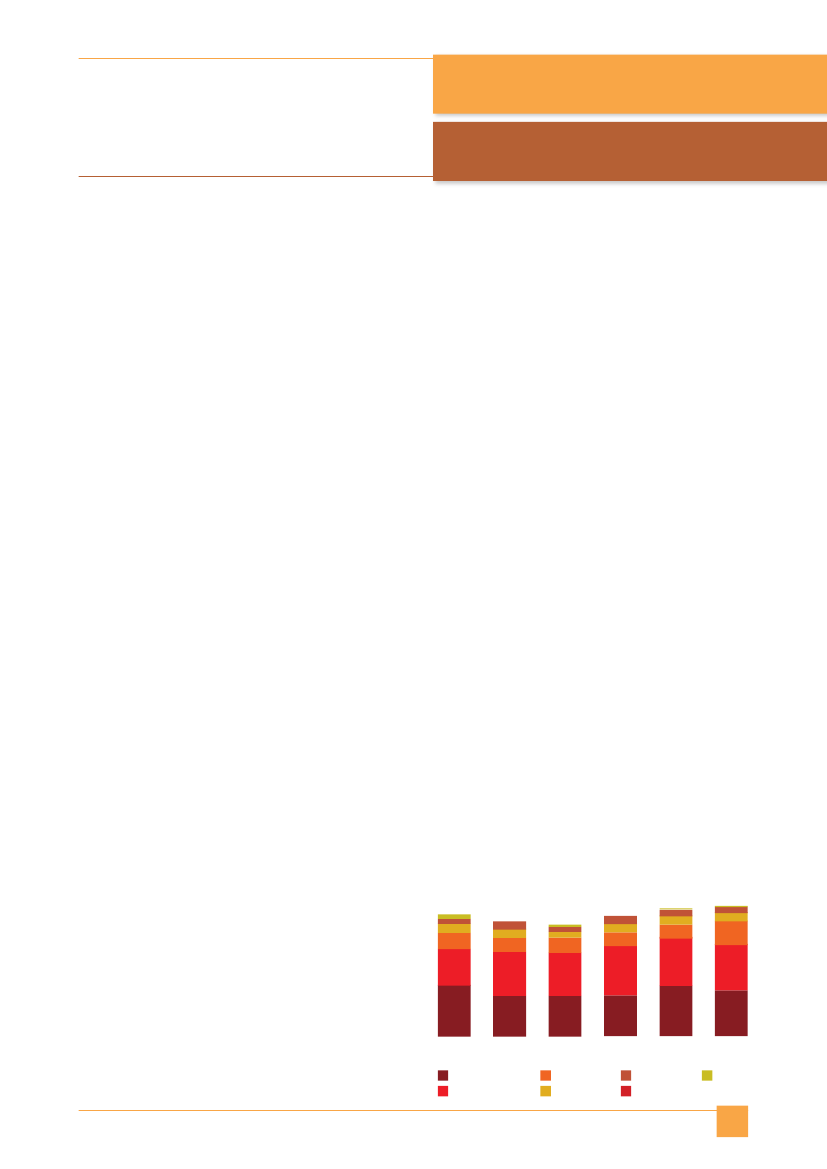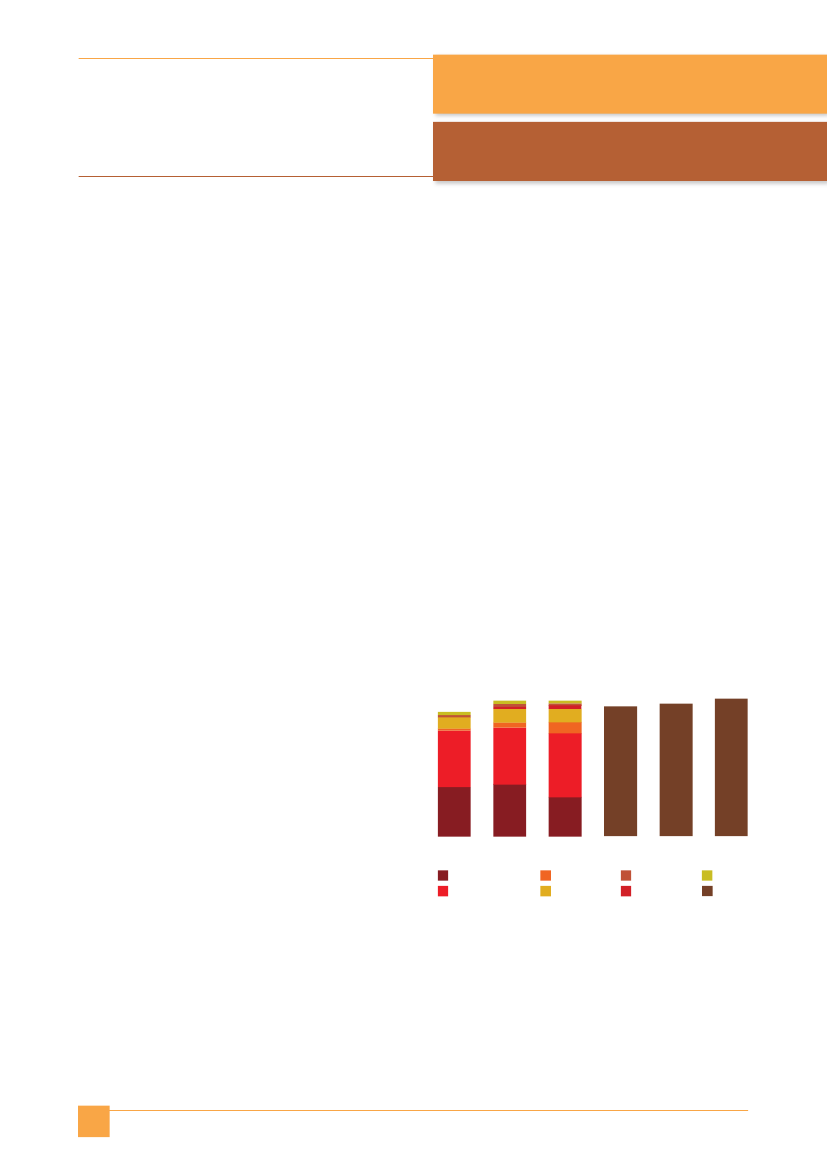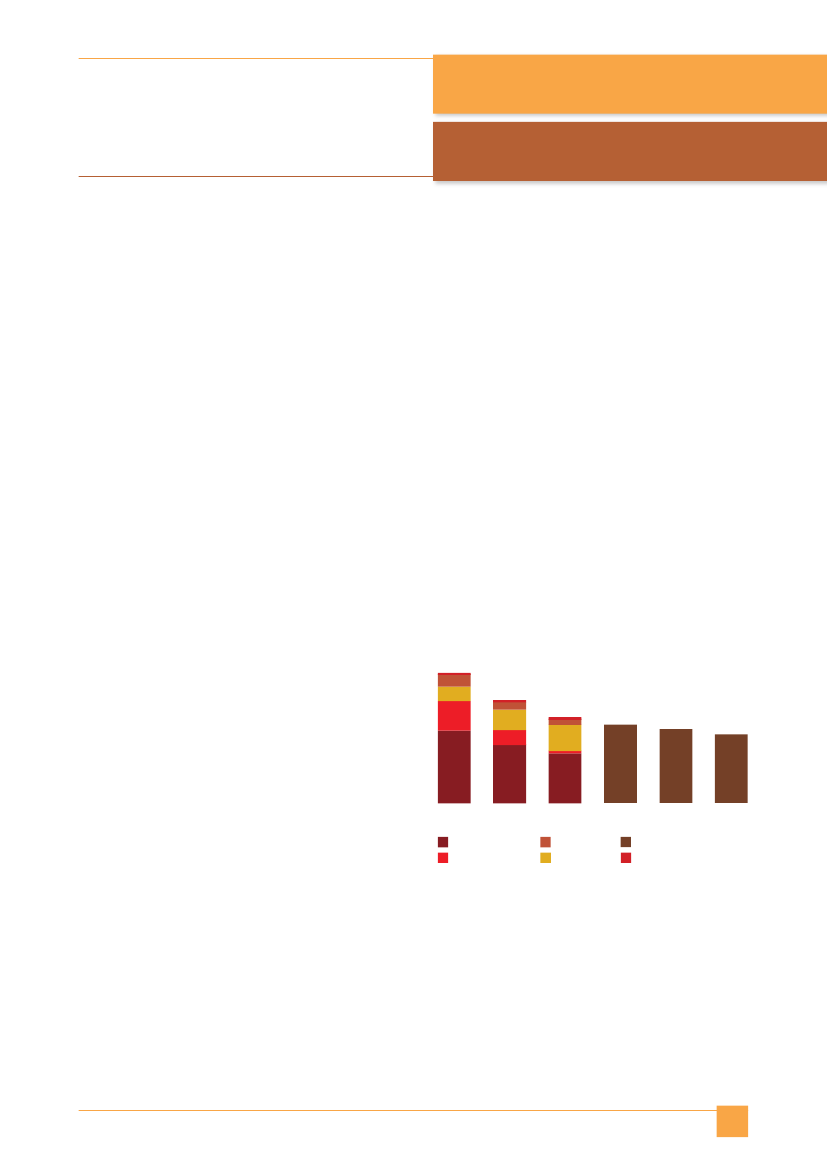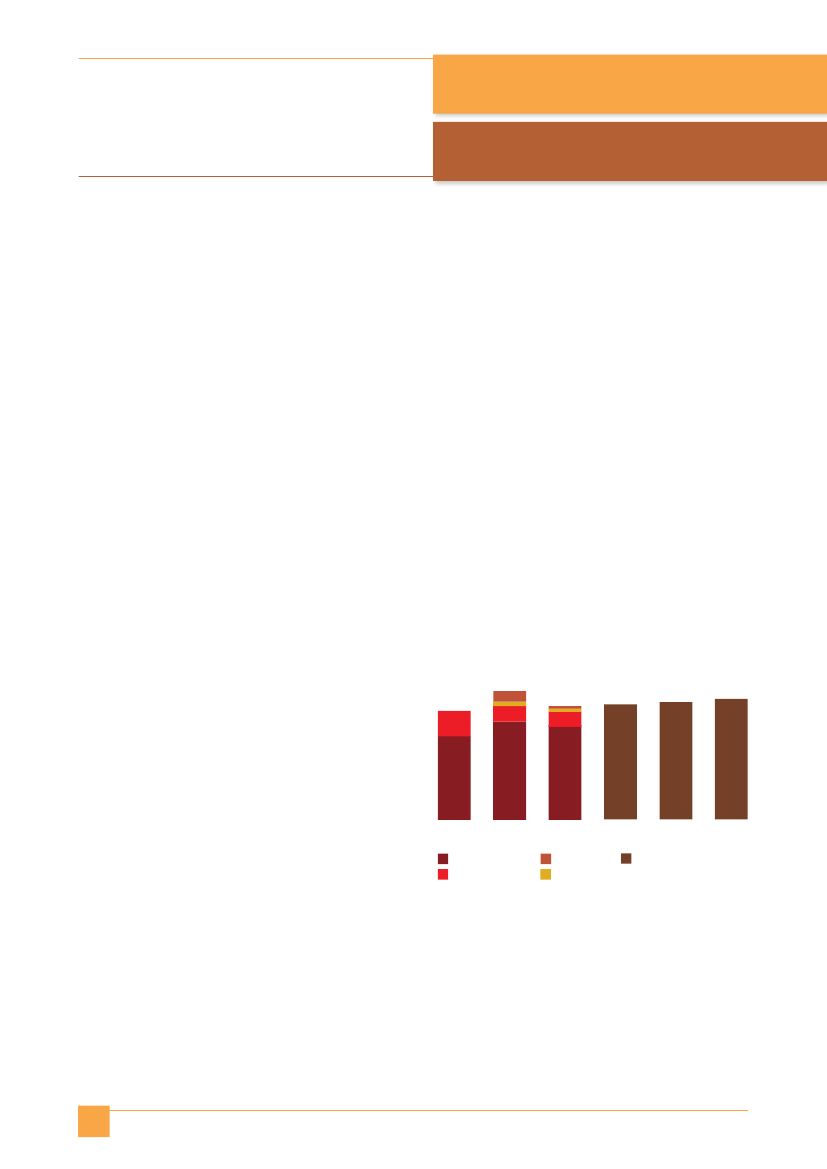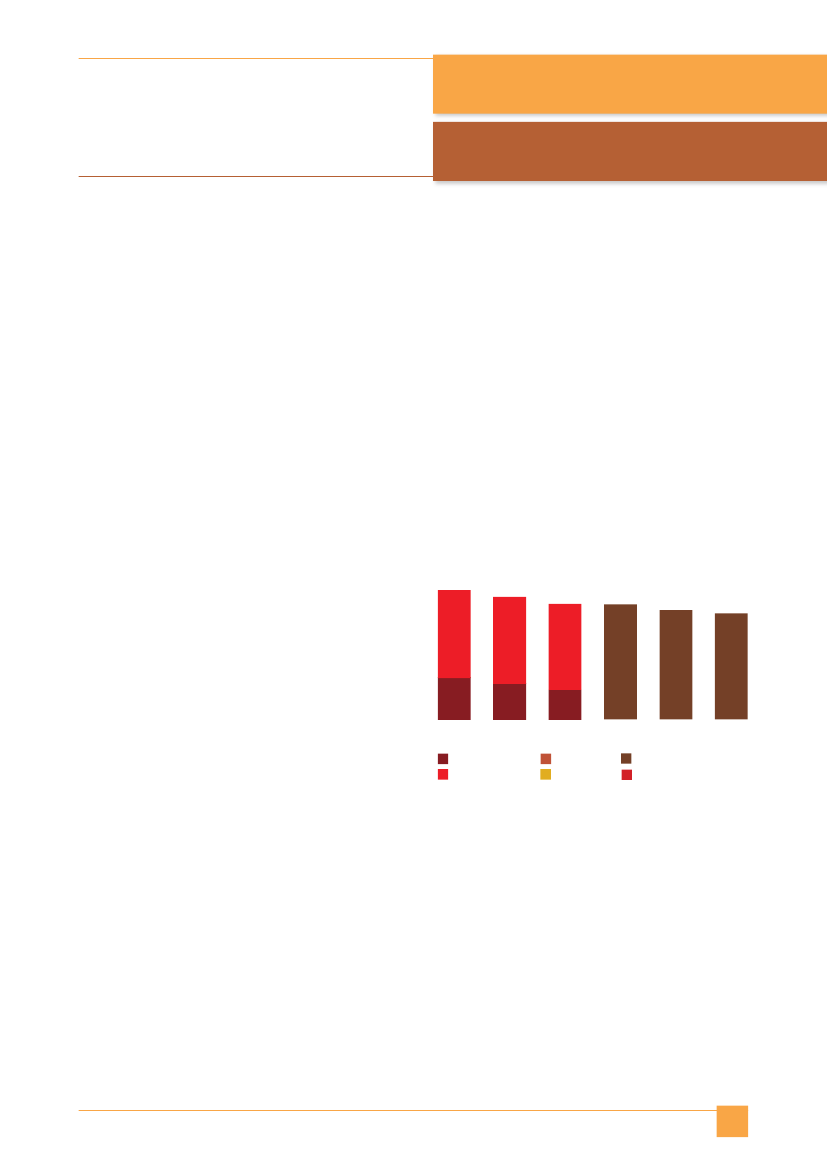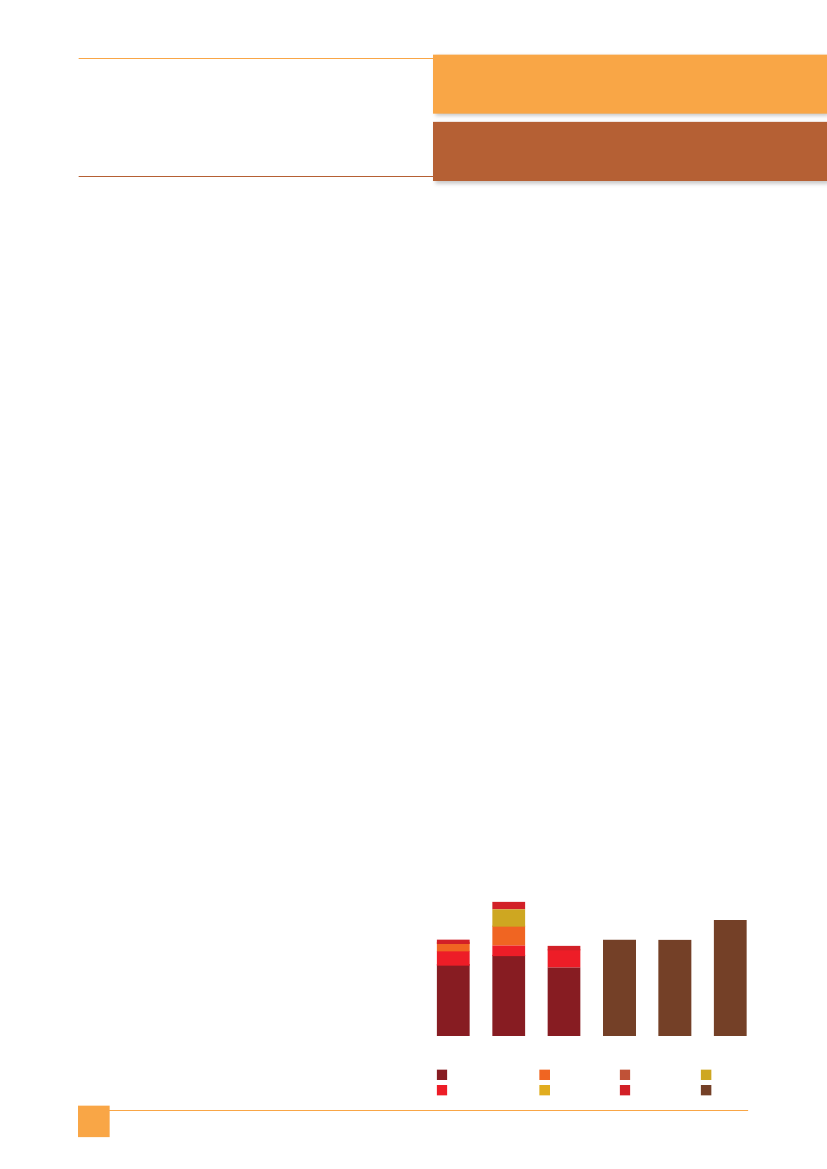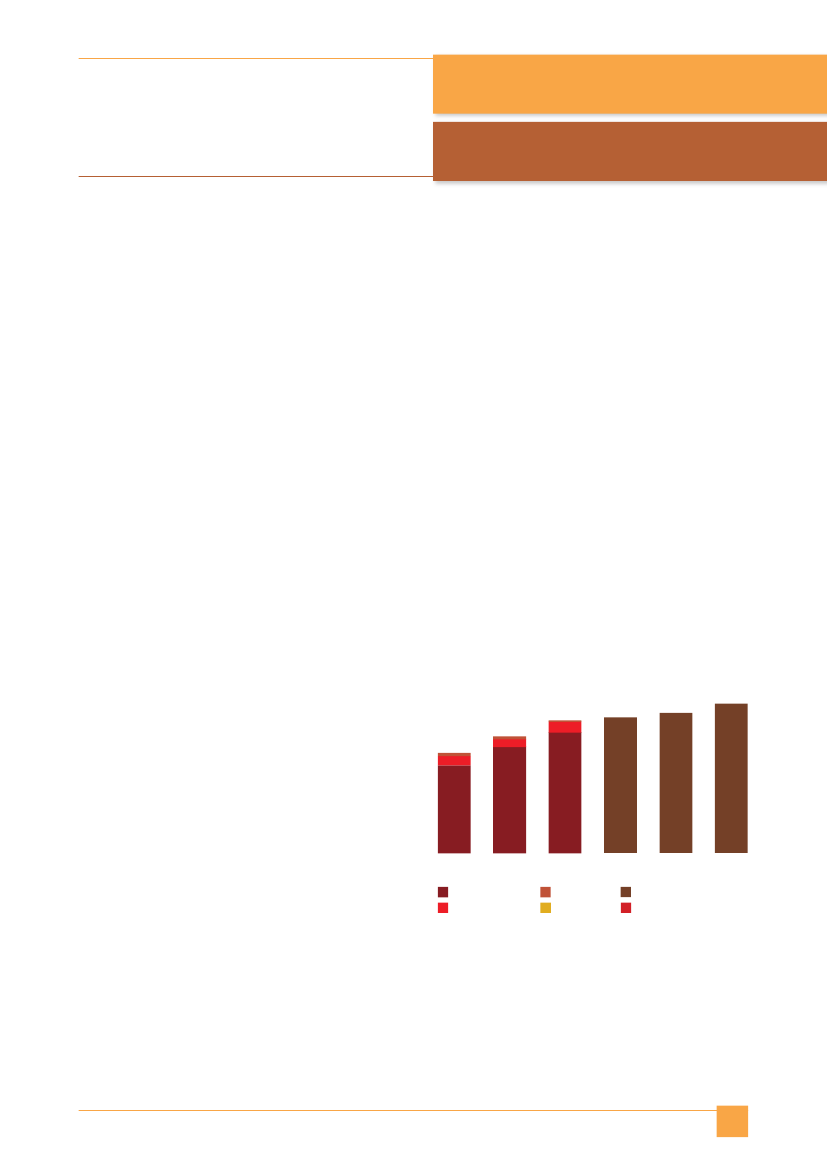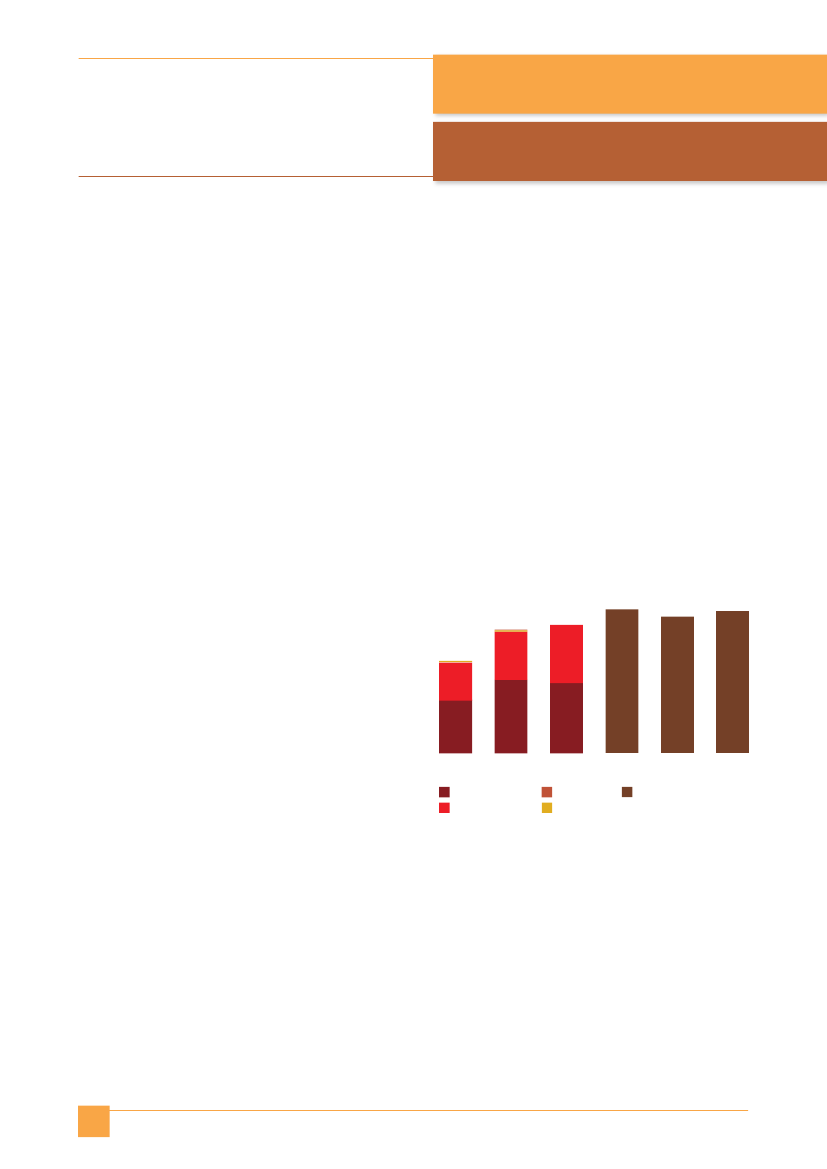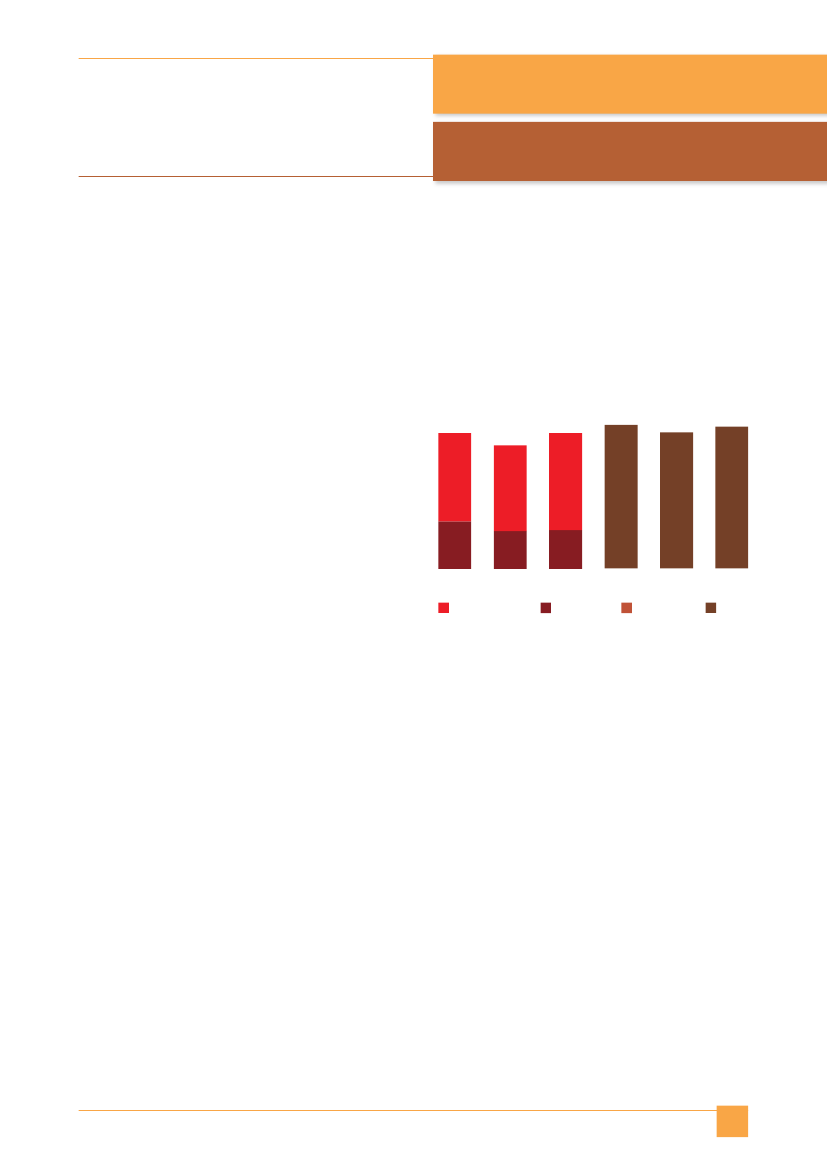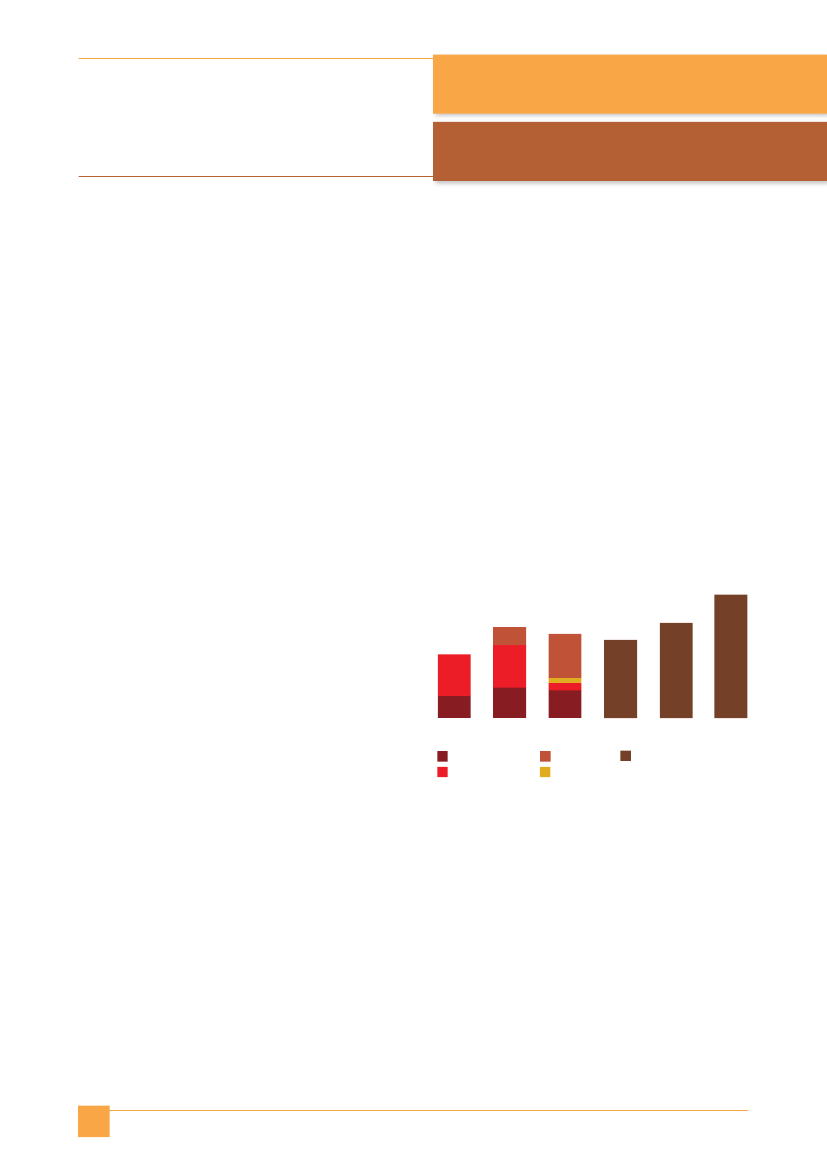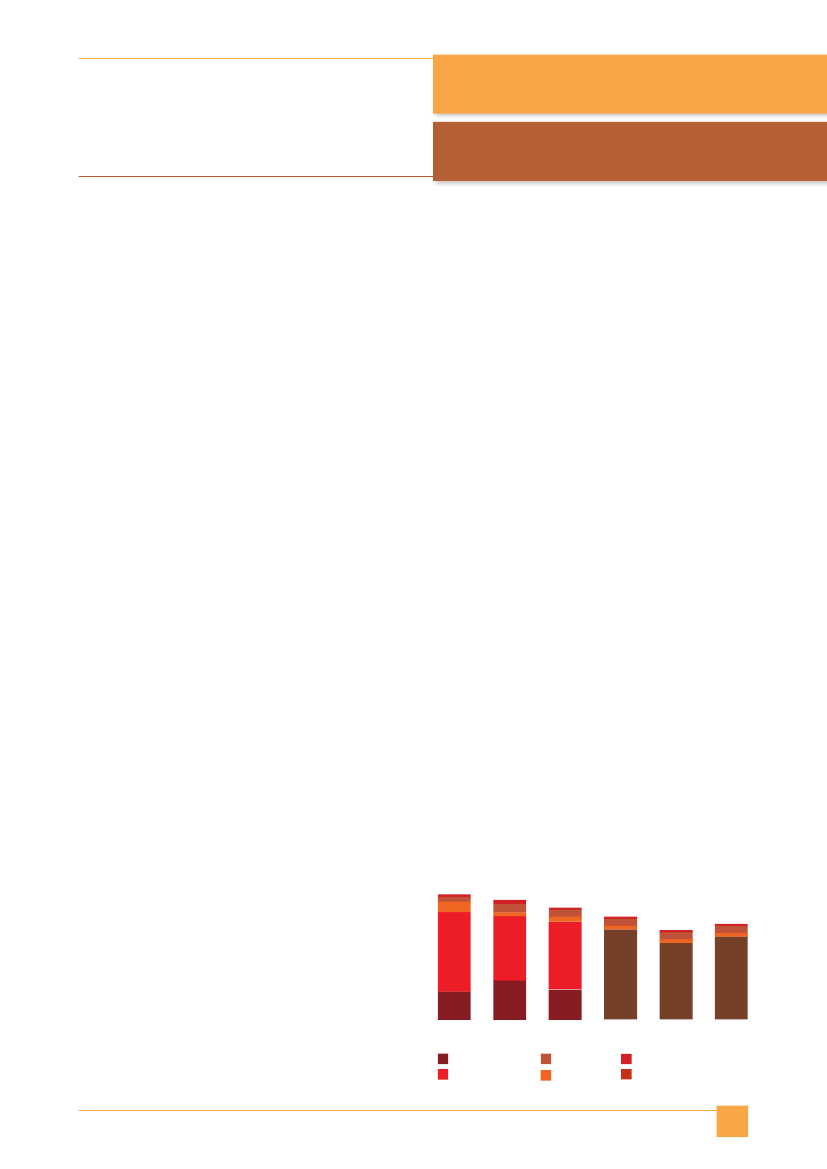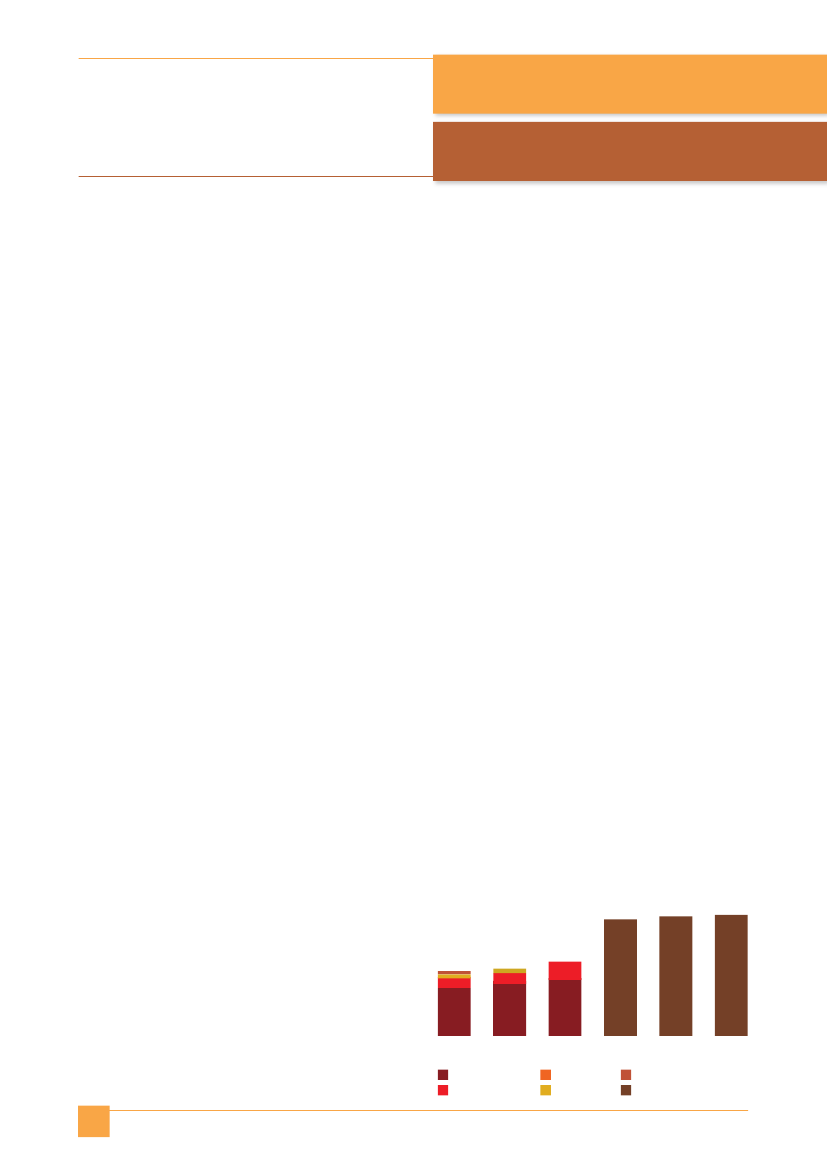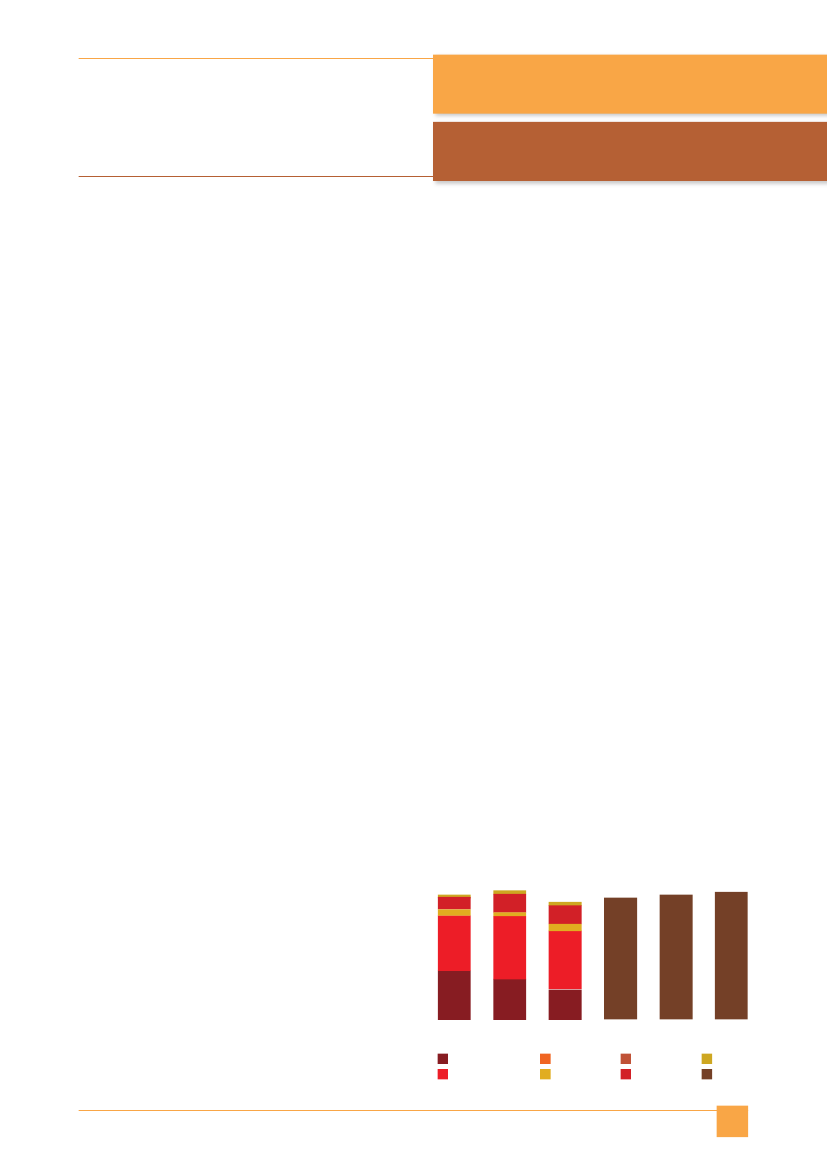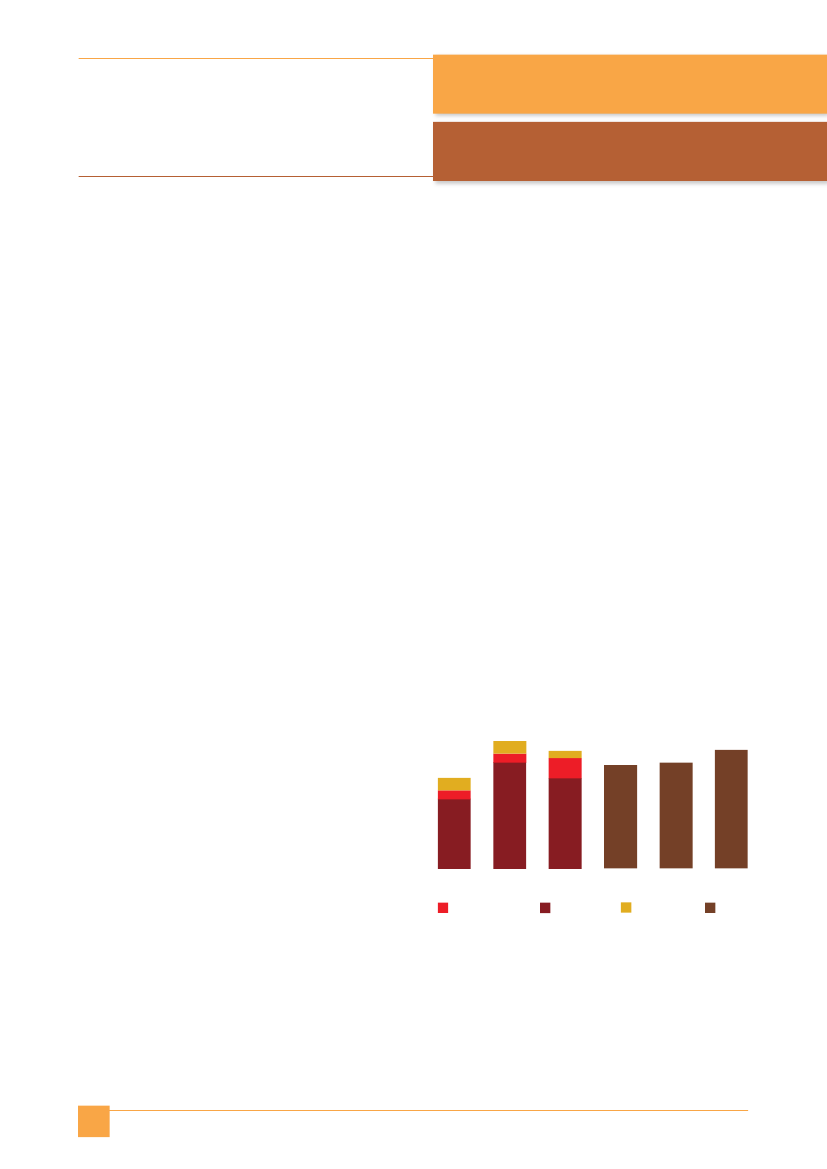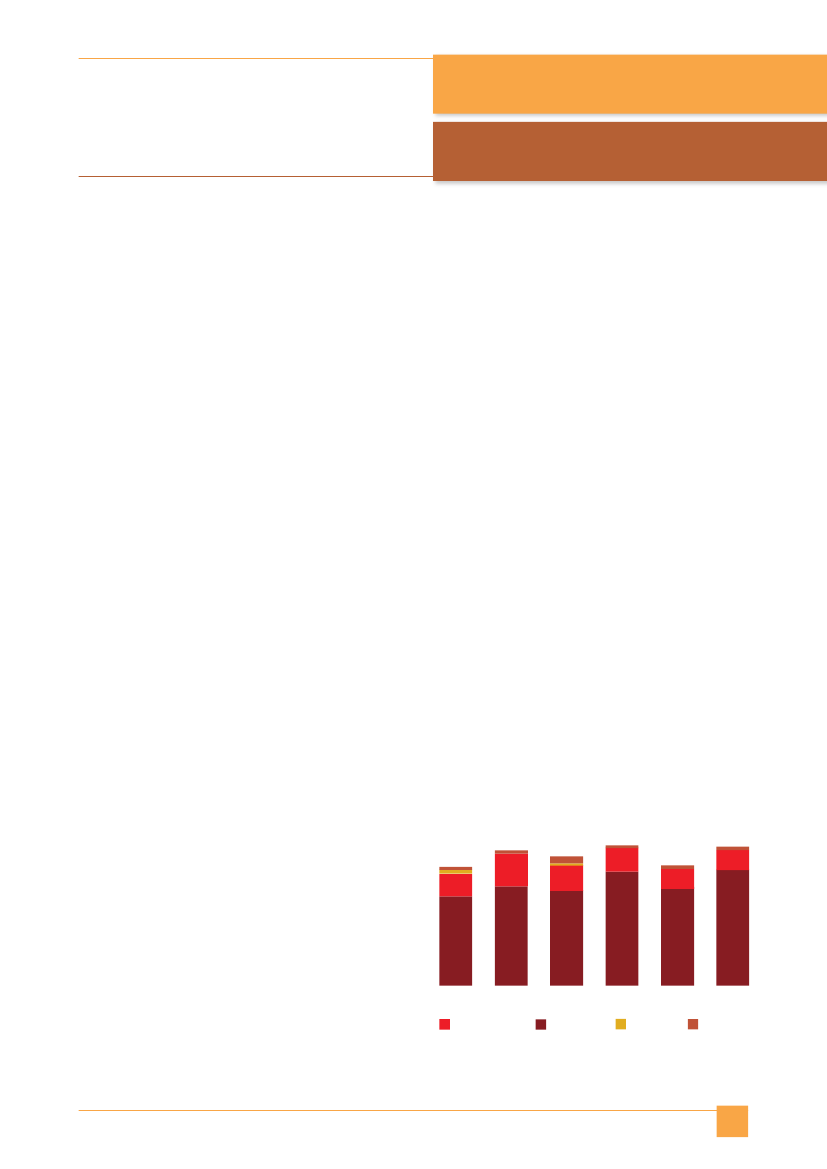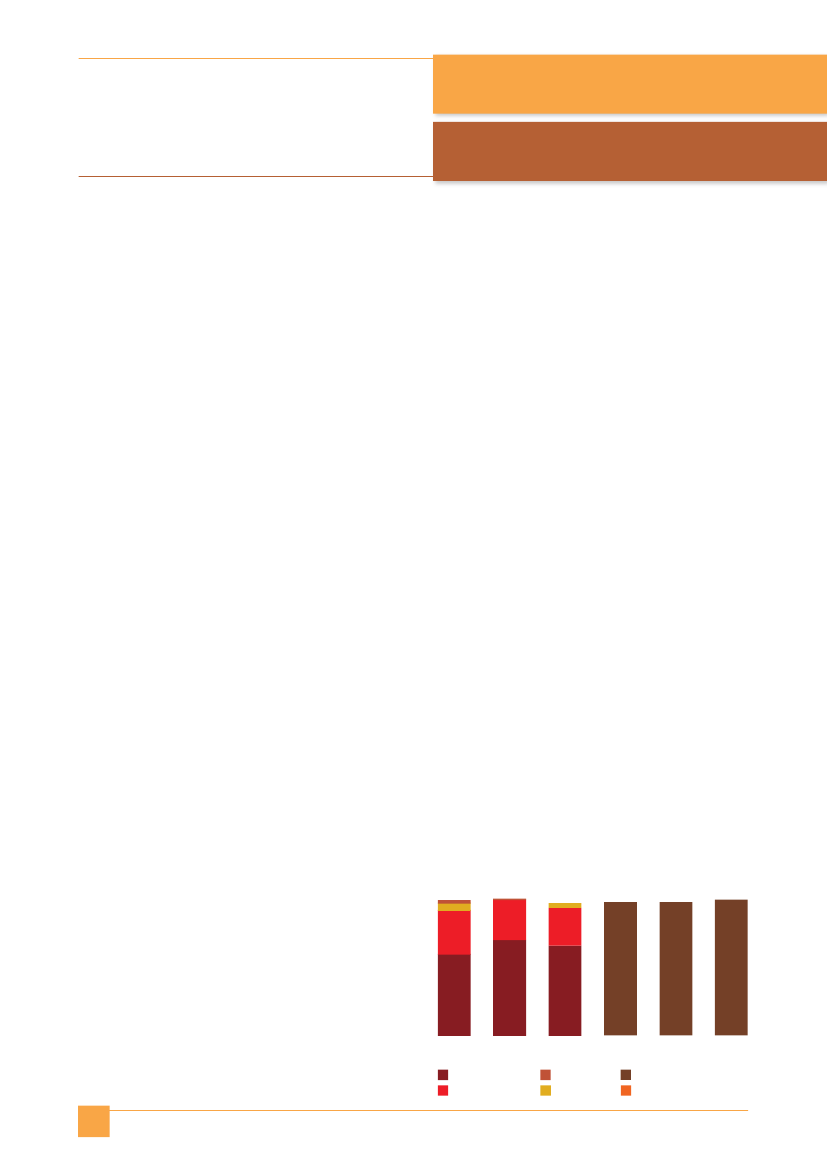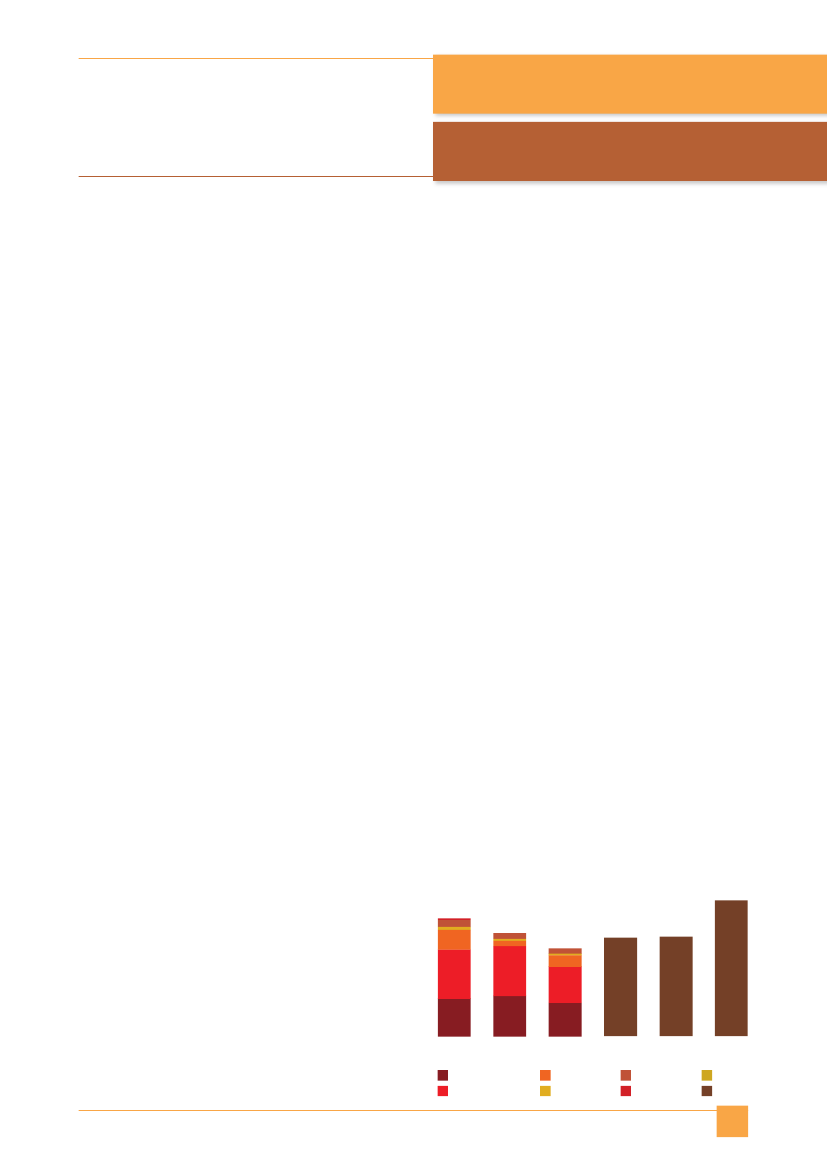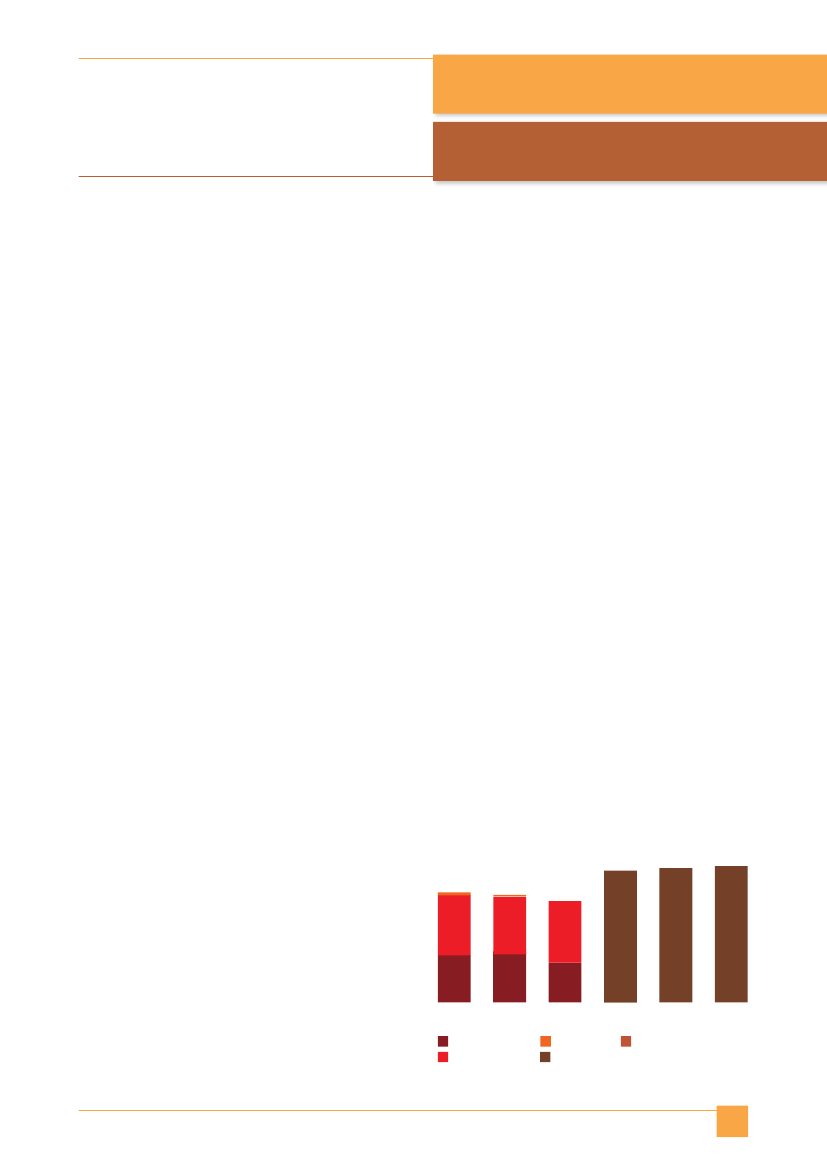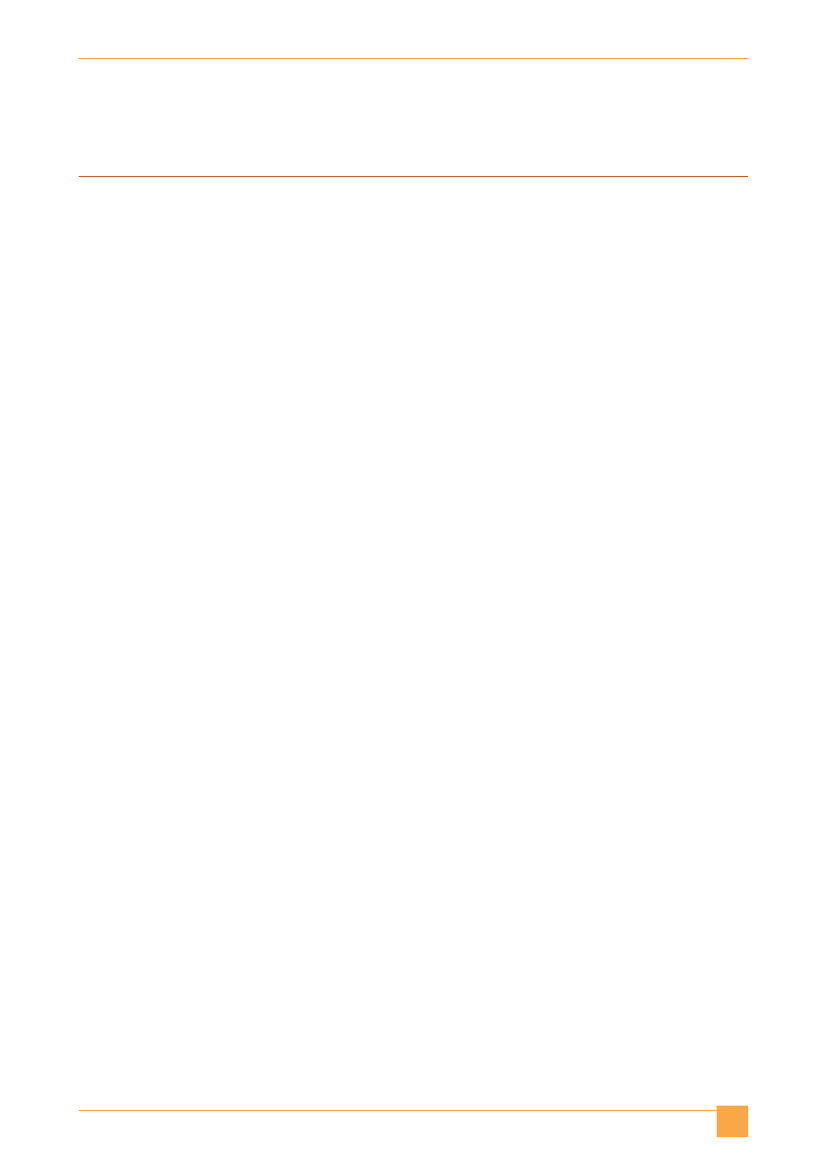Udenrigsudvalget 2013-14
URU Alm.del Bilag 16
Offentligt
AidWatch
20�3
THE UNIQUE ROLEOF EUROPEAN AIDThe fight againstglobal poverty
�
ACKNOWLEDGEMENTSABOUT THIS REPORTSince 2005, development NGOs from all the EU countries (now28) have come together every year through the AidWatch initia-tive, under the umbrella of CONCORD, to produce the annualAidWatch reports. CONCORD is the European NGO Confedera-tion for Relief and Development. Its 27 national associations,�7 international networks and two associate members repre-sent �,800 NGOs which are supported by millions of citizensacross Europe. CONCORD leads reflection and political action,and regularly engages in dialogue with the European institu-tions and other civil society organisations. At the global level,CONCORD is actively involved in the Beyond 20�5 campaign,the CSO Partnership on Development Effectiveness and the In-ternational Forum of NGO platforms.More at: www.concordeurope.org.AidWatch has monitored and made recommendations on thequality and quantity of aid provided by EU member states andthe European Commission since 2005. The AidWatch initiativecarries out ongoing advocacy, research, media activities andcampaigns on a wide range of aid-related issues throughoutthe year. More at: www.aidwatch.concordeurope.org.Report editing: Anna Thomas.Report writing and data analysis: Gideon Rabinowitz and JavierPereira.The AidWatch Advocacy Group has given overall guidanceand made substantial inputs to the writing of the report. Thegroup includes: Amy Dodd (UKAN), Jennifer Young (Bond),Luca De Fraia (ActionAid), Pauliina Saares (Kepa), CatherineOlier (Oxfam), Jeroen Kwakkenbos (Eurodad), Peter Sörbom(Concord Sweden), Liz Steele (PWYF), Fotis Vlachos (HellenicCommittee of NGOs) and Wiske Jult (��.��.��.).The writers of the Country pages were: Austria: Globale Ve-rantwortung – Michael Obrovsky, Hilde Wipfel and JakobMussil; Belgium: CONCORD Belgium – Oumou Zé, Koen De-tavernier and Griet Ysewyn; Bulgaria: BPID – Ventzislav Kirkov;Cyprus: CYINDEP – Michalis Simopoulos, Sophia Arnaouti andKerstin Wittig; Croatia: Tihomir Popovic and Gordan Bosana;Czech Republic: FoRS – Jana Milerova, Zuzana Sikova; Den-mark: CONCORD Denmark – Mathias Ljørring; Estonia: AKÜ– Evelin Andrespok; Finland: Kehys – Pauliina Saares andReetta Hahlen; France: Coordination SUD – Gautier Centlivre;Germany: VENRO – Jana Rosenboom; Greece: Hellenic Com-mittee of NGOs – Marina Savrami and Fotis Vlachos; Hungary:HAND – Réka Balogh; Ireland: Dóchas – Hans Zomer; Italy:CONCORD Italy – Luca De Fraia and Francesco Petrelli; Latvia:Lapas – Evija Goluba; Lithuania: LU – Julius Norvila; Luxem-burg: Cercle – Christine Dahm; Malta: SKOP – Paola Prinzis;Netherlands: Partos – Mieke Olde Engberink and Koos de Bru-ijn; Poland: Grupa Zagranica – Jan Bazyl; Portugal: PlataformaONGD – Pedro Cruz; Romania: Fond – Adela Rusu and AdrianaZaharia; Slovakia: MVRO – Andrea Girmanova, Lenka Nemcovaand Nora Benakova; Slovenia: SLOGA – Anita Ramsak, AnaKalin and Marjan Huc; Spain: CoNgDe – Cristina Linaje; Swe-den: CONCORD Sweden – Peter Sorbom; UK: Bond – JenniferYoung, Amy Dodd and Joanna Rea.The positions taken in this report are thoseof CONCORD AidWatch.Copy-editing by Veronica Kelly.Design and layout by: www.atelier3�4.eu.For further information about this report:[email protected]
2
CONTENTSExecutive summaryPART ONE – OVERVIEWIntroductionChapter � – The unique role of aidChapter 2 – Aid effectivenessChapter 3 – The quantity of genuine aidRecommendationsPART TWO – COUNTRY PAGESAppendix � – Inflated aid: notes on methodologyAppendix 2 – Acronyms4679�4�823245455
3
EXECUTIVE SUMMARYIn these challenging political and economic times, leadership onaid is needed more than ever. Unfortunately, however, Europe’sleadership appears to be waning – on the boundaries of aid, onits effectiveness, and on its quantity. This needs to change.This eighth Concord AidWatch Report focuses on the uniquerole of aid. It shows that, while all sources of finance are impor-tant for development, aid can achieve things that other sourcescannot.
Aid effectivenessIt might be expected that, under current economic pressures,the EU would be working hard to maximise the effectivenessof every cent of aid, and to lead the rest of the world in reach-ing the same objective. The evidence, disappointingly, is thatdespite the major Busan conference in December 20��, and theresulting Global Partnership for Effective Development Coop-eration (GPEDC), progress on aid effectiveness has slowed:•Only seven EU member states (MSs) have a full strategyin place for implementing the Busan commitments.•Many CONCORD members report that, in recent years,their government’s commitment to Paris and Accra principlessuch as country ownership has weakened.•Only �0 MSs have undertaken, or said they intend toundertake, ambitious or moderately ambitious actions on aidtransparency.•Only two MSs make their aid predictable by providing three-to five-year rolling plans for all their development partners.•Since Busan, only five MSs have declared strong ambi-tions to untie their aid further.In addition, the quality of aid effectiveness informationhas declined significantly since Busan. The implementation ofthe Paris and Accra agreements was monitored globally, andreasonably comprehensively. The implementation of Busan, onthe other hand, is to be monitored mainly at country level.
The unique role of aidPoverty is still widespread, and growth alone cannot eradicateit. Other finance is needed, therefore, and some of it needs tobe in the form of aid. Ten arguments for aid:�Effective aid can target public services and support pri-vate enterprise for poor people2Effective aid is available now, and helps establish longer-term resource collection3Aid has to be focused on generating genuine resourcetransfers for development4Effective aid can help support accountable institutionsand improve governance5Effective aid means a transparent, accountable publicfinancing mechanism6Aid is a suitable mechanism for investing in sectors thatare key to eradicating poverty7Loans have to be repaid8Aid is necessary until developing countries can raise ad-equate domestic resources through fair tax systems9Unlike aid, foreign direct investment does not have a de-velopment objective�0 Aid is the most powerful expression of global solidarity.Aid is defined as finance provided to support develop-ment activities, and only funds that meet strict criteria can becounted towards the politically important quantitative aid tar-gets. Currently there are signs in the EU, the OECD and else-where that aid, defined in this way, may potentially be margin-alised, and other forms of development finance brought to thefore. Because of aid’s unique and important role, this would bea grave error.Yet aid could be improved – it could be more effective,and aid quantity figures could be less inflated. In addition, theEU needs to take its aid quantity commitments seriously.
4
>Quantity of genuine aidWhile a few EU member states are standing by their aid quan-tity commitments, many others appear not to be fulfilling theirpublic promises on them.In 20�2, aid from the EU-27 countries represented only0.39% of the EU’s GNI, bringing us back to the lowest levelsince 2007, when aid was 0.37% of EU’s GNI. And, for the sec-ond year in a row, aid also dropped well below the objective of0.7% GNI by 20�5. The EU-27 countries delivered €50.6 billionin aid in 20�2, a 4% drop compared to the previous year. Aidhas either been cut or remained stagnant in �9 EU memberstates. The deepest cuts between 20�� and 20�2 took placein Spain (49%), Italy (34%), Cyprus (26%), Greece (�7%) andBelgium (��%).Nor are there any signs of imminent improvement. In 20�3-20�4, total EU aid is expected to remain almost stagnant at ap-proximately 0.43% of GNI. The estimated funding gap betweenprojected aid levels and EU commitments will be approximately€36 billion in 20�5 alone. Despite this, European leaders are stillinsisting that they will honour their aid commitments, without giv-ing any tangible sign of how they plan to do so.This aid was inflated, moreover, by an estimated €5.6billion, bringing genuine aid in 20�2 down to €45 billion or0.35% of GNI. The inflated aid comprises several components:imputed student costs, refugee costs in donor countries, debtrelief double-counted as aid, tied aid and interest on loans allcounted as official development assistance (ODA).
RecommendationsEurope urgently needs to take leadership again and reversethe declining trends in aid practice. Concretely, it should dothe following:On protecting the unique role of aid•Ensure that the definition of ODA is not diluted by the in-corporation of elements of dubious development impact whichwould further inflate commitment estimates. Ensure that aid-effectiveness principles are firmly ingrained in any discussionabout the future of the ODA definition, and that civil societyorganisations (CSOs) and southern partners play a central rolein any decisions on it.•Monitor and report on other forms of development fi-nance more effectively, without including them in quantitativeODA commitments by donors.On the effectiveness of development cooperation•Publish Busan implementation strategies by the endof 20�3, focusing in particular on the elements of the Busanagreement that derive from the Paris and Accra agreements.•Fully untie all aid.•Make information on aid more useful by publishing infor-mation in the IATI standard and by continuing to improve dataquality and coverage in time for the Busan deadline at the endof 20�5.•Inject political impetus into the GPEDC, ensure partnercountries become more fully involved in the process, and reviewwhether the partnership’s constituency structure is working.•Strengthen the EU’s role in monitoring Busan implemen-tation, and improve the coordination of this monitoring.On aid quantity•Meet the longstanding commitment to devote 0.7% ofincome to ODA in a way that is transparent, predictable andaccountable.•Increase EU pressure on member states that decreaseaid or are very far from meeting their targets.•Reduce the inflation of aid by:•ending the inclusion of refugee costs, imputed stu-dent costs, debt relief and future interest on cancelledloans in aid budgets;•providing climate finance that is additional to ODA.
5
>
PART ONE– OVERVIEW
6
INTRODUCTIONAid is a unique and valuable resource in the global fight againstpoverty, inequality and marginalisation. As the deadline forthe 20�5 Millennium Development Goals (MDGs) approachesand ongoing economic difficulties sap the political will to meetaid promises, we must continue to promote the importance ofhigh-quality aid and encourage the political drive necessary toensure it.This eighth Concord AidWatch report focuses on the uniquerole of aid. It shows that, while all sources of finance are impor-tant for sustainable development, aid can achieve things that othersources cannot. No other financial flows can replace it.up in 20�3. Vital preparation is needed this year to ensure thatthe ministerial meeting in early 20�4 can move the agenda for-ward and showcase some genuine successes. This meetingwill be a crucial test of global commitment to improving aidquality, and will show us whether the GPEDC will blaze a trail toa bold new future for aid quality, or whether it will turn out to beoverblown hype.
The economic and political contextfor aid in 20�3At the same time as these two major aid-related processes areplaying out, the final push to reach the MDGs is underway. Thisis happening in the context of a number of developments in Eu-rope, where one factor challenging aid quantity is the continu-ing poor economic situation. The euro crisis has not yet ended,some EU member states really are in dire straits, and there islittle fiscal space in the others. In this situation, politicians whohave always been against aid are buttressed, and even someof those who support it are increasingly nervous in a climate ofperceived public hostility (which is actually less than is often im-plied: in 20�2, according to Eurobarometer, 85% of EU citizensthought that supporting developing countries was important).5The overall political will to support aid is thus diminishing.The economic situation provides a platform for politiciansto focus on aid quality rather than quantity, at least in rhetoricalterms. Here, geopolitical relations are shifting, and the aid anddevelopment landscape has to adapt. Emerging and developingcountries are taking their place on the world stage, and Europeis negotiating new relationships with them. These countrieswant to throw off the perception that they are supplicant aidrecipients (although most of them do receive development as-sistance, some of it as ODA); instead they want equal economicand political partnerships. This affects how their aid relation-ship with Europe works. Meanwhile, they are becoming donorsthemselves, albeit not under the auspices of the OECD DAC (co-ordinating instead through UN DESA). This provides a greaterchoice of sources for countries that receive aid,6and representsan additional context for developments in aid quality.
20�3, an important year for aidAs 20�5 approaches, assessments of the world’s achieve-ments on the MDGs multiply. And the news is, on the whole,good. Overall the proportion of people living in extreme povertyhas dropped to less than half its �990 value, and it has fallenin every region of the world. Two billion people now have betterdrinking water. Remarkable gains have been made in fightingmalaria and TB. The proportion of slum dwellers in cities is de-clining. The hunger target is within reach.�Aid cannot claim solecredit, but it has certainly contributed to this progress, some-times directly and sometimes by sparking other processes.At the same time, there is still a very long way to go.Many people continue to live in poverty. From households togovernments, women are still denied decision-making powerequal to men’s. There needs to be more progress on child andmaternal survival, and on HIV. The poorest children are stillthose most likely to be out of school. Sanitation has improved,but not enough.2Discussions on the post-20�5 successor to the MDGsare growing serious. The post-20�5 debate is a landmark one,and is underpinning renewed debate about what resources areneeded for development, how to mobilise them, and the roleand definition of ODA. The UN High-Level Panel is proposingthat “eradicating extreme poverty from the face of the earth”should be central to the post-20�5 agenda.3This will be a trulyhistoric aim, albeit still too limited. But if the political will toprovide more, higher-quality aid is lacking, this aim will be hardto achieve, and the commitment of the countries of the globalnorth will be perceived by those in the global south as beinghypocritical and hollow. The UN is saying that falls in aid arejeopardising even current strides towards the MDGs, not tomention the post-20�5 agenda.4Meanwhile, global discussions at the GPEDC, which wascreated in Busan in 20�� and is the successor to the Rome,Paris and Accra commitments, must also be seriously stepped� UN (20�3),The Millennium Development Goals Report 20132Ibid.3 UN (20�3),A New Global Partnership: eradicate poverty and transformeconomies through sustainable development4 UN (20�3),The Millennium Development Goals Report 2013
5 European Commission (20�2),Solidarity that Spans the Globe: Europe andDevelopment Aid.Special Eurobarometer 3926 Greenhill R, Prizzon A and Rogerson A (20�3),The Age of Choice – howare developing countries managing the new aid landscape?Overseas Develop-ment Institute
7
>Responses in Europe and beyondEurope has generally performed well on aid quality and quantity– but just when adequate, effective aid is needed most, theEU appears to be weakening its commitment. ODA levels fellin 20�2, with cuts in most EU member states and an overallfour per cent reduction from the EU-27 in 20�2 compared with20��. Not surprisingly, with Europe being the largest donor,global trends are similar: in 20�2 aid was four per cent less inreal terms than in 20��, following a two per cent reduction theyear before.It is now evident that some member states will find it dif-ficult indeed to meet their aid target while also providing aid ef-fectively. Perhaps even more worrying than cuts is the very littleevidence of any real will to get back on track. Most EU memberstates have confirmed their intention to continue honouring the40-year-old commitment to achieving a certain percentage ofGNI as aid.7But the trend in their actual contributions, and theirfuture projections, make this commitment feel hollow indeed.In this context, we might expect donors to at least redou-ble their efforts to ensure that every euro of aid is well spent.But this is not the case. There is political rhetoric on aid qual-ity, but action or implementation through the GPEDC is so farlargely lacking.Finally, in the OECD, the EU institutions and some mem-ber states, a discussion is starting about where the boundariesaround aid should be, and whether they should be reviewed.The debate is unfortunately not about reducing inflated aid(such as student fees and refugee costs, which have no directimpact on development), but instead about creative accounting:making more flows count as aid without any certainty eitherthat this will augment financial flows, or that these flows willcontribute to development. For example, according to Venro– the umbrella organisation for non-governmental developmentorganisations (NGDOs) in Germany – the German governmenthas announced that it wants to revise the definition of ODA andits monitoring system, and to incorporate other areas of spend-ing into it. This would be truly bad news for the world’s poorpeople, and could reinforce the wrong-headed idea that ODAshould serve the self-interest of states.The countries that are maintaining political willDecline is not inevitable. This report shows that:Several countries have substantially increased their aid, thelargest relative increases being in Latvia (�7%), Luxembourg(�4%), Poland (�4%), Austria (8%), Lithuania (8%) and the Unit-ed Kingdom (7%). Those already reaching the 0.7% target areDenmark (0.8%), Luxembourg (�%) and Sweden (0.99%), andin 20�3 the UK will join them, at 0.7%.In six countries, less than 4% of bilateral aid comprises inflatedaid (Ireland, Luxembourg, UK, Lithuania, Estonia and Poland).Given aid’s unique and vital role, negative trends can andshould be turned around. This report contributes to this effort.It focuses first on aid’s unique contribution to development. Itthen looks at trends in EU aid quality, and quantity (includingdistinguishing between genuine aid and inflated aid). Finally, itproposes recommendations for Europe to follow.Europe has stood shoulder to shoulder with the world’spoor people for a long time. Now – paradoxically, just when itis most needed – it is doing less to improve aid performance.But it could, instead, continue to play its previous global leadingrole on aid. It should abide by its commitment to share 0.7%of its income, while also ensuring that it continues to make itsaid more effective for poor people. Even while facing its owninternal challenges, Europe would surely prefer to find the dig-nity, capacity and strength to continue to uphold the principle ofglobal solidarity with poor people.
7 E.g. European Commission (20�3),Beyond 2015: towards a comprehen-sive and integrated approach to financing poverty eradication and sustainabledevelopment,�6 July 20�3, COM (20�3) 53� Final
8
CHAPTER 1– THE UNIQUE ROLE OF AIDThese are challenging economic times, but aid plays a uniquerole in tackling poverty, and is needed more than ever. Aid canbe targeted to support essential public services. It is availablenow and helps establish longer-term resource collection. Ef-fective aid can support accountable governance, and is itselfa transparent and accountable form of finance. Other forms offinance are important in addition to aid – but they are no sub-stitute for it: loans have to be repaid, adequate levels of taxationare only feasible when there is an adequate tax base, and for-eign private investment does not always support development.This chapter looks at why aid is still very much needed in devel-oping countries, both because poverty and inequality are still areality, and because aid plays a unique role in tackling both.Despite the importance of aid, discussions are startingin the EU, the OECD, donor countries and elsewhere aboutwhether the focus of development finance should move awayfrom aid and towards other forms of finance. While recognisingthe importance of how other kinds of financial flows impacton development, and welcoming the growing attention to this,AidWatch feels strongly that any changes that marginalise aid,or blur its essential characteristic of being focused on develop-ment and poverty reduction, would be a grave mistake.nificant role in ending poverty in future decades.��This is verydifferent from arguing that, because of growth, aid might aswell be cut right now. Other influential authors focus on howthe majority of poor people live in large countries which arenow classified as middle-income ones. However, they do notargue for an end to aid either – rather, they show that aid is stillneeded in a middle- as well as a low-income context, perhapsplaying a game-changing and human-rights-supporting role indevelopment there.�2There is a genuine debate on the focus ofaid along these lines, although not on its relevance per se.Furthermore, the most recent major studies that predictdramatic falls in poverty in the next �0-�5 years use a $2-a-day (€�.5)�3or $�.25-a-day (€0.94) poverty line.�4Just abovethese extreme poverty lines are many more poor people. Also,as these measures focus only on income they fail to incorporatean understanding of broader forms of poverty, represented bymeasures such as the MDGs, which most developing countriesare still some way from achieving.
The role of growthOn average, growth is associated with some reduction in pov-erty (and an increase in inequality).�5This average masks verydifferent situations in different countries, however. A 20��study showed that many countries with very high growth rateshad experienced no concurrent drops in poverty, while in some,poverty had even increased.�6This is not to say that growth indeveloping countries is unimportant – it is very important – butit must be complemented by other measures (e.g. redistributivepolicies) if it is to succeed in creating, sustainably, a high qualityof life for all.In fact, this is a rerun of an old debate. Several decadesago it was thought that the benefits of growth would ”trickledown” to the poorest people. Then we realised that other poli-cies were needed alongside growth. We should not return to the�950s hope that we can rely on growth alone: we also need totackle poverty, and inequality, directly.
The end of poverty?The ambition of eradicating poverty within a generation is bothinspirational and laudable, but we must also remember thatthis ambition is a long way off. One in five people – �.25 bil-lion – still live below the extreme poverty line of $�.25 dollars(€0.94) per day.8Many more live on only a little more (half theworld’s population is estimated to live on £3-4 (around €3.50to €4.70 a day),9and have nothing like the resources needed tolive a life in which they can reach their full potential. Developingcountries face a financing gap of over $�50 billion (€��2 billion)annually in the coming years, purely in relation to the provisionof basic social goods like education, health, water and sanita-tion, and food security.�0Global poverty is still very much with us. A view that hasattracted growing support in recent years is that, based on pro-jected growth rates, the worst forms of poverty will soon bea feature of a small number of countries, and therefore aid isbecoming significantly less relevant. This conclusion, however,is not as solid as it sounds. For example, one such projectionspecifically discusses the future role of aid, and speculatesabout how, if aid is not cut, it could potentially play a very sig-8 Chandy L (20�3),Counting the poor – methods, problems and solutionsbehind the $1.25 per day poverty estimates,Development Initiatives/Brook-ings9 Hammondet al.(2007),The Next 4 Billion: Market Size and Business Strat-egy at the Base of the Pyramid,World Resources Institute and IFC�0 Greenhill R and Ali A (20�3),Paying for progress: how will emergingpost-2015 goals be financed in the new aid landscape?,Overseas Develop-ment Institute
�� Kharas H and Rogerson A (20�2),Horizon 2025: creative destruction inthe aid industry,Overseas Development Institute�2 Sumner A (20�0),Global Poverty and the New Bottom Billion,Institute forDevelopment Studies�3 Karveret al.(20�2),MDGs 2.0: What Goals, Targets, and Timeframe?,Centre for Global DevelopmentKharas and Rogerson (20�2),op. cit.�4 Chandy L and Gertz G (20��),Poverty in Numbers: The Changing State ofGlobal Poverty from 2005 to 2015,Brookings InstitutionHillebrand E (2008),The Global Distribution of Income in 2050,World Develop-ment 36:5Ravallion M (20�2),Benchmarking Global Poverty Reduction,World BankPolicy Research Working Paper 6205�5 http://www.scribd.com/doc/575�2672/Human-Development-in-LICs-LMICs-and-UMICs�6 Bond (20��),Growth and Development
9
>Ten reasons why aidis irreplaceablePoverty is still widespread, and growth alone cannot eradicateit. So other forms of finance are needed. But does this financeneed to be aid? The answer is: yes, some of it does. Effec-tive aid has a unique and important role to play amongst thevarious possible sources. It cannot be replaced, and should beincreased. There are a number of reasons for this.So when a country has very few resources, aid is the financesource that can start to fund development that provides a basisfor the future, such as education and the growth of accountableinstitutions. Aid’s ability to do this, in contrast to other kinds offinance, is recognised, for example in the context of the MDGs.�9Aid is needed in the short term to fund development that canmean, in the longer term, that less will be needed. Developingcountries that depend on aid now will depend on it less in thelonger term.20In practice, of course, aid is not always as speedyas it should be – but that is something to fix (through policieson aid and development effectiveness). It is not a fundamentalproblem with aid.None of this means that aid should only be spent on quickfixes, or that challenging sectors, or fragile contexts, or lesstangible areas, such as institution-building, should be ignored.The point is that aid as a source of finance can be availablemore rapidly than others, to enable work in all areas of devel-opment to happen. Sometimes, for instance where aid is usedto support the development of fair tax systems, this link is veryclear. For example, with support from international donors,starting in the late �990s Rwanda overhauled its tax system. In�998 the government collected a mere £60 million (€70 million)in tax revenue; by 2006 this had quadrupled to £240 million(€280 million).2�
1
Effective aid can target public servicesand support private enterprise for poor people
Aid in developing countries can support investment in servicesand intervention targeting poor people, in areas such as educa-tion, health and water. These kinds of areas are absolutely cru-cial for poverty reduction and development, but are much lesslikely to attract sufficient investment – in a way that createsaccess for everyone – from profit-seeking private investmentor commercial loans.Public goods like these are not meant to create privateprofit; hence the state and public financing should play animportant role in providing them. If a financial return has tobe generated, the services are unlikely to be targeted at poorpeople, because they cannot afford them. If a fee is charged,this restricts access dramatically, and the poor are likely to bebypassed. For example, when school fees were abolished inGhana in 2004, primary-school enrolment increased by morethan a million virtually overnight.�7Where national governmentsin developing countries do not have the resources to provide allthese goods themselves, aid can help to support the delivery ofsuch vital public services.It is not only in relation to government investment thatgrants and concessional loans are vital by targeting poor peo-ple. Recent research highlights how mainstream private inves-tors are avoiding supporting enterprises that can provide em-ployment, goods and services targeted at the very poorest, asthe returns on such investments are limited and the risks arehigher.�8Aid, however, could be used to help generate a step-change in investment in such local enterprises.
3
Aid has to be focused on generating genuineresource transfers for development
The main objective of ODA must, by definition, be the devel-opment and welfare of developing countries.22This result inchecks on the levels of resources donors have genuinely trans-ferred to developing countries with the explicit intention of sup-porting development, ensures political pressure to maintainthis finance, and focuses public and political attention on it. Noother form of development finance does this.
4
Effective aid can help support accountableinstitutions and improve governance
2
Effective aid is available now and helps establishlonger-term resource collection
Aid should be a rapid form of development finance. Othersources, such as revenues from fair fiscal systems, will takelonger to materialise in developing countries or to show impact.�7 Tran M (20�2), Pearson to invest in low-cost private education in Asiaand Africa,Guardian,3 July 20�2�8 Bannick and Goldman (20�2),Priming the Pump: The Case for a Sector-Based Approach to Impact Investing,Omidyar Network
This is an area increasingly agreed to be vital for development.A unique role of aid here is to support the emergence of strongparliaments, media, auditors and civil society organisations,which in turn hold their governments to account. In countrieswhere there is no enabling environment in which these actorscan fulfil their duties, the role of aid is absolutely crucial. It isalso an area where technical assistance from donors – if re-quested by the recipient government – may bear fruit.�9 Atisophon Vet al.(20��),Revisiting MDG cost estimates from a domesticresource mobilisation perspective,OECD Development Centre Working Paper30620 ActionAid (20��),Real Aid 3 – Ending Aid Dependency2� OECD (2008),Taxation, State Building and Aid,OECD Factsheet22 OECD (2008),Is it ODA?Factsheet
�0
>Aid also has a role to play in improving governance (assuggested in Agenda for Change, the EU development strat-egy). If aid is effective in supporting democratic ownership – forexample, if it is reported in the developing country’s budget,and if it uses national financial and procurement systems ratherthan parallel ones23– then it will in itself support improved gov-ernance by supporting the development of institutions throughwhich the government is accountable to its own people.Donor support tackles misuse of funds24Donors have supported the strengthening of public financialmanagement systems in Uganda through pooled funding.A priority has been to support the government audit office(OAG), and to support parliament in acting on the audit find-ings. The OAG has thus attained greater independence, cleareda backlog of reports and recruited more skilled staff.Recently, the OAG led efforts to uncover the circum-stances behind the misuse of funds in the prime minister’s of-fice, and it provided parliament and the police with the informa-tion needed to undertake an extensive investigation.
6
Aid is a suitable mechanism for investingin sectors that are key to eradicating poverty
Investment in infrastructure is an important and neglected areaof investment in many developing countries.25But the pendulumhas swung, and indeed, listening to the current political rhetoricone might think it was the only area that needed investment.This is incorrect: essential services, support for women’s rights,support for smallholder farmers, support for accountable insti-tutions, and so on, are still needed too. Moreover, infrastructuremay sometimes (not always) be a suitable area for private in-vestment, and it is also attracting investment from south-southdevelopment cooperation. This is all the more reason for OECDDAC donors to divide labour rationally and continue to provideaid in areas that have a direct impact on poverty reduction (e.g.health, education and food security), where possible throughbudget support.26Moreover, there is no guarantee that spending on infra-structure will benefit poor people specifically. The EU is startingto lend for more large-scale infrastructure projects, but there isno guarantee that these will build local markets or benefit poorpeople in the relevant countries.
5
Effective aid means a public finance mechanismthat is transparent and accountable
7
Loans have to be repaid
Transparency in public financing is a cornerstone of democraticaccountability, enabling parliament and citizens to influencebudget-setting (and therefore spending priorities) and to moni-tor implementation. It also enables parliaments and citizens,via media and audit bodies, to discover and challenge any inap-propriate or corrupt spending. So transparency and the subse-quent accountability are, in turn, central to good governance.This applies to the whole of public finance (in both develop-ing and developed countries). There has been particular progressin recent years on aid transparency, however, with a concertedglobal campaign and, for the first time, a focus on transparencyin the GPEDC. Currently, therefore, there is particular potential foraid transparency to contribute to and support the developmentof budget transparency in developing countries. Aid transpar-ency can be focused mainly on the parliaments and citizens ofdeveloping countries; that same transparency can then also beused by the donors to demonstrate to their own citizens how ef-fectively public money has been used in funding aid.
23 As specified, for example, in the Busan Partnership Document24 Glennie J and Rabinovitz G (20�3), Localising Aid – a whole-of-societyapproach, Overseas Development Institute Centre for Aid and Public Expen-diture
A move away from ODA towards more commercially basedsources of development finance would impact on the debtsof developing countries, and excessive debt prevents coun-tries from spending on essential public services. Civil societyorganisations campaigned for over a decade for the cripplingdebt of developing countries to be reduced through recent debtrelief processes. It is therefore important for aid to be providedin the form of grants (and suitably concessional loans) in orderto help prevent a repeat of such a debt crisis. There are realrisks involved: recent increases in the debt levels of sub-Saha-ran African countries, for example, have caused their paymentson debts to increase from $�3 billion (€9.75 billion) in 2009 to$�5.2 billion (€��.4 billion) in 20��.27This is partly because do-nors have become less willing to provide aid as grants, and alsobecause of debts taken on during the financial crisis.This issue links with the current EU debate on leveraging:using aid funds to reduce risk for private lenders, in particularfor infrastructure in developing countries, thereby “leveraging”more funds. There is much current European enthusiasm forthis practice, yet in development terms it is highly problematic.There is no guarantee that the funds leveraged would be addi-tional to investment that would have been made anyway; wherethey are not, leveraging simply diverts scarce aid from invest-ment in essential public services. Moreover, the funds are oftenloans, which increase the indebtedness of developing coun-25 Greenhill R, Prizzon A and Rogerson A,op. cit.26 Ibid.27 World Bank (20�3), International Debt Statistics 20�3, World Bank
��
>tries; there is no safeguard to ensure that the projects funded inthis way are developmentally beneficial, and no transparency tohelp us find out. Also, much of the support goes to developed-world companies, and thus does not benefit small or medium-sized enterprises in developing countries.28
8
Aid is necessary until developing countries canraise adequate domestic resources througha fair tax system
transferring technology and skills, and providing tax revenue.In reality, however, it often generates few jobs or linkages, thetechnology stays within the company, and taxes are avoided.34It is certainly not a finance mechanism targeted specifically atproviding development outcomes, nor is it under any obligationwhatsoever to facilitate development if this is not the optimumcommercial path.
Donors are giving increasing (and welcome) consideration tothe idea of mobilising additional domestic resources for devel-opment, and this is indeed crucial. However, it is only possibleto raise adequate and sustainable revenues if some pre-con-ditions are in place – for example, if enough wealth is beinggenerated in the country by a sufficient pool of individual andcorporate taxpayers, and if there is adequate legislation inplace (mostly in donor countries) for fighting tax evasion andavoidance. Furthermore, while it is essential for a governmentto develop fair fiscal systems, it is a politically sensitive issue.This certainly gives governments no excuse not to act, but itdoes explain why in many countries it genuinely cannot be doneovernight. Until taxation has been more widely developed, aidwill still be needed as a source of public finance. In addition,if fair fiscal systems (once introduced) are to tackle inequal-ity effectively, they need to be coupled with strong domesticaccountability mechanisms and a commitment to progressiveredistribution.29Moreover, while even the poorest countries can raise do-mestic resources to pay for a basic social protection floor, noneof them can yet end poverty through taxation alone, simply be-cause the tax base is not yet large enough.30This is also truefor middle-income countries: one study showed that India, forexample, would have to tax at a marginal rate of over �00% if itwere to raise enough resources to end poverty.3�
10Aid is the most powerful expression of globalsolidarityEffective aid acts as a proxy for political support for sustain-able development and rights, and aid is one of the most obvi-ous ways for a European country to express its commitment todevelopment and global solidarity. Aid also provides a meansfor people to be active global citizens with a world view that iswider than their own community, nation or region. While riddledwith potential traps, this wider worldview is absolutely vital, notonly for development and poverty reduction but also for otheraspects of geopolitics, such as maintaining peace and security,and fighting racism. It is a matter of taking responsibility andensuring that internationally supported values, for example thehuman rights declaration, are put into practice.Some of aid’s achievements in health and education•During the period 2000-2008, efforts to increase vac-cinations for measles, whooping cough and tetanus across Af-rica, for which ODA provided the vast majority of funding, led toa reduction of 509,000 in the deaths from these diseases (Savethe Children 20�3)•Across 2� priority countries in sub-Saharan Africa, newHIV/AIDS infections in children have been reduced by �30,000– a drop of 38% – since 2009, primarily thanks to the provisionof anti-retroviral drugs by donors, to prevent transmission frominfected mothers (UNAIDS 20�3)•In Sierra Leone, donors – who fund 70% of the govern-ment’s health budget – supported the government in introduc-ing free health care for children under five and pregnant andlactating mothers; as a result, consultations for children underfive increased by almost one-third from 0.93 million in 2009/�0to 2.93 million in 20�0/�� (MoHS 20��)•Between 2004 and 20�0 an additional 5.3 million chil-dren gained access to primary school, with donors providing20% of the funding to the education sector (UNESCO 20�2)
9
Unlike aid, foreign direct investment does nothave a development objective
Foreign direct investment in developing countries is increasingrapidly,32although it is very uneven and is still concentratedmainly in just a few countries.33It is praised for generating jobs,boosting related areas of the economy by generating demand,28 Concord AidWatch (20�2), Global Financial Flows, Aid and Development;Kwakkenbos J (20�2), Private profit for public good? Eurodad29 Concord (20�3),Spotlight Report – Policy coherence for development30 Atisophon Vet al.(20��),Revisiting MDG cost estimates from a domesticresource mobilisation perspective,OECD Development Centre Working Paper3063� Ravallion M (20�2), http://blogs.worldbank.org/developmenttalk/should-we-care-equally-about-poor-people-wherever-they-may-live32 UNCTAD (20��),World investment Report33 Prada F et al. (20�0), Supplementary study on development resourcesbeyond the current reach of the Paris declaration
34 UNCTAD (20�2),World Investment Report;UNCTAD (20�2),Trade andDevelopment Report
�2
>What is aid?Aid funding is precious and needs to be protected. One waythis protection is provided is through tight definition. “Officialdevelopment assistance”, or ODA, is defined by the OECD DACessentially as grants or concessional loans provided to supportdevelopment activities. To be more precise, ODA must be ad-ministered with the promotion of economic development andthe welfare of developing countries as its main objective, and itmust be concessional in character, with a grant element of atleast 25% (calculated at a discount of �0%).35Only finance thatmeets this definition can be reported to the OECD as ODA, andcount towards the politically important 0.7% ODA/GNI ratio.Although the ODA concept has been debated and refinedthroughout its history, in recent years there have been increas-ingly concerted attempts by donors to challenge the politicalemphasis it receives and to overhaul its definition. These ef-forts began in 2009 with the EU and G8 (led mainly by the gov-ernments furthest from meeting their aid commitments) callingfor greater political recognition for the flows of developmentfinance other than ODA that emerge from their countries. Thishas led to the OECD DAC’s being given a mandate to explorehow this could be achieved and (in December 20�2) to launcha formal process to develop new, broader, statistical waysof measuring development finance, which are to be adoptedas part of the post-20�5 development goals agreement. Thisprocess could also lead, ultimately, to ODA’s being re-defined.Meanwhile, the EU is getting involved. In its July 20�3 commu-nication on development finance, it said that all countries andinternational actors should agree to “reform ODA and monitorexternal public finance in the context of a comprehensive mu-tual accountability mechanism”.36Among the sources of development finance that are be-ing explored as potential elements for these new developmentfinance measures are: officially supported export credits, non-concessional loans, guarantees and other financial products of-fered by development finance institutions (DFIs) and internationalfinance institutions (IFIs), private grants and remittances.37It is important to have a better understanding of the leveland development outcomes of these flows, as well as theirimpact on ODA, in order to support relevant policy processes.However, pushing ODA down the political agenda in order tofocus on these forms of development finance could undermineefforts to support development. Moreover, donors have not yetmet their existing aid commitments. A debate on the definitionof ODA is inappropriate until donors have succeeded in keepingtheir promises – changing the rules to try and meet their targetsis simply not acceptable.35 OECD (2008),Is it ODA?Factsheet36 European Commission (20�3),Beyond 2015: towards a comprehensiveand integrated approach to financing poverty eradication and sustainable de-velopment,�6 July 20�3, COM (20�3) 53� Final37 OECD DAC(20�3),Initial roadmap for improved DAC measurement andmonitoring of external development finance
How aid could be betterThere is currently a wave of intellectual, political and (in somecountries) public critique of aid that threatens to delegitimiseand undermine the agenda for it. Some of this is driven by theself-interested agendas of governments whose commitment toaid has been in question for some time, and critics who havenever really given aid a chance. Some, however, stems fromaid’s genuine current shortcomings: it is true to say that, whileaid is important, it is not currently working at maximum ef-ficiency to reduce poverty and support human rights. Aid’sshortcomings arise in two main areas: aid needs to be effec-tive, and it needs to be genuine.Aid needs to be effective for development. Significantefforts have been made to improve aid and development co-operation effectiveness through the Rome (2003), Paris (2005),Accra (2008) and Busan (20��) agreements. These have shonea spotlight on a range of fundamental challenges relating toODA, and although much more remains to be done we havecome a long way from the donor-driven and un-transparentODA of the past. Effectiveness is covered in the second chapterof this report.Aid also needs to be genuine. The ODA definition ex-cludes a number of financial flows, but it also includes somethat AidWatch believes should not be there. Among these arefinance that never reaches the developing country (for example,spending on students or refugees in the donor country), financethat is double-counted (for example as climate finance, or debtrelief), finance that never existed (future interest on cancelleddebts) or finance where the primary objective is the benefit tothe donor, not the developing country (tied aid). AidWatch refersto this non-genuine aid as “inflated aid”, and this report’s thirdchapter provides a detailed analysis of its extent in the EU in20�2.Aid plays a vital and unique role in development, butthere is room for improvement. The rest of this report analyseshow this improvement could take place.
�3
CHAPTER 2– AID EFFECTIVENESSIf aid is to play the unique role that it could play, it is essential forit to be effective. This chapter looks at the available informationabout global progress on aid effectiveness since the last majorconference on the issue in Busan in December 20��, focusingon the areas of democratic ownership, transparency, predict-ability and untying.It might be expected that, under current economic pres-sures, the EU would be working hard to maximise the effective-ness of every cent of aid, and to lead the rest of the world inreaching the same objective. The evidence, disappointingly, isthat despite the continuing rhetoric, actual progress on makingdevelopment cooperation more effective has slowed – so it is vitalfor the EU to seize the reins and lead a new push for progress.
Glacial progresson aid effectiveness across the EUWhile some major progress in implementing the GPEDC hasbeen made over the past year by EU MSs, it has been unevenacross these countries, where action has been focused on anarrow range of priorities, past commitments are slipping downthe agenda, and political attention is on the wane. The GPEDC’sgrowing pains have not spared EU MSs, but all the same, ratherthan succumbing to malaise, they could have seized the reinsand driven a more ambitious response.Concord AidWatch’s special report on Busan,39publishedalmost a year ago, reported that a year after the GPEDC hadbeen endorsed only one EU MS had developed a strategy toguide its implementation. Such a strategy is necessary, tosignal the political importance of implementing the GPEDC’scommitments and to guide and coordinate action across therelevant implementing agencies. Last year’s report thereforeraised concerns about the very limited progress EU MSs hadmade in developing such strategies.The period since has seen some progress – but it is stillslow. In June 20�3, our survey found that only seven EU MSshave a full Busan strategy in place (Denmark, Finland, France,Germany, Italy, Portugal and Sweden); a handful of others have apartial strategy, or claim to have a strategy that is not public, orhave progressed only on the transparency elements of Busan.
The global process for improvingthe effectiveness of aidand development cooperationThe efforts made by EU MSs to address the challenges im-pacting on how effectively their aid supports development havebeen shaped by, and have in turn shaped, the internationalagreements on aid and development cooperation effectivenessthat have emerged over the past decade.The latest of these agreements, the Busan Partnershipfor Effective Development Cooperation (BPa), was endorsedwith much fanfare in December 20��. Its supporters heraldedthe BPa’s combined promises to:•reaffirm the commitment to address the unmet reformtargets set by the Paris (2005) and Accra (2008) agreements;•address a range of additional priorities for action;•establish the GPEDC – a broader community of actors(including emerging economies as donors) working together toimprove the effectiveness of their development cooperation.Today, however – almost two years after the GPEDC wasendorsed – it is clear that this agreement has barely begun todeliver on its promises. Its broadened agendas brought withthem a worrying neglect of past commitments, a loss of focus,and confusion about future priorities.This assessment of the situation of development coop-eration effectiveness since Busan applies to EU MSs as muchas anyone. The EU’s joint position for Busan prioritised the EUtransparency guarantee and a move towards joint program-ming, some areas of the Paris/Accra aid effectiveness agenda,and the inclusion of south/south cooperation and the privatesector in development cooperation effectiveness. The Euro-pean Commission (EC) is the only European actor with a seat atthe GPEDC table, so the EU has to speak with one voice in theGPEDC process.3838 Concord AidWatch (20�2), Making sense of EU development cooperationeffectiveness: Special Report
Weakening political attentionto democratic ownershipand other Paris and AccracommitmentsOne of the issues many CONCORD members were keen tohighlight following the endorsement of the GPEDC was that itsalmost cursory (although unambiguous) reaffirmation of theParis and Accra commitments, combined with its broadening ofthe agenda for action, potentially opened the doors for donorsto scale back their political attention on implementing the Parisand Accra commitments.Our survey of EU MSs reveals that these fears werenot unfounded. Although CONCORD members report that themajority of EU MSs still see these commitments as binding,they also report that the commitment of their governments toimplementing Paris and Accra has weakened in recent years,especially in areas such as use of country systems. These EUMSs include several who were previously at the forefront ofnegotiating and implementing these agreements.39Ibid.
�4
>Democratic ownership, whereby developing countries(including government and civil society) are in the driving seatof their own development, is the principle at the heart of theBusan agreement and of the continuation of Paris and Accra;the Busan document says that “partnerships for developmentcan only succeed if they are led by developing countries”. Yetpolitical commitment to this, too, appears to be on the wane.Globally, budget support – an aid modality that gives developingcountries maximum autonomy in the use of aid – has been cutdramatically, from $4.4 billion (€3.3 billion) in 20�0 to $3 bil-lion (€2.25 billion) in 20�� and just $�.3 billion (€�.73 billion) in20�2. Rwanda’s thorough mutual accountability process, whichrates its donors for the effectiveness of their aid, finds mixedresults. In Rwanda, EU institution aid using country systems isdown from 87 to 70%, although aid-on-budget is up.40The GPEDC’s time-bound commitments�8e – Pursuant to the Accra Agenda for Action, we will acceler-ate our efforts to untie aid. We will, in 20�2, review our plansto achieve this23c – Implement a common, open standard for electronic pub-lication of timely, comprehensive and forward-looking informa-tion on resources provided through development cooperation…We will agree on this standard and publish our respectiveschedules to implement it by December 20�2, with the aim ofimplementing it fully by December 20�524a – By 20�3, [we] will provide available, regular, timely roll-ing three- to five-year indicative forward expenditure and/orimplementation plans as agreed in Accra [for] all developingcountries with which [we] cooperate25a – We will, by 20�3, make greater use of country-led co-ordination arrangements, including division of labour, as wellas programme-based approaches, joint programming and del-egated cooperation25b – We will improve the coherence of our policies on multilat-eral institutions, global funds and programmes… We will workto reduce the proliferation of these channels and will, by the endof 20�2, agree on principles and guidelines to guide our jointefforts25c – We will accelerate efforts to address the issue of coun-tries that receive insufficient assistance, agreeing – by the endof 20�2 – on principles that will guide our actions to addressthis challenge
Limited progresson time-bound GPEDCcommitments – transparency,predictability and untyingThe GPEDC includes a limited number of time-bound commit-ments (see box). The fact that the number is limited is likelyto limit the pressure on signatories to undertake timely imple-mentation.Recent analysis by Publish What You Fund (PWYF), theOECD and G8 has assessed the degree to which donors haveimplemented the time-bound commitments relating to trans-parency, predictability and tied aid respectively. The commit-ments have not yet been reported on publicly, but this analysis(which covers mainly the EU-�5), is available. It is presentedbelow, together with additional insights from our members andother sources.
TransparencyAt Busan donors agreed to reach a new “common standard” ofaid transparency, to publish implementation schedules by theend of 20�2, and to implement them fully by the end of 20�5.The EU reaffirmed its commitment to implementing the commonstandard as part of the European Transparency Guarantee in Oc-tober 20�2, which was also reflected in the G8 Communiqué inJune 20�3. A core component of the common standard is theInternational Aid Transparency Initiative (IATI). The IATI is themost significant international standard for publishing data on aid,judged on the basis of its ambition to ensure that the informationpublished is comprehensive, comparable, timely and accessible.PWYF has produced the most comprehensive analysis4�of progress made by donors in meeting their GPEDC transpar-ency commitments and their ambition to take steps to maketimely, comparable information publicly available. The table be-low presents the results of their analysis of “donors” schedulesfor implementing the IATI component of the common standard,and shows that EU performance is mixed. The European Com-mission and �9 EU member states have published.424� http://tracker.publishwhatyoufund.org/plan/organisations/.42 http://www.oecd.org/dac/aid-architecture/acommonstandard.htm
40 Thomas A (20�3),Country ownership – the only way forward on develop-ment cooperation,Bond/UKAN
�5
>Of these:•the EC and �3 MSs have drawn up plans for full imple-mentation of IATI by 20�5 (the Busan commitment);•the EC and �0 MSs have either undertaken or signalledtheir intention to undertake ambitious or moderately ambitiousaction to implement IATI;•two EU MSs are in the process of considering the publi-cation of their aid information to IATI;•four EU MSs have yet to signal any intention to publishtheir aid information to IATI.•eight EU MSs have not yet published a schedule, all ofwhich are EU-�5 Member States (excluding Croatia, the mostrecent member of the EU).AmbitiousBelgium, Denmark, (European Commission: EuropeAid,Enlargement and FPI), Netherlands, Sweden and UKModerately ambitiousCzech Republic, Finland, Germany, Ireland and SpainUnambitiousSlovak RepublicUnder considerationFrance and ItalyIncompleteLuxembourg and PolandNo publication(of current, comparable data)Austria, Greece, Portugal and Sloveniaas DFID’s Development Tracker43and Open Aid platforms in theNetherlands and Sweden.44
PredictabilityIn July 20�2 the OECD undertook a review (based on self-re-porting) of its members’ efforts to implement the Busan (andAccra) commitment to provide partner countries with three- tofive-year forward spending plans for their aid.45This analysis,which is presented in the table below and is available only forthe EU-�5, shows that:•only two EU MSs (plus the EC) provide three- to five-yearindications to all their partner countries (and this information isnot provided on a rolling basis);•seven EU MSs provide three- to five-year indications tosome of their partner countries;•two EU MSs provide none of their partner countries withsuch information;•four EU MSs provided inadequate information or none forthe OECD to use in making its assessment.Provide three- to five-year indications to all partnercountries(although not on a rolling basis)Sweden, UK (and EU institutions)Provide three- to five-year indications to some of theirpartner countriesAustria, Belgium, Denmark, Finland, Ireland, Portugal andSpainProvide no partner country with three- to five-yearindicationsFrance and GreeceProvided insufficient / no information to the OECDGermany, Italy, Luxembourg and Netherlands
Implementationof transparency commitmentsIn 20�3 Germany and Ireland joined the European Commissionand the six European Member States already publishing theirinformation to the IATI Registry since 20�� (Denmark, Finland,Netherlands, Spain, Sweden and UK) representing over 68% ofEU-28 ODA. The European Commission as a whole has madeconsiderable progress since 20�2 by publishing ambitious im-plementation schedules and beginning publication to the regis-try. All major EC departments managing EU external assistanceare publishing their data to IATI and as a result collective EUpublication to IATI currently represents 87% of EU ODA.Apart from this, approaches to implementation have variedamongst MSs, from fundamental culture change and the tech-nical reform of information systems (e.g. Netherlands, Swedenand UK) to basic implementation through conversion of OECDCreditor Reporting System information (e.g. Finland). There arealso significant attempts to roll out the coherent publication ofIATI data across departments, especially in Sweden, the UKand the EC, in addition to positive accessibility initiatives such
Untying aidOf the GPEDC’s commitments, the one on tied aid was perhapsthe furthest from meeting the ambitions of partner countries.Throughout the negotiations on the GPEDC, developing coun-tries (and NGOs, including CONCORD) were calling for donorsto make a commitment to untie their aid fully. In the end, thetext of the GPEDC simply committed donors to reviewing theirplans to untie aid during 20�2 in an effort to accelerate effortsto take action, and to improving their reporting on the tied sta-tus of their aid.The G8 reviewed its members’ performance in this area43 http://devtracker.dfid.gov.uk/44 http://harmonia.openaid.nl/; http://openaid.se/45 OECD DAC (20�2), 20�2 DAC Report on Aid Predictability: Survey onDonors’ Forward Spending Plans, OECD Development Assistance Committee20�2-20�5 and efforts since HLF4
�6
>in 20�3.46Of EU MSs, this review is relevant only to France,Germany and Italy, as the UK has already officially untied itsaid. The best the report could say was that Italy had taken somesteps to improve its reporting.This was consistent with an earlier piece of analysis bythe OECD, published in October 20�2,47which (based on self-reporting) assessed the progress of its members in implement-ing the Busan commitments on tied aid. This analysis revealedthat:•of the EU MSs whose level of untied aid is above the DACaverage, since Busan two (Finland and Netherlands) have de-clared strong ambitions to untie it further, and five (Belgium,Denmark, France, Luxembourg and Sweden) have either mod-est or no plans to untie further;•of the EU MSs whose level of untied aid is below the DACaverage, three (Greece, Italy and Portugal, plus the EU) havedeclared strong ambitions to untie further since Busan, and two(Germany and Spain) have modest or no plans to untie further;•Austria did not report on its intentions;•the UK and Ireland have already untied their aid.
Teething problems with GlobalPartnership governanceThe GPEDC signatories spent much of 20�2 negotiating, de-signing and agreeing a governance framework for it, includ-ing its structures, how different stakeholder groups would berepresented and its decision-making procedures. Inevitably,this reorganisation since Busan has led to a slowing of dialogueand decision-making on aid and development cooperation ef-fectiveness issues. Despite its new governance framework, theGPEDC has yet to shake off its sluggishness, as is illustratedby the decision to delay the first full ministerial meeting of itsmembers (which had been due to take place in the second halfof 20�3) until early 20�4 – over two years after Busan.In addition, the largest aid-recipient countries are weaklyrepresented in the GPEDC’s decision-making structures (noneof the co-chairs fits into this category, and only one countryfrom sub-Saharan Africa is included). This has contributed tothe Partnership’s mission-drift into issues beyond developmentcooperation effectiveness, and its tentativeness in addressingareas of major concern to the largest recipients of aid, such asthe use of country systems.
Unclear progress acrossother effectiveness prioritiesCONCORD members reported that Busan had shaped theirgovernments’ agendas in other ways over the last two years,especially in terms of increasing their focus on results monitor-ing and reporting, promoting the role of the private sector indevelopment and engaging on issues to do with fragility andconflict. In the absence of detailed monitoring of performancein these and other areas, however, it is difficult for us to drawany conclusions about progress or ambitions.This conclusion highlights a concern raised by a numberof our members when reviewing the EU’s performance on aideffectiveness over the last year. Since Busan it has been agreedthat the OECD’s role in monitoring will be scaled back, andmonitoring will take place primarily through country-level initia-tives rather than a comprehensive international survey (in 20��:78 countries and 33 donors). These monitoring processes arecurrently taking place in only a limited number of countries,which means that in future we will have less comprehensive,comparable data across countries and donors – somethingthat is likely to take the pressure off EU MSs to improve theirperformance. This is clearly one way in which more ambitiousmonitoring by the EC (building on the EU Accountability Reporton Financing for Development) could make an important contri-bution to driving progress on implementation.
A leadership opportunityOne of the main factors that has contributed to the limited am-bitions across the board in implementing Busan and taking theGPEDC forward is the palpable lack of political attention beingfocused on this area of international cooperation. As we havepointed out, EU MSs are as guilty as any of the GPEDC’s stake-holders in this respect.Preparations for the GPEDC’s first ministerial meeting inearly 20�4, however, and the meeting itself, provide an impor-tant opportunity for EU MSs to take a leadership role in ensur-ing that this forum takes a comprehensive and honest look atprogress since Busan, and plots an ambitious course for futureaction on commitments to aid and development cooperation ef-fectiveness.
46 G8 (20�3), Lough Erne Accountability Report47 OECD DAC (20�2),Aid Untying – 2012 reportDCD/DAC(20�2)39
�7
CHAPTER 3– THE QUANTITY OF GENUINE AIDThe quantity of aid is the first and most obvious measure bywhich aid progress is usually judged, as without quantity therecan be no quality. Because of huge absolute differences in na-tional income between EU countries, the targets for aid contri-butions are set as a proportion of national income – 0.7% for“old” Europe, the EU-�5, and 0.33% for new member states,the EU-�3. It is an important principle that every donor mustcontribute a proportion of its income. But this figure is not theonly factor in aid quantity: it is just as important for aid to havea real chance of contributing to poverty reduction and develop-ment. In other words, it must be “genuine” aid.This chapter looks at the EU’s progress – or lack of it– on aid quantity, and finds that while a few member states arestanding by their commitments, many appear not to be fulfill-ing their public promises on them. It continues to analyse thetrends in the proportion of aid that is inflated – in other words,aid that does not really contribute towards development.The sluggishness of European aid progress is simply unaccept-able. The aid targets are a proportion of national income, soeconomic stress should not mean that they need to be aban-doned: if an economy shrinks, so does its absolute level of aidresponsibility. The political repetition of the targets negates thereality and compounds this unacceptability. It will now be verydifficult for some EU MSs to meet their 20�5 targets, but thetrend should be upwards rather than downwards.Moreover, Europe as a whole cannot afford to miss the0.7% target. European aid has been crucial to progress towardsthe MDGs and other international development goals, and aidcuts threaten this. Europe will lose credibility in global proc-esses if it steps back from its commitments. More importantly,millions of poor people across the world are counting on theEU’s promise to support them.Although 20�5 is only two years away, there is still timefor Europe to make progress towards the 0.7% target.The impact of aid cutsIn 20�2 Spanish ODA reached its lowest level since �989 (0.�5%of GNI). As a result of the massive cuts over the last couple ofyears, the Spanish aid agency (AECID) and many developmentNGOs have had to wind up their operations in many countries.Making progress towards poverty reduction and other develop-ment issues such as gender equality is a long-term quest. TheSpanish cuts jeopardise the progress achieved through hun-dreds of projects across the world. For example, the cuts haveforced organisations like Entrepueblos to cancel a seven-yearpartnership with indigenous communities in Peru to empowerrural women and help them claim their rights.52It is very likelythat, without external support, progress will be halted, andeven reversed.In other cases, budget cuts have a more immediate impacton developing countries. Austria, for instance, has stoppedits bilateral cooperation with Nicaragua after a revision of itsdevelopment priorities. In addition to cancelling developmentcooperation programmes, Austria also suspended its directsupport for Nicaragua’s health budget. This decision causedhavoc in the Nicaraguan government’s short- and long-termhealth planning.
Europe going backwardsAt 0.39% of the EU’s GNI, aid from the EU-27 countries in 20�2was at its lowest since 2007, when it was at 0.37%. Aid alsodropped in absolute terms, for the second year in a row. TheEU-27 countries delivered €50.6 billion in aid in 20�2,48a 4%drop when compared to the previous year (€52.6 billion). Aidhas been cut or remains stagnant in �9 EU member states.The deepest cuts between 20�� and 20�2 took place in Spain(49%), Italy (34%), Cyprus (26%), Greece (�7%) and Belgium(��%).Proving that this is not inevitable, several countries havemanaged to increase their aid substantially, thereby helping tomake the total reduction less than it might have been. The larg-est increases since 20�� took place in Latvia (�7%), Luxem-bourg (�4%), Poland (�4%), Austria (8%), Lithuania (8%) andthe United Kingdom (7%).Overall, however, European aid is shrinking, and it is cer-tainly failing to progress towards the aid targets. Recent Europeanprojections show that total EU aid is expected to remain almoststagnant at approximately 0.43% of the GNI in 20�3-20�4.49Theactual estimated funding gap between projected aid levels andthe EU commitments will be approximately €36 billion in 20�5alone.50Nevertheless, European leaders insist that they willhonour their aid commitments. The most recent example is theCouncil Conclusion of 28 May 20�3, in which EU foreign affairsministers stated that “the Council remains seriously concernedabout ODA levels and reaffirms its commitment and politicalleadership to achieve EU development aid targets”.5�48 All the figures in this chapter are in current prices, except in the com-parative graph where they are constant.49 EC (20�3),Publication of preliminary data on Official Development Assist-ance, 2012.EC, Brussels50 CONCORD (20�3),AidWatch 2013. Policy Paper.CONCORD, Brussels5� Council of the European Union (20�3),Annual Report to the European
Council on Development Aid Targets – Council Conclusions52 http://www.alandar.org/spip-alandar/?Los-recortes-mas-alla-de-las
�8
>Genuine and inflated aidAid statistics include flows of money that do not genuinely con-tribute to development. Instead, some of the items recorded inaid budgets represent funds that, in AidWatch’s view, shouldnot count as aid. We have developed a methodology for sub-tracting these items from aid figures, to provide a more ac-curate picture of aid flows, and for distinguishing genuine frominflated aid.The components of inflated aid, explained further in theAppendix, are:•costs for students from developing countries•refugee costs•debt relief•ied aid•nterest on loans.AidWatch also considers climate finance which has beendouble-counted as aid to be aid inflation, but it is not possible toquantify this dimension of inflated aid using the data currentlypublished.In 20�2, EU donors reported approximately €5.6 billion ofinflated aid expenditure. This brings the amount of genuine aiddelivered by the EU down to €45 billion, or 0.35% of aggregatedGNI.Table � shows the proportions of genuine and inflated aidfor each EU donor.53
Graph 1. EU aid 2005-2015 including gap in achieving0.7% aid by 2015 (in € billion at constant prices, 2011�00ODA € billion (constant prices 20��)36,3802�,7604020048,349,65�,446,85�,354,352,88,852,85�,954,5
49,0
2005
2006
2007
2008
2009
20�0
20��
20�2
20�3*
20�4*
20�5*
*Based on EU projectionsAidGap
Graph drawn by the author: see Methodology for further information and sources
53 Inflated aid can only be calculated as a proportion of bilateral aid. Thusgenuine aid as a proportion of total aid and of GNI is a conservative estimate,because a proportion of multilateral aid is also inflated (e.g. as climate fi-nance).
�9
>Table 1.Total and genuine aid 201254Total aid(€m)AustriaBelgiumDenmarkFinlandFranceGermanyGreeceIrelandItalyLuxembourgNetherlandsPortugalSpainSwedenUnited KingdomBulgariaCyprusCzech RepublicEstoniaHungaryLatviaLithuaniaMaltaPolandRomaniaSlovak RepublicSlovenia865.4�792.�2��4.8�026.794�8.7�0�98.2252.0629.52053.3336.24297.644�.3�5�5.54078.3�0627.030.020.0�70.6�7.692.5�6.040.0�4.0340.5��3.060.844.8Bilateral aid(€m)4�8.7����.7�522.4620.76230.86787.768.94�7.2385.2237.63038.2299.9656.42833.76926.�0.�6.949.04.9�7.50.9�7.�9.�85.9�9.3�3.8�4.6Inflatedaid (€m)229.8358.7�32.�6�.32086.2�492.265.90.556.60.7456.995.6��2.7400.876.20.��2.97.40.�5.40.�0.28.02.6��.32.4�.7Genuineaid (€m)635.6�433.4�982.7965.47332.48706.0�86.�629.0�996.8335.53840.7345.6�402.83677.4�0550.829.97.��63.2�7.487.��5.939.86.0337.9�0�.758.443.�Inflatedaid as %of total aid26.6%20.0%6.2%6.0%22.2%�4.6%26.�%0.�%2.8%0.2%�0.6%2�.7%7.4%9.8%0.7%0.3%64.7%4.4%0.8%5.9%0.8%0.5%57.2%0.8%�0.0%3.9%3.7%Inflatedaid as %of bilateralaid54.9%32.3%8.7%9.9%33.5%22.0%95.7%0.�%�4.7%0.3%�5.0%3�.9%�7.2%�4.�%�.�%83.6%92.9%�5.2%2.7%3�.0%�3.9%�.2%87.6%3.�%58.7%�7.3%��.4%Total aidas % ofGNI0.28%0.47%0.84%0.53%0.46%0.38%0.�3%0.48%0.�3%�.00%0.7�%0.27%0.�5%0.99%0.56%0.08%0.�2%0.�2%0.��%0.�0%0.08%0.�3%0.23%0.09%0.08%0.09%0.�3%Genuine aid as% of GNI0.2�%0.38%0.79%0.50%0.35%0.32%0.�0%0.48%0.�3%�.00%0.63%0.2�%0.�3%0.89%0.56%0.08%0.04%0.��%0.��%0.09%0.08%0.�3%0.�0%0.09%0.07%0.08%0.�2%
54 Figures compiled by Concord AidWatch authors from a combination ofOECD data (prioritised for this table where it was available for consistencypurposes), national platforms and estimations where data points were nototherwise available. There may be some discrepancies between these figuresand those on the country pages (all of which were supplied by the nationalplatforms). The figures in the table are in current terms, while some of thosesupplied by the national platforms are in constant terms because severalyears are compared.
20
Inflated aid as % of bilateral aid402080�00600Greece95,7%
>
Cyprus92,9%
Malta87,6%
Bulgaria83,6%
Austria54,9%
France33,5%
Portugal3�,9%
Hungary3�,0%
Belgium28,7%
Graph 2.Inflated aid as a percentage of total bilateral aid
Romania23,8%
Germany22,0%
Slovakia�7,3%�7,2%�5,2%�5,0%�4,7%�4,�%�3,9%��,4%9,9%8,7%3,�%2,7%�,2%�,�%0,3%
SpainCzech RepublicNetherlandsItalySwedenLatviaSloveniaFinlandDenmarkPolandEstoniaLithuaniaUnited KingdomLuxembourgIreland
2�
0,�%
>Components of inflated aidImputed student costsImputed student costs represent a proportion of donor countries’expenditure on education. In 20�2, student costs accounted for€�.4 billion of European aid. The largest amounts were reported inGermany (€7�5 million), France (€500 million), Austria (€67 million),Greece (€47 million) and Belgium (€38 million). When measured asa percentage of bilateral assistance, they significantly inflate theaid budgets of Greece (69%), Romania (59%), Austria (�6%), Hun-gary (�5%), Germany (�0%), Slovenia (9%) and France (8%).Refugee costs in donor countriesUnder the definition, donors are allowed to count as ODA theamount of money they spend supporting refugees who arrivein their own country.In 20�2, refugee costs represented approximately €�.3 billionof European aid. The largest absolute refugee costs were recordedin Sweden (€400 million), France (€320 million), the Netherlands(€254 million) and Denmark (€�03 million). When we measure inpercentage terms, however, we see a different picture: this showsrefugee costs representing more than half the bilateral aid flowsreported by Cyprus (93%), Bulgaria (84%) and Malta (8�%). Theyalso represent a large proportion of other countries’ bilateral aid:Greece (23%), Hungary (�6%), Sweden (�4%), Latvia (�4%), Slo-vakia (�2%), Belgium (8%), the Netherlands (8%), Austria (7%) andDenmark (7%). As far as we can confirm, the only EU country thatcounts no refugee costs as ODA is Luxembourg.Debt reliefThe cancellation of unpayable debts is important, but it shouldnot be double-counted as aid. Debt relief accounted for ap-proximately €2 billion of EU aid in 20�2. Almost all this amountis concentrated in the EU-�5 countries. In 20�2, significantamounts of debt relief were recorded in France (€�.� billion),Germany (424 million), Belgium (€2��.62 million), the Nether-lands (€94 million), Austria (€82 million), the United Kingdom(€76 million) and Spain (€59 million).Tied aidSometimes donors make aid conditional on the purchaseof goods and services from their own country or a restrictednumber of countries. This practice is known as tied aid.Tied aid accounted for approximately €�.4 billion of theEU’s inflated aid in 20�2. This figure covers only the EU-�5countries; data on the EU-�3 countries is sparse, and mostof their aid goes through multilateral channels. The countrieswith the highest levels of tied aid in 20�2 were Germany (€��2million), the Netherlands (€�09 million), Portugal (€70 million),Austria (€50 million), Italy (€49 million), France (€4� million),Finland (€29 million) and Spain (€2� million).5555 Estimated figures
Interest on loansConcessional loans to developing countries count as ODA.When donors estimate their net ODA, they discount the repay-ment of the principal by recipient governments, but not inter-est payments. AidWatch regards these interest payments asinflated aid.In 20�2, interest repayments came to €590 million. Mostof this amount is accounted for by a handful of donors: theEU institutions (€248 million), Germany (€�74 million), France(€�20 million), Spain (€33 million) and Portugal (€9 million).Several other countries provide concessional loans to develop-ing countries and do not report interest payments.Climate financeEuropean countries are committed to “scaled-up, new and ad-ditional, predictable and adequate funding” for climate-changemitigation and adaptation.56AidWatch is concerned that EUcountries are failing to ensure that climate finance is new andadditional.The Fast-Start Finance initiative provides an example. InCopenhagen, EU countries committed themselves to deliver-ing €7.2 billion in fast-start financing in the period 20�0-20�2.In 20�2, they actually mobilised €2.67 billion, thus bringingthe total amount of money disbursed as part of the Fast-Startinitiative to €7.34 billion, a figure slightly larger than that origi-nally promised. These funds, however, are neither additionalnor new. AidWatch research finds that least �9 EU MSs reportthese figures as ODA. In the other cases it is not clear how thefigures are reported.Apart from Sweden and Denmark – which regard fund-ing above 0.7% and 0.8% respectively as “new and additional”57– we have not found any other EU country that clearly separatesclimate finance from aid commitments. Without such a definition,EU countries cannot differentiate between flows, and they arecounting the same funds for two separate targets. If climate fi-nance were truly new and additional, then many European coun-tries would be a good deal farther from their aid targets.The problem will only get worse in the coming years, asdonor countries move towards the climate finance target of de-livering US$ �00 billion (€75 billion) a year by 2020. It is essentialto agree and implement a common definition of additionality thatcan be used by developing countries and European citizens tohold EU governments to account for their international commit-ments.However, because the necessary data are not published,climate finance double-counted as aid is not included in ourfigures for inflated aid.
56 Copenhagen Accord, FCCC/CP/2009/L.7, �8 December 200957 AidWatch survey, 20�3
22
RECOMMENDATIONSSome warned it would happen: the experience of past globaldownturns suggested that they are quickly followed by cuts ininternational aid. Others chose to be optimistic, believing thatthe aid commitments of EU governments would withstand thisparticular downturn. After all, they had committed themselvesto increasing their aid so many times, and so publicly: surelythey would respond to the call for one last push to achieve theMDGs. And at the end of the day, aid commitments are basedon sharing a proportion of wealth.Yet not only have the naysayers been proved right: ar-guably, the backlash against aid has been stronger than ever.Aid remains as vital as ever, with a unique role – especially inachieving the MDGs – that cannot be filled by other sources offinance. A few European donors understand this. But in gen-eral, across Europe aid is being cut, its focus on poverty reduc-tion is being weakened, and little political attention is being paidto its effectiveness, despite the fact that European citizens stillsupport aid. The solution to this is not blind spending: it is toincrease both the quantity and effectiveness of aid, thoughtfullyand consistently.The foot-dragging is doing Europe no good. It weakensthe credibility of EU member states as international partners.It does nothing for the world’s poorest people, who need thedevelopment that effective aid could provide. Europe may haveits own economic problems, but greater attention to reducinginequality within the EU could also potentially strengthen thepolitical will to change the trends on aid.To reverse the downward trends, the �,800 organisations rep-resented by CONCORD, the European NGO Confederation forRelief and Development, recommend that EU governmentsshould do as follows:On protecting the unique role of aid,EU governments should:•Ensure that the definition of ODA is not diluted by the in-corporation of elements of dubious development impact whichwould further inflate commitment estimates. Ensure that aid-effectiveness principles are firmly ingrained in any discussionconcerning the future of the ODA definition, and that civil soci-ety organisations (CSOs) and southern partners play a centralrole in any decisions on it.•Monitor and report on other forms of development fi-nance more effectively, without including them in quantitativeODA commitments by donors.On the effectiveness of development cooperation,EU governments should:•Publish Busan implementation strategies by the endof 20�3, focusing in particular on the elements of the Busanagreement that derive from the Paris and Accra agreements,such as putting aid on budget, aid predictability, mutual ac-countability, aid untying, use of country-led co-ordination andprogramme-based approaches, and use of country systems.•Fully untie all aid, long agreed internationally as being asimple way of increasing aid effectiveness.•Make information on aid more useful by publishing in-formation in the IATI standard and by continuing to improvedata quality and coverage in time for the Busan deadline (end of20�5).•Inject political impetus into the GPEDC, ensure partnercountries become more fully involved in the process, and re-view whether the GPEDC’s constituency structure is working.•Strengthen the EU’s role in monitoring Busan implemen-tation, and improve the co-ordination of this monitoring.On aid quantity, EU governments should:•Meet the longstanding commitment to devote 0.7% ofincome to aid, in a transparent, predictable and accountableway.•Increase EU pressure on member states that decreaseaid or that are way a long way from their targets.•Reduce the inflation of aid by:•ending the inclusion of refugee costs, imputed stu-dent costs, debt relief and future interest on cancelledloans in aid budgets;•providing climate finance that is additional to ODA.
23
>
PART TWO– COUNTRY PAGES
24
EU INSTITUTIONS“It is with regret that I see some Member States carrying out re-ductions of their ODA budgets. The EU is still the leading donor,but we are not moving in the direction of reaching our collectivetarget of providing 0.7% […]. I realise some EU countries are ina dramatic situation due to the ongoing crisis but we need todeliver on our commitments.”Andris Piebalgs, Development CommissionerWill the EU meet the 2015 aid target?No target for the European CommissionDoes the EU have a Busan implementation plan in place?No, although it does have an Accra plan
Main challenges in 20�3 and beyond20�3 is a key year for the adoption of the EU’s multi-annualfinancial framework 20�4-2020. The current agreement putsthe budget ceiling for EC external actions at €58.7 billion forthe coming seven years, and at €46.40 billion for the total de-velopment budget, when both the Development CooperationInstrument and European Development Fund are put together.Also part of the agreement is the fact that 90% of EC externalaction has to be ODA eligible. By the end of 20�3, decisionsshould also be taken on the legal basis of all EC cooperationinstruments.In 20�3 the EU institutions will have two valuable oppor-tunities to improve the coordination of the EEAS and prop upthe policy coherence for development agenda. First, the reviewof the EEAS will be released towards the end of 20�3. It opens aclear window of opportunity to ensure the appropriate systemsand policies are put in place to increase the effectiveness of EUaid. Secondly, the EC will release a new report on the imple-mentation of policy coherence for development. The EC shoulduse the momentum created by the report to reinvigorate thedebate about policy coherence.At the international level, the debate on the post-20�5development framework is gaining momentum. The EU insti-tutions have the opportunity and the challenge of brokering acommon EU position that carries the weight of the EU as themost effective, and the largest, group of donors. The concept ofpolicy coherence for development should be a central plank ofthis position. The main obstacle to the process is the upcomingEuropean election and the renewal of the EC, which will takeplace at a crucial moment in the debate.
Main changes in 20�2In 20�2 the EU institutions provided €�3.7 billion in ODA, out ofwhich €4.5 billion came from their own resources while the restwas charged to EU member states.The EU institutions are perceived as an effective donor.External reviews have found that aid managed by the EuropeanCommission (EC), for example, benefits from strong financialmanagement and transparency systems, moderate administra-tion costs and high levels of predictability, and can help improvecoordination and reduce aid fragmentation.58Little progress has been observed, however, on theproblems identified in the OECD peer review conducted in April20�2. The coordination of the European External Action Serv-ice (EEAS) with other services of the EC remains a challenge,and the EEAS still lacks sufficient visibility and clout in manydeveloping countries. It is currently working on a review of itsorganisation and functioning, and it will probably take steps toaddress these problems in the near future.Similarly, the EC continues to struggle to put the idea ofpolicy coherence for development into practice. Perhaps theonly exception is the Communication “A Decent Life for All” onthe post-20�5 and Rio+20 processes, which was coordinatedwith several other Directorates-General. Similarly, the Councilconclusions that followed the communication were discussedand agreed by multiple configurations of the Council, includingforeign affairs and finance ministers.The EC has an operational framework in place that wasdeveloped to implement the commitments agreed in Accra.5959However, the EC has not made significant policy changessince Busan.
RecommendationsThe EU institutions should:• Engage in a bold review of the EEAS that makes develop-ment assistance a priority of the European Union representa-tions here in Europe as well as in foreign countries and ensuresa good level of coordination with other EU institutions.• Make policy coherence for development a reality by usingthe EEAS review to develop a common, integrated approach tobe implemented at the country level;• Broker an ambitious common EU position in the post-20�5development debate and ensure that the EU elections do nothave a negative impact on the process.
58 See: DFID (20��), Multilateral Aid Review, and CER (20�3), Priorities forEU development aid. Centre for European Reform, UK59 http://register.consilium.europa.eu/pdf/en/�0/st�8/st�8239.en�0.pdf
25
AUSTRIA“Demonstrating solidarity and taking responsibility are an im-portant part of our foreign policy. It is our obligation to enablepeople all over the world to live in dignity, and at the same timeit is one of the great challenges facing us today and for the nearfuture.”Vice-Chancellor Michael Spindelegger and State Secretary forForeign Affairs Reinhold Lopatka, Three-Year Programme onAustrian Development Policy 20�3-20�5Will Austria meet the 2015 aid target?NoDoes Austria have a Busan implementation plan in place?No
0.21%0.28%
Genuine aid/GNI
ODA/GNI
•To ensure that all development cooperation activities(including those by the private sector) contribute effectively topoverty reduction and the fulfilment of human rights;•To make global challenges important issues in the 20�3electoral campaigns and in the programme of the next govern-ment;•To design a more coherent form of public administrationfor global issues;•To develop a comprehensive, inter-ministerial approachto tackling the challenges of the post-20�5 agenda.
RecommendationsThe Austrian government should:•Implement binding budgetary plans to fulfil the interna-tional ODA commitment of 0.7% of GNI, with a strong focus onincreasing bilateral programmable aid;•Focus all Austrian development programmes andprojects, and therefore ODA, on poverty reduction;•Ensure central coordination and policy coherence by thenewly elected government through a bundling of competences,e.g. in a ministry for development, humanitarian aid, the envi-ronment and climate change;•Make clear, ambitious commitments to new and addi-tional resources for international climate mitigation and adapta-tion measures.Austrian aid, genuine and inflated(in € million at constant prices, 2011)�400�200€ million (constant 20��)�000800600400200020�020��20�2Debt reliefStudent costs20�3*20�4*Refugee costsTied aid20�5*
Main changes in 20�2In 20�2, Austrian ODA increased from 0.27% of GNI to 0.28%.This was due to an increase in debt reduction reporting(+�53%) and higher flows to international financial institutions,especially to the World Bank Group (+�8.5%). The Austrian De-velopment Agency (ADA)’s bilateral aid budget earmarked forprogrammes and projects was cut from €74 million to €67 mil-lion. The Ministry of Foreign Affairs (MFA) plans further cuts,justified by the financial crisis. Although Austria continues topay lip service to its commitment to reach the 0.7% ODA targetby 20�5, there are no concrete budget plans – the MFA’s Three-Year Programme predicts 0.39% in 20�5.The ADA is making an effort to implement poverty-fo-cused strategies and more effective programmes, but furtherfinancial cuts and new political priorities are turning their ef-forts into a drop in the ocean.Within the country focus for the bilateral programme im-plemented by the ADA, Nicaragua was phased out while theSouth Caucasus (Armenia, Georgia, Moldova, Ukraine) wasintroduced. This shift is in line with Austria’s foreign trade inter-ests.Private-sector involvement is increasingly seen as a pri-ority. Austria picked out the involvement of the private sector indevelopment cooperation as one of the most important issuesin the Busan declaration, but it has no clear strategy for ensur-ing this involvement is effective for development.
Main challenges in 20�3and beyondThe main challenges in 20�3 are:•To reverse the recent budget cuts and to increase thebudget of the Austrian Development Agency;•To emphasise the importance of ODA during the on-go-ing debate on new development financing modalities;
Multilateral aidGenuine bilateral aid
26
BELGIUM“Fighting against poverty in our own country, without engagingin fighting poverty and conflicts that jeopardise peace and inter-national stability, doesn’t make any sense. Rather than a moralduty, development cooperation is in our common interest.”Introduction to the 20�3 Political Note for Development Coop-eration, presented at the Foreign Relations Committee of theFederal Parliament.Will Belgium meet the 2015 aid target?Almost certainly not.Does Belgium have a Busan implementation plan in place?No
0.38%0.47%
Genuine aid/GNI
ODA/GNI
budget negotiations the government cut €�00 million, and dur-ing budget controls in April and June another €75 million wascut. We estimate that total ODA for 20�3 will be around 0.48%of GNI. But this will be possible only if all the money still on thebudget (€�,25 billion) is really spent, and no further cuts aremade (as happened the end of 20�2).QualityIn 20�2 the development cooperation budget was vulnerable tocuts. One reason for this is that sometimes bilateral develop-ment cooperation programmes and projects are not finalisedon time, and money provided in the budget is not spent. Bottle-necks within the administration are part of the problem. Exam-ples include (unnecessary) double checks, a uniform approachto very different partner countries, risk aversion, and a focus onthe “efficiency” of aid rather than its development outcome.
Main changes in 20�2 QuantityBelgium is at 0.47% ODA/GNI.In early 20�2 the government announced a “freezing” ofthe budget for development cooperation. But during the year itwas cut by almost 30%. The main losers were the promotion ofthe private sector in the south, humanitarian assistance, directbilateral cooperation and several multinational organisations.QualityBelgium is one of the few donor countries with a law on interna-tional cooperation. The �999 law was revised in 20�2 to fill gaps(e.g. regarding humanitarian aid) and to adapt the law to the ParisDeclaration aid-effectiveness framework. The main new areasare the incorporation of concepts such as a human rights-basedapproach and policy coherence for development.Belgium has �8 partner countries. These can be dividedinto two groups: middle-income countries and low-income, of-ten fragile countries. Until now Belgian cooperation has had oneuniform approach to all these countries. To introduce a moredifferentiated approach, in 20�2 the administration drafted twostrategic notes (one on middle-income countries, the other onfragile states – another one, on the private sector, is in prepara-tion). The biggest challenge is yet to come: implementation on theground.There has been no follow-up to the Busan Fourth HighLevel Forum, apart from a policy note (20�3) where the minis-ter for development cooperation undertook to update the 2007Harmonisation and Alignment Plan in line with the current inter-national context .into account. In Belgium there is currently nopublic political debate on the GPEDC.
RecommendationsThe Belgian government should:•Uphold its political and financial commitments to aid fordevelopment, notwithstanding pressure from the financial cri-sis in Europe;•Find a solution to the bottlenecks in the administration ofbilateral aid and change it to give a more dynamic developmentcooperation with the right checks and balances, more flexibilityand a differentiated approach based on the needs and capacityof partner countries;•Find a solution to the problem of the disconnect betweenthe Belgian budget cycle and the programming cycle with part-ner countries;•Update the Belgian Effectiveness Strategy: there is stillroom to improve the alignment and the untying of aid, throughchanges to the “FINEXPO” mechanism which promotes Belgianexports along with ODA.Belgian aid, genuine and inflated(in € million at constant prices, 2011)30002500€ million (constant 20��)2000�500�000500020�020��20�2Debt reliefStudent costs20�3*20�4*Refugee costsTied aid20�5*InterestTotal aid
Main challenges in 20�3and beyond QuantitySo far the budget for development cooperation in 20�3 is €�75million euro lower than the original budget for 20�2. In the initial
Multilateral aidGenuine bilateral aid
27
BULGARIA“Bulgarian development and humanitarian aid are used inachieving the goals of Bulgaria’s foreign policy, which is dedi-cated to strengthening international peace and security, andreducing poverty.”Mid-term programme for development and humanitarian aid forthe period 20�3-20�5 (draft version)Will Bulgaria meet the 2015 aid target?NoDoes Bulgaria have a Busan implementation plan in place?No
0.08%0.08%
Genuine aid/GNI
ODA/GNI
Main changes in 20�2In 20�� the Bulgarian Ministry of Foreign Affairs (MFA) devel-oped the mid-term programme for Bulgarian participation ininternational development. The document outlines the priorityareas for action: democratisation, education, health and health-related issues, support for the development of social structuresand support for trade and investment. The programme includesactivities relating to humanitarian aid using multilateral and bi-lateral channels. It also addresses other issues, such as:•mechanisms for the provision of development aid•the planning, management, reporting and monitoring ofdevelopment aid and humanitarian aid•popularising development policy•the assessment of the mid-term programmeGeographically, the programme envisages action in thefollowing regions:•Western Balkan states•Black Sea region states•Middle East and North Africa•Post-conflict states•Sub-Saharan AfricaWhile the document was being drafted, CSOs were con-sulted and kept informed. The programme has not yet beenadopted, however.
Several interconnected factors impede its adoption:•Lack of political stability•Development cooperation has not become high priorityon the agenda of the political parties•The country’s financial and economic situationThis means that Bulgaria will continue to allocate bud-gets and to report its contribution to multilateral organisations,and also ad hoc actions on bilateral basis, as development aid.Bulgarian development policy will be less effective than it couldbe, owing to the lack of a sound regulatory basis.Moreover, the mid-term programme will constitute sec-ondary legislation, and while it gives room for flexibility, actionscould easily be changed following political changes. Furthermore,secondary legislation has to follow the administrative procedureset out in documents relating to primary legislation. In some cas-es this could mean that enormously bureaucratic procedures willhamper the smooth implementation of the policy.
RecommendationsThe Bulgarian government should:•Adopt the mid-term programme for Bulgarian participa-tion in international development – this will give the MFA anopportunity to initiate predictable and coherent developmentpolicy;•Develop and adopt new legislation for development poli-cy, to ensure the smooth implementation of the planned policyand overcome possible administrative barriers;•Cooperate better with CSOs, and sign a memorandum ofunderstanding for a partnership to improve the participation ofCSOs in the design of development policies, improve transpar-ency, and facilitate the contribution of stronger support fromcivil society.Bulgarian aid, genuine and inflated(in € million at constant prices, 2011)6050€ million (constant 20��)403020�0020�020��20�220�3*20�4*Refugee costs20�5*Total aid
Main challenges in 20�3and beyondThe mid-term programme on development cooperation shouldnow be adopted, by the Council for International Development.Representation on this Council is at deputy-minister level. Ow-ing to the political changes at the start of 20�3, however, therewere no relevant deputy-ministers, and the programme wastherefore not approved.
Multilateral aid
Genuine bilateral aid
28
CROATIA“As a new EU member state, one of the priorities within Euro-pean policies for Croatia will be development cooperation.”Vesna Pusić, Minister for Foreign and European AffairsWill Croatia meet the 2015 aid target?Not yet known, but unlikelyDoes Croatia have a Busan implementation plan in place?No
0.03%
ODA/GNI
It is also a challenge to include more CSOs in the im-plementation of ODA projects, given that up until now most ofthese projects have been implemented multilaterally throughinternational agencies (UN, EU and so on). The focus on povertyreduction and equity has not been specifically addressed, andthere is a distinct lack of understanding of these issues.
RecommendationsThe Croatian government should:•Change the structure of development cooperation so thatsupport for the Croatian diaspora is not counted as develop-ment cooperation;•Include CSOs in the implementation of international proj-ects and, in the coming years, back adherence to the IstanbulPrinciples;•Improve the coordination of ODA at state level;•Increase the funding for ODA;•Build capacity, aiming to increase awareness of develop-ment cooperation, leading to better aid.Croatian aid levels(in € million, EU Accountability Report 2013)(in € million, EU Accountability Report 20�3)80
Main changes in 20�2Croatia stopped being an aid recipient state in 20�2, whichbrought with it a change in the way aid is perceived and gaverise to a clearer understanding of the need to plan for the futureas a donor. In 20�2 Croatia showed more commitment to work-ing on development cooperation by promoting the subject onthe MFA’s priority list. Croatia’s current geographical prioritiesare:•South-eastern Europe with a focus on Bosnia and Herze-govina and the EU accession process in general•the southern Mediterranean, with a focus on Morocco,Tunisia and Syria•Afghanistan.Sectoral priorities such as education, public health, tour-ism and the development of civil society have also been de-fined.Although there is a growing understanding of the impor-tance of aid effectiveness, in terms of delivery and implementa-tion, this has not yet been set as one of the government’s priori-ties. The establishment of a national platform for developmentcooperation will help in promoting inclusive and high-qualitydevelopment cooperation.Overall, there is no sign of ODA increasing. Croatia hasa national strategy for development cooperation up to the year20�4, and is working on the new plan, which is expected tobe more focused, although financial commitments remain un-clear.
60
40
20
0
20��Aid
20�2
20�3
20�4
20�5
Main challenges in 20�3and beyondThe biggest challenges are linked to building the capacity ofnational mechanisms for implementing and coordinating de-vel There are financial challenges, as Croatia is expected toput 0.33% of GNI towards development cooperation by 20�5.By 20�� the amount had reached only 0.03%, and this figureincludes inflated aid – Croatia needs to differentiate betweenODA and support for the Croatian diaspora. This is particularlyvisible in relation to Croats living in Bosnia and Herzegovina.
29
CYPRUS“Phenomena such as desertification, extreme weather condi-tions, access to water and the lack of food create immigrationpressure and lead to destabilisation and a lack of security (…)In view of the upcoming 2015 Agreement on Climate Change,which coincides with the renewal of the Millennium Develop-ment Goals, the issue should be set as a strategic priority.”Ioannis Kasoulides, Minister for Foreign Affairs – Foreign Af-fairs Council of the European Union (25/06/20�3)Will Cyprus meet the 2015 aid target?NoDoes Cyprus have a Busan implementation plan in place?No
0.04%0.12%
Genuine aid/GNI
ODA/GNI
commitment in pursuit of the MDGs.The high proportion of inflated aid, due to the channel-ling of funds to refugees within the country, continues to be themain aid quality challenge.The Cypriot policy of delegated cooperation through ex-ternal agencies is not conducive to developing a comprehensivedevelopment strategy, distancing Cyprus further from the de-bates at European and international levels.
RecommendationsThe Cypriot government should:•Under extremely challenging economic circumstances,maintain and strengthen its commitment to the eradication ofpoverty by opening up a public dialogue about the importanceof its ODA, and by supporting both local initiatives that promotethe MDGs and discussions on the Beyond 20�5 framework;•Sign up to the IATI to improve transparency;•Establish a regular, structured dialogue with the NGOplatform through the CyprusAid Consultative Body, thus de-veloping an inclusive strategy for the efficient and effectivedelivery of ODA in line with the Paris, Accra, and Busan agree-ments.Cypriot aid, genuine and inflated(in € million at constant prices, 2011)40
Main changes in 20�2The quantity of Cypriot aid continued its downward trend whichstarted in 20��, with total ODA as a percentage of GNI falling to0.��% (€�9,528,673).The quality of Cyprus’s aid is also a matter of concern.Cyprus has one of the highest proportions of inflated aid, andthis trend has continued through to 20�2. Moreover Cyprus hasalso temporarily suspended its Technical Assistance Schemefor the academic period 20�2-20�3, and there is no clarity onwhether this will be re-started in 20�4.However, during the Cypriot Presidency of the EuropeanUnion in the second half of 20�2, significant steps were madetowards improving dialogue and cooperation with local NGOs.In November 20�2, the then Minister for Foreign Affairs par-ticipated in a Global Civil Society Symposium entitled “Beyond20�5: The World We Want”. This represented a significantchange in the government’s attitude towards civil society, andmarks the most positive change in 20�2.
€ million (constant 20��)
30
20
�0
Main challenges in 20�3and beyondAdverse economic developments, including the economic re-covery programme with the troika, have severely weakened theprospects for the Cypriot economy, and government spendingcuts have been introduced. Based on current trends, Cyprus’sODA is expected to continue to drop in the lead-up to 20�5,making the target of 0.33% of GNI increasingly unattainable.Moreover, the increased economic uncertainty entails a diffi-culty in projecting short- and medium-term ODA figures, asidefrom the mandatory contributions of Cyprus to EU fundingmechanisms and international organisations.While development and the eradication of poverty havenever topped the Cypriot foreign policy agenda, these develop-ments threaten to weaken Cyprus’s further participation and
0
20�0
20��
20�2
20�3*
20�4*Refugee costs
20�5*Total aid
Multilateral aid
Genuine bilateral aid
30
CZECH REPUBLIC“Membership (of OECD DAC) is a challenge not only for the Min-istry of Foreign Affairs of the Czech Republic but also for boththe private and the non-governmental sector, in order to ensurethat our projects in developing countries will be efficient, effec-tive and beneficial to all partners involved.”Mr Tomáš Dub, Deputy Minister for Foreign Affairs responsiblefor economic affairs, on the occasion of the Czech Republic’saccession to the OECD DAC, �5 May 20�3Will Czech Republic meet the 2015 aid target?NoDoes Czech Republic have a Busan implementation plan in place?No
0.11%0.12%
Genuine aid/GNI
ODA/GNI
Main changes in 20�2In 20�2, total ODA amounted to €�70.9 million (0.�2% ODA/GNI).This was 3% below the 20�� level, owing to a lower contributionto the EU than anticipated. The absolute volume of bilateral ODAremained constant. The share of multilateral aid is growing, reach-ing 68% of total ODA, mainly thanks to higher contributions to theEDF. These figures are in line with the Czech indicative plan.Approximately 59% of bilateral ODA went to �4 prioritycountries, around 3�% to LDCs (the top recipient is Afghanistan);�0% went to sub-Saharan Africa. The major sectors were wa-ter supply and sanitation, agriculture, building the capacity of thestate administration and education.In 20�2, commercial link-ups between ODA interventionand Czech business interests were more prominent. The Ministryof Foreign Affairs (MFA) also introduced a new ”B2B” programmewith a pilot budget of €40,000 to support business partnerships.Another new programme, for sending Czech university professorsto developing countries, was launched. The trilateral cooperationprogramme, an important tool for CSOs, provides co-financing forother donors’ projects.Programming and budgeting were fully centralised underthe MFA in 20�2. The government adopted a strategy for grantinggovernment scholarships to students from developing countries. Astrategy on multilateral aid specifying the priorities for engagementin multilateral organisations was prepared for adoption in 20�3.For the first time, evaluations were commissioned by theMFA (not the UNDP, as previously). The evaluation system willcontinue to improve in 20�3.
fectiveness of Czech development cooperation and untying its aid.The main challenge at present is to keep the poverty focus atthe core of Czech development cooperation, recognise the latter’sparticular role in international affairs, and resist seeking commer-cial link-ups and the promotion of Czech economic interests throughODA. The Czech Republic, as a small donor in the global debates ona post-MDGs framework, could advocate more on these issues.There is a lack of political will to promote any substantialODA increase until 20�5; it can nevertheless be acknowledged thatno major cuts are envisaged.In 20�3, the MFA is leading a mid-term review of the CzechDevelopment Cooperation Strategy. This may lead to a decreasein the number of priority countries and sectors in the ODA Plan for20�5. At the programming level, the main challenge is to increasepeople’s genuine understanding of the needs of partner countries,and deepen their knowledge of the complexity and multiple dimen-sions of poverty.
RecommendationsThe Czech government should:•Keep the elimination of poverty and inequality at the core ofCzech development cooperation, and avoid using this cooperationto benefit the country’s other foreign and economic interests;•Strive to find general political support for increasing theCzech ODA budget and fulfilling international ODA commitments;•Ensure that the revenues from carbon emission tradingare allocated as additional funding for adaptation and mitigationprojects in developing countries;•Introduce a concrete plan for the implementation of theBusan commitments and the reaffirmed commitments of theParis Declaration and the Accra Agenda for Action (includingtaking final steps to sign the IATI);•At the level of implementation, increase the in-depth under-standing of the needs and situations of partner countries and tar-get groups in order to improve programming, the sustainability ofCzech ODA-funded projects, and coordination with other donors.Czech aid, genuine and inflated(in € million at constant prices, 2011)200
Main challenges in 20�3and beyondAt the end of 20�2, the Czech Republic was encouraged to join theOECD DAC. DAC membership will represent an important politicalachievement, and will place further emphasis on improving the ef-
€ million (constant 20��)
�50
�00
50
0
20�0
20��
20�2Genuine bilateral aid
20�3*
20�4*
20�5*Refugee costs
Multilateral aid
Student costs
3�
DENMARK“Development cooperation can help unleash momentum forchange in a way that no other type of funding can. It can alsosupport development and the piloting of new ideas and con-cepts, e.g. in resource-efficient production and technology,where commercial financing is not available, and where it hasthe potential to contribute to poverty reduction.”The new Strategy for Denmark’s Development CooperationWill Denmark meet the 2015 aid target?Yes (has been above 0.7% for a long time)Does Denmark have a Busan implementation plan in place?The Busan principles have been integrated into the new Strat-egy for Denmark’s Development Cooperation and the DanishAct on International Development Cooperation
0.79%0.84%
Genuine aid/GNI
ODA/GNI
Main challenges in 20�3and beyondThe Danish government has an ambition to bring ODA up to�% of GNI, but no official timetable for reaching the goal hasbeen announced. With the 0.02% decrease in 20�2, Denmarkis now actually farther from meeting the target. Even with aplanned increase in 20�3 ODA, Denmark will still be a long wayfrom the goal. According to the government’s own calculations,reaching �% in 20�5 would require additional spending of DKK3,504 million. Closing the gap will require increased politicaland financial commitment, while ensuring that increases arenot further inflating aid.In particular, the disturbing increase in ODA spendingon refugees threatens to undermine the poverty focus of Dan-ish aid. In 2008, the cost of receiving and housing refugeesamounted to roughly �.7% of ODA. In 20�2, refugee spendingthat was counted towards ODA exceeded 5% of total ODA.
Main changes in 20�2Denmark, delivering 0.83% of GNI in ODA, is well above the0.7% target, but the Danish government still has a long wayto go to deliver on its own promise to return to �% of GNI inODA. The figure of 0.83% actually represented a decrease from0.85% in 20��, despite the increase in the 20�2 budget. Thedecrease came from bilateral aid, and was partly caused by thepolitical situation in South Sudan and Mali, for which spendinghas been postponed.In 20�2 Denmark enacted a new law on developmentcooperation, replacing the one from �97�, and drafted a newstrategy. These mark a paradigm shift. The human rights-based approach (HRBA) will now be mainstreamed in all Danishoperations and Denmark aims to advance the HRBA in all inter-national for a, including the EU. The new strategy focuses onfour priority areas: human rights and democracy, green growth,social progress, and stability and protection.To increase the focus on the aid commitments of peerdonors, the minister for development launched a g07 initiativeat the Rio summit in June 20�2. It was received with interest,but the political commitment to follow up on the initiative seemsunclear.Though the problem is not new, there is increasing debateabout how ODA is used for aims other than poverty eradication.The most disturbing element in Danish ODA spending continuesto be the increasing cost of receiving and housing refugees,which in 20�2 reached DKK 830 million, up from 650 million in20��. Denmark continues to count its climate finance towardsODA, so the 20�2 increase in climate finance increased the in-flation of Danish ODA. A significant amount of aid targeting theprivate sector remains tied, and while the budget lines remainfairly stable, there does seem to be growing political interest inengaging the Danish private sector in development coopera-tion. Security interests continue to play a major role in bilateralaid spending.
RecommendationsThe Danish government should:•Draw up a clear, binding timetable for making the finan-cial commitments to meet the �% target, and put pressure onall EU member states to make binding timetables to reach theirindividual and collective targets;•Strengthen the poverty focus of Danish development aid,and ensure the additionality of refugee costs and climate fi-nance;•Advance the implementation of a human rights-basedapproach in Danish development aid and promote it interna-tionally.Danish aid, genuine and inflated(in € million at constant prices, 2011)25002000�500�0005000
€ million (constant 20��)
20�0
20��
20�2Debt reliefStudent costs
20�3*
20�4*Refugee costsTied aid
20�5*
Multilateral aidGenuine bilateral aid
32
ESTONIA“Our goal is still to reach 0.17% of GDP… But we must alsobear in mind that money alone does not fix anything… Only theright reforms bring true development. This experience is the bestthing we have to offer developing countries.”Urmas Paet, Minister for Foreign Affairs, 2�.02.20�3Will Estonia meet the 2015 aid target?ProbablyDoes Estonia have a Busan implementation plan in place?No
0.11%0.11%
Genuine aid/GNI
ODA/GNI
RecommendationsThe Estonian government should:•Introduce and implement methods for monitoring andqualitatively evaluating the effectiveness of its aid;•Support capacity-building for civil society organisationsand other actors who implement development cooperationprojects;•Ensure its line ministries become be more active in sup-porting development cooperation, both financially and substan-tively.Estonian aid, genuine and inflated(in € million at constant prices, 2011)2520�5�050
Main changes in 20�2Estonia is likely to meet its national aid goal of 0.�7% GNI/ODAby 20�5.Estonia has made strides in a positive direction with itsdevelopment cooperation. Aid has increased in absolute termseven during the time of crisis. At the same time, the increasedfunds have put a considerable administrative burden on thesmall staff of the Ministry of Foreign Affairs (MFA), and haveclearly demonstrated the importance of capacity-building forimplementing agencies, most of which are CSOs.As recommended in previous Concord AidWatch reports,there is also more focus on long-term projects, and Estonia isactively drafting bilateral memoranda of understanding with itspriority partners. The one with Georgia has been completed,and Moldova’s is underway.The role of ministries other than the MFA remains quitemarginal. This represents an untapped resource for better de-velopment funding and more effective cooperation activitieswith partner countries.
€ million (constant 20��)
20�0
20��
20�2Refugee costsStudent costs
20�3*Total aid
20�4*
20�5*
Multilateral aidGenuine bilateral aid
Main challenges in 20�3and beyondEstonia needs to improve its aid effectiveness, by starting aqualitative evaluation of aid activities and improving the qual-ity of technical assistance. The discussions about this questionhave been started under the leadership of AKÜ, the nationalcivil society platform, but to find an appropriate and cost-effec-tive methodology remains a challenge.The current Estonian national strategy for developmentcooperation will expire in 20�5, and the Estonian developmentcooperation community is conducting serious discussionsabout which direction to move in after that. The negotiationswill have to consider the results of the post-20�5 process andoutline the thematic and geographic priorities of Estonia, andthen allocate funding for reaching these objectives.
33
FINLAND“Finland’s ODA has been cut every year by the current govern-ment, this is enough. The world’s poorest should not have to payfor the European financial crisis.”Ms Heidi Hautala, Finland’s Minister for International Develop-mentWill Finland meet the 2015 aid target?NoDoes Finland have a Busan implementation plan in place?Not a separate one, but most of the Busan commitments areincorporated into Finland’s Development Policy Programme,which was approved in 20�2
0.50%0.53%
Genuine aid/GNI
ODA/GNI
RecommendationsThe Finnish government should:•Keep its commitment to achieving 0.7% by 20�5 and de-velop a concrete, credible strategy for increasing its ODA;•Treat climate finance as new and additional, and notcount it as part of its 0,7% commitment;• Stay active on the development effectiveness agenda andcontinue to pursue the Paris, Accra and Busan commitmentsactively within the GPEDC framework.Finnish aid, genuine and inflated(in € million at constant prices, 2011)�200�000
Main changes in 20�2Finland will not achieve 0,7% in 20�5 unless significant increas-es to ODA are made in 20�4-20�5 or the economy crashes. Sofar, 20�3-20�4 ODA has been frozen at the 20�2 level and sig-nificant cuts have been budgeted for 20�5-20�7 (20�3 budgetdecisions: 20�5: – €59 million, 20�6: – €30,5 million, 20�7:– €32 million). In 20�3 Finland decided to direct all income fromthe European emissions trading scheme to ODA, but this willnot be sufficient to create an increase. This is despite the 0.7%target being reaffirmed in the 20�� government programme,and despite 80% of Finnish public opinion being in favour ofdevelopment cooperation.Finland has a new Development Policy Programme witha strong emphasis on the human rights-based approach to de-velopment.Climate finance is being counted as part of Finland’s ODArather than being new and additional.€ million (constant 20��)
800600400200020�020��20�2Debt reliefTotal aid20�3*20�4*Refugee costsTied aid20�5*Interest
Multilateral aidGenuine bilateral aid
Main challenges in 20�3and beyondDiminishing ODA funds will impact on Finland’s developmentcooperation potential. At the same time, climate finance (count-ed as ODA) will further reduce the funds available as genuineODA.These factors increase the urgency of finding innovativesources of development finance.Given the growing role of the private sector in aid, it willbe important to make sure that corporate responsibility issuesstay on the agenda.
34
FRANCE“Given the difficulties we are experiencing on the economy,on the budget, can we still maintain an ambitious developmentpolicy? This question is put especially to France, given its posi-tion, its place, its history, its values. I say “yes”. We can, wemust, we will. Indeed, when we have renewed growth, we canresume an upward trajectory towards the international goals wehave set ourselves.”Fran§ois Hollande, President of FranceWill France meet the 2015 aid target?Very unlikelyDoes France have a Busan implementation plan in place?Yes
0.35%0.46%
Genuine aid/GNI
ODA/GNI
Main changes in 20�2French aid is turning its back on its ambitions. ODA decreased by4% in real terms in 20�2, after suffering a 2% contraction in 20��.It is now below its 2005 level. Despite the president’s reiterating hispre-election commitment, it is very unlikely that France will reachthe 0.7% target by 20�5 – this would require an increase of �7%between 20�2 and 20�5.The French government’s priorities are stated as the socialsector, Africa and the achievement of the Millennium DevelopmentGoals, but in practice an increasing share of ODA is allocated toemerging countries through loans.Against a background of fiscal constraint, loans – whichrepresent 87% of disbursements – have become the main instru-ment of the French Development Agency. French bilateral loansincreased by more than 400% from 2008 to 20�3.This trend is associated with the reduction of aid to thepoorest countries, which can only benefit from highly concessionaltools. Between 2008 and 20�3, bilateral grants fell by nearly 2�%.In July 20�2 France decided to introduce a financial transac-tion tax, �0% of which will be allocated to development. This willamount to around €60 million, half of which will go to child healthin the Sahel. As an innovative financing tool, this tax should not beincluded in ODA – but this is a controversial issue in France.At the 20�3 G8, the French government explicitly committedto implement the IATI (and Creditor Reporting System) by 20�5 andto extend this over time to its DFIs and climate finance.
CICID: The Interministerial Committee for InternationalCooperation and Development sets the priorities for the devel-opment of French aid policy and, more generally, determinesFrench cooperation policy. The Interministerial Committee forInternational Cooperation and Development defines the geo-graphic focus of French cooperation with a list of �4 prioritypoor countries: Benin, Burkina Faso, Comoros, Ghana, Guinea,Madagascar, Mali, Mauritania, Niger, Democratic Republic ofCongo, the Central African Republic, Senegal, Chad and Togo.As regards transparency, France has developed a nationalplatform of open data – a portal for the publication of information,including on ODA in different open formats. The government hasalso adopted a roadmap for progress with the opening and shar-ing of public data in the future. Despite these efforts, however,French aid still lacks transparency at different levels.This year for the first time the French government willpromote an “Orientation and Programming Law” for develop-ment. This is an important NGO victory. It will clarify the devel-opment cooperation strategy. It needs to preserve the place ofODA, take a human rights-based approach, and promote policycoherence.
RecommendationsThe French government should:•Honour its commitments in terms of official developmentassistance;•Ensure that the use of loans does not take precedenceover geographical and sectoral priorities;•Ensure that public aid instruments are consistent withprioritising the social sector in developing countries, by provid-ing substantial grant resources;•Develop an institutional structure for the implementationand monitoring of policy coherence for development;•Ensure that innovative mechanisms for financing develop-ment are additional to budgetary resources allocated to ODA.French aid, genuine and inflated(in € million at constant prices, 2011)�2000�0000
Main challenges in 20�3and beyondFrench ODA’s major challenge is to rebalance loans and grants,as its European counterparts have done, and as recommendedby the OECD. French ODA should also target the countries withthe greatest need (the �4 countries and LDCs that are a CICIDpriority), thereby improving efficiency.
€ million (constant 20��)
8000600040002000020�020��20�2Debt reliefStudent costs20�3*20�4*Refugee costsTied aid20�5*Interest
Multilateral aidGenuine bilateral aid
35
GERMANY“The German government remains committed to increasingits ODA spending to 0.7% of gross national income (GNI) by2015.”The German Government’s �4th Development Policy Report,March 20�3Will Germany meet the 2015 aid target?NoDoes Germany have a Busan implementation plan in place?Yes
0.32%0.38%
Genuine aid/GNI
ODA/GNI
wants to reform the definition of ODA and its monitoring sys-tem, and include new themes like military and security policy,private-sector development and climate finance. From the per-spective of civil society organisations, the reform efforts runthe risk of reallocating funds at the expense of the core areas ofdevelopment and poverty reduction.The poverty reduction focus must also be retained in thedebate on post-20�5 development and the sustainability agen-da: fighting poverty and climate change belong together, andshould not be played off against each other.
Main changes in 20�2Despite its ongoing rhetorical commitment, the German gov-ernment has abandoned the 0.7% target. The budget for devel-opment cooperation dropped by 5.5% between 20�2 and 20�3,and risks being further cut in the next few years.The government has made some positive progress in im-proving coordination of its ODA-related activities. In April 20�2the relevant ministries set up an interministerial agreement todelegate the coordination of German ODA activities to BMZ (theministry for economic cooperation and development). This wasan important step, as German ODA activities are divided intomultiple responsibilities, and are not transparent.At the beginning of 20�2, a new implementing agencyresponsible for development education and cooperation withcivil society organisations, the so-called “Engagement Global– Services for Development Initiatives” was founded. In No-vember 20�2 a second new agency, the German Institute forDevelopment Evaluation (DeVal) started its work, aiming to pro-vide an evaluation of the performance of German developmentcooperation measures. Two other agencies already existed: GIZ(German Society for International Cooperation) and KFW (Re-construction and Loan Corporation). Germany thus has nowfour implementing organisations responsible for governmentaldevelopment cooperation.In addition to founding a new civil society service agen-cy, BMZ worked on a comprehensive strategy for cooperationwith civil society, which is manifested in the current attempt tobroaden government influence on civil society organisations.
RecommendationsThe German government should:•Advocate for a comprehensive post-20�5-agenda thatincludes development and sustainability goals;•Increase annual ODA until 20�5 and beyond, until the0.7% target is reached;•Agree to deliver climate finance over and above the 0.7%target;•Provide a significant share of the financial transaction tax(FTT) for development and climate finance;•Raise the level of funding for development education to2% of ODA.German aid, genuine and inflated(in € million at constant prices, 2011)�2000�0000€ million (constant 20��)8000600040002000020�020��20�2Debt reliefStudent costs20�3*20�4*Refugee costsTied aid20�5*InterestTotal aid
Multilateral aidGenuine bilateral aid
Main challenges in 20�3and beyondReaching 0.7% by 20�5 will be a major quantitative challenge.It would mean doubling current efforts.A further challenge concerns the poverty focus of de-velopment aid. This has appeared to be in danger during thecurrent discussion on post-MDG and aid exit strategies. Inthe OECD DAC the German government has announced that it
36
GREECE“From the Greek side, beyond our positions on internationaldevelopment related to balancing economic, social and envi-ronmental aspects, the difficulties with financing for develop-ment – which emerged owing to the budgetary crisis in Greece– indicate the interesting role that the private sector can play, forwhich it has become widely accepted that it has to manage towin the confidence of the actors involved in international devel-opment cooperation.”Mr A. Zairis, Director-General for International DevelopmentCooperation at the Ministry of Foreign Affairs, during the DACSenior Level Meeting and the Global Forum on Development inParis (3-5 April 20�3)Will Greece meet the 2015 aid target?NoDoes Greece have a Busan implementation plan in place?No
0.10%0.13%
Genuine aid/GNI
ODA/GNI
The third OECD DAC peer review made suggestions andrecommendations as to how to achieve better quantity indica-tors on development cooperation policy; using these may sup-port this challenge.
RecommendationsThe Greek government should:•Focus on development aid effectiveness, by immediatelydeveloping a concrete implementation plan for the Busan prin-ciples, and launching new legislation to promote transparencyand accountability in development aid;•Endorse all the recommendations in the 20�2 DAC PeerReview report, which will lead to a positive evaluation from theOECD DAC mid-term evaluation process;•Allocate more funds for development aid, working to-wards achieving the 20�5 target;•Increase coordination and cooperation with EU partnersfor private financing initiatives;•Support and strengthen the role of Greek civil society,allowing them to achieve their full potential in adding value tothe aid delivery process.Greek aid, genuine and inflated(in € million at constant prices, 2011)450400€ million (constant 20��)350300250200�50�0050020�020��20�2Refugee costsStudent costs20�3*Total aidTied aid20�4*20�5*
Main changes in 20�2According to preliminary data, overall aid quantity has beenslightly reduced in 20�2 compared with 20��, following signifi-cant decreases during the preceding years. According to cur-rent forecasts Greece will provide 0.��% ODA/GNI by 20�5.Previous targets, to reach 0.33% by 2007 and 0.5�% by20�0/�� were not met, owing to the already worsening fiscal sit-uation in Greece. Under the current economic and financial crisis,it is extremely unlikely that Greece will be able to reach 0.7% inthe next few years. Efforts towards this goal will be resumed assoon as fiscal circumstances become more favourable.Genuine Greek aid consists of approximately 73% of totalaid.Greece’s development assistance is guided by five-year De-velopment Cooperation and Assistance Programmes. Thefinancial crisis has caused a fundamental reassessmentof Greek development activities and a revision of the cur-rent five-year programme, which has not yet been finalised.However, Greece remains strongly committed to maxi-mising aid effectiveness under international frameworks.
Multilateral aidGenuine bilateral aid
Main challenges in 20�3and beyondApproaching any aid target is going to be challenging in Greece.However, if other European countries do so, peer pressure maybe an effective advocacy tool.Greece needs to finalise its review of the legislative, in-stitutional and organisational framework of development coop-eration policy, and development effectiveness needs to becomeits main priority.
37
HUNGARY“Hungary has to play a stronger role in shaping the develop-ment policy of the EU and in assisting developing countries. Ourcountry could be more active in supporting specifically the sub-Saharan region of Africa.”�3 February 20�3; official statement by Mr Szabolcs Takács,Deputy State Secretary at the Ministry of Foreign Affairs, madeto the National Press Agency after the informal meeting of de-velopment ministers in DublinWill Hungary meet the 2015 aid target?NoDoes Hungary have a Busan implementation plan in place?No
0.09%0.10%
Genuine aid/GNI
ODA/GNI
of the Hungarian ODA system needs to be reviewed, to providethe means to achieve development goals, make Hungarian aidmore effective, and ensure transparency. Given the lack of realpolitical will, and the fragmented decision-making and imple-menting mechanisms for Hungarian ODA, this is the biggestchallenge for the near future – both for the government and forNGOs and other stakeholders.
RecommendationsThe Hungarian government should:•Define steps to transform the development cooperationsystem, in order to consolidate and improve the effectivenessof the current fragmented system;•Create a legislative framework for ODA, in the form ofa development act, with the involvement of all relevant stake-holders;•Create and adopt a roadmap for increasing Hungary’sODA and meeting its ODA commitments;•When finalising the list of priority countries, focus onpoverty reduction and support for LDCs;•Assess aid effectiveness and improve aid quality by im-plementing monitoring and evaluation mechanisms.Hungarian aid, genuine and inflated(in € million at constant prices, 2011)�20�00€ million (constant 20��)80604020020�020��20�2Refugee costsStudent costs20�3*Total aid20�4*20�5*
Main changes in 20�2Hungary decreased its ODA/GNI from 0.��% in 20�� to 0.�0%in 20�2. Aid also decreased in absolute terms, from €�00 mil-lion to €92.5 million. According to the MFA, this is because ofexternal factors such as the lower disbursements made fromthe general EU budget for external assistance, and a change inthe HUF/USD exchange rate. However, there is a clear down-ward trend in bilateral aid as well. It decreased from €23 millionto €�7.5 million, resulting in multilateral ODA being 80% of thetotal. This is the second-highest ratio in ten years.The most important policy development in 20�2 was theall-party proposal by the parliamentary Foreign Affairs Com-mittee, urging the MFA to prepare a development cooperationstrategy by June 20�3. NGO advocacy led to this initiative. Thestrategy has now been finalised and approved.The strategy reflects many NGO recommendations, suchas decreasing the number of partner countries, and increasingODA transparency, including by signing up to IATI. However, itdoes not outline concrete objectives, or measures for achievingthem, so remains to be seen how they will be put into practice.
Main challenges in 20�3and beyondThe biggest challenge in aid quantity is to stop the shrinking ofbilateral aid. In the new strategy, the government projects anincrease in ODA only from 20�6, and it is unclear where thatfunding will come from. Hungary’s ODA includes some inflatedaid, and since it is currently very problematic for Hungary tofind additional funding, this will probably continue.The general direction outlined in the strategy for Hungar-ian ODA will be spelled out in detail (among other things, thepriority countries will be specified) in a three- year action plan,which is to be finalised in the second half of 20�3.In addition, the whole institutional and legislative aspect
Multilateral aidGenuine bilateral aid
38
IRELAND“While Ireland’s economic reputation may have been tarnishedin recent years, the fundamental values of our society repre-sented by our aid programme have not been questioned and arecontributing to our efforts to rebuild our reputation overseas.”Tánaiste and Minister for Foreign Affairs and Trade EamonGilmore TD, June 20�2Will Ireland meet the 2015 aid target?NoDoes Ireland have a Busan implementation plan in place?Yes. Internal document only, which is not publicly available
0.48%0.48%
Genuine aid/GNI
ODA/GNI
RecommendationsThe Irish government should:•At a minimum, consolidate the ODA spending at 0.5%,thus stabilising the aid budget and allowing for clearly sign-posted increments to 0.7% in the short term, in line with ourinternational commitments to reaching the UN target and sup-porting the achievement of the MDGs;•Restore the multi-year funding agreement for ODA, asrecommended by the OECD, and publish a medium-term for-ward spending plan illustrating how Ireland intends to reachthe 0.7% target, in line with its new policy and its internationalcommitment to support the MDGs;•Ensure increased predictability, transparency and ac-countability for Ireland’s performance on reaching its financialcommitments on ODA, including any multi-annual elements,with regard to bilateral and multilateral aid, and tackling globalhunger.Irish aid, genuine and inflated(in € million at constant prices, 2011)800700€ million (constant 20��)600500400300200�00020�020��20�2Refugee costsStudent costs20�3*Total aidTied aid20�4*20�5*
Main changes in 20�2In 20�2, Ireland cut its ODA budget for the fourth year in a row.For the first time since 2005, Irish ODA has dipped below 0.5%of GNI.During the year, the government undertook a wide-rang-ing public consultation process, to inform the formulation of anew Policy on International Development, which was launchedin May 20�3. This policy re-confirmed the core principles of theIrish development programme, and stresses the importance ofa whole-of-government approach to global development.Despite growing opposition to the government’s auster-ity programme, public support for development cooperationremains high, with eight out of ten people in Ireland declaringtheir support for overseas aid.
Main challenges in 20�3and beyondThe government has quietly dropped its ambition to achieve the0.7% goal by 20�5 but continues to stress its commitment toachieving the UN target “when economic circumstances per-mit”.The new Policy on International Development strength-ened references to the public accountability of the programme,but Irish Aid remains dependent on the outcome of an annualprocess of negotiation with the Minister for Finance.The government has used the Irish EU presidency to playa strong advocacy role in relation to global efforts to eradicatehunger and under-nutrition, but faces great challenges in rela-tion to bringing about greater coherence in other relevant policyareas.
Multilateral aidGenuine bilateral aid
39
ITALY“We have to be a protagonist in the coordination of Europeanpolicies and in the innovation of future guidelines for Europeanaid and international cooperation policies. Italy should reviseand approve a new law for international cooperation. The objec-tives of relief and development aid should be linked.”Ms Emma Bonino, Foreign Affairs MinisterWill Italy meet the 2015 aid target?NoDoes Italy have a Busan implementation plan in place?Yes (continuation of the previous aid effectiveness plan)
0.13%0.13%
Genuine aid/GNI
ODA/GNI
Main changes in 20�2Italy will miss the 0.7% target – ODA will be between 0.2�% and0.24% of GDP in 20�5. Italy bears a major share of the respon-sibility for the EU being off track, as it is a large economy that isvery far below 0.7%. The government has published a timelineclarifying that Italy may reach 0.3� of GDP by 20�7, distancingItaly from the 0.7% target adopted at regional level.However, for the first time since 2007, fresh resources havebeen allocated to the ODA budget: an additional €89 million for20�3, on top of the amount already provided through the multi-year budget cycle. The total now available is €228 million, which,even though far from the target, is a reversal of the cuts that haveshrunk the ODA level since 2008, when it was €732 million.The new government (elected in 20�3) includes a juniorminister with a development cooperation remit within the Min-istry of Foreign Affairs, with less political power than the previ-ous minister.The first Italian aid effectiveness plan was published in2009. Since then the plan has gone through a number of re-views and adaptations, the most recent of which was in De-cember 20�2. Areas of the Busan agreement progressed in thisplan include:•a multistakeholder dialogue has developed;•a streamlined multidimensional marker was introducedto measure the consistency of aid operations using the Pariseffectiveness principles (and the consultation on this includedcivil society);•a plan to comply with the new transparency standard,agreed after Busan, has been accepted.
institutional arrangement replaces a dedicated minister, it re-mains to be seen whether development cooperation will get afront seat in the government’s discussions.In 20�3 there will be additional resources for NGOs, with asystem based on calls for proposals introduced in May 20�3. Thenew procedures will have to be tested to make sure that there arereal gains in transparency and predictability.In the next �2 months, the most substantive challenges will be:•strengthening the trend to increase aid to levels that arereasonable– if substantially below the 20�5 target;•coherent promotion of the Busan principles in an opera-tional way, for example through multistakeholder dialogue, un-tying aid, transparency and effectiveness indicators.The parliament and government are planning to introduce anew International Cooperation Bill. This will refresh a systembased on legislation dating back to �987, which has proved tobe a stumbling block over the years, when efforts by MPs toreform the aid system delivered no actual results.
RecommendationsThe Italian government and parliament should:•Safeguard and increase aid volumes for 20�3, 20�4 and20�5 to reduce the gap to the 0.7% target;• Reform the legislation on International Development Coop-eration to bring the Italian aid system into line with the mostrecent changes in the development landscape;• Be more proactive, at European level regarding the future ofaid and international cooperation, and at international level, inthe GPEDC, in promoting the implementation of Busan principles• Involve CSOs more in the national debate on aid and coop-eration, following the 20�2 National Forum;• Promote inter-institutional frameworks (Cooperation Direc-torate, local authorities, NGOs and other actors) on specific sec-tors or countries, in coordination with the EU and other donors,in order to be more effective in the use of scarce resources.Italian aid, genuine and inflated(in € million at constant prices, 2011)35003000€ million (constant 20��)25002000�500�000500020�020��20�2Debt reliefStudent costs20�3*20�4*Refugee costsTied aid20�5*InterestTotal aid
Main challenges in 20�3and beyondDevelopment cooperation policies (including budget decisions)will need a new champion within the government. The cabinetinstalled in April 20�3 includes a deputy minister for develop-ment cooperation, within the Ministry of Foreign Affairs. As this
Multilateral aidGenuine bilateral aid
40
LATVIA“The countries that are showing their movement towards demo-cratic values and the rule of law and are encouraging humanrights should be supported the most.”Viktors Makarovs, Parliamentary Secretary, MFAWill Latvia meet the 2015 aid target?Probably notDoes Latvia have a Busan implementation plan in place?No
0.08%0.08%
Genuine aid/GNI
ODA/GNI
Main changes in 20�2All Latvian official documents refer to the target of aid as 0.33%of GNI by 20�5. However, Ministry of Foreign Affairs represen-tatives think that it will not be met.20�2 was the first year since the financial crisis when theMFA provided bilateral funding – LVL 50,269 in total. Further-more, for the first time Latvia offered co-funding; five EuropeanCommission projects received Latvian co-financing. This is thefruit of CSO participation in the policy process, and the MFA’sopenness to this. However, only one-third of country programma-ble aid was available as grant aid for open competitive tender.Latvia has inflated its ODA figures with refugee costsand scholarships to developing country students, although byrelatively small amounts. Tied aid in the form of technical as-sistance also inflates aid. Another concern is ODA spending byministries without MFA oversight: the MFA should co-ordinateall aid flows and policies.Priority countries for 20�2 are from the Eastern Neigh-bourhood and Central Asia regions. In 20�2 two projects wereimplemented in Moldova and one in Afghanistan. Evaluationreports are done by project implementers rather than indepen-dent parties, which means questionable objectiveness. Takingthat into account, the project in northern Moldova appears tohave been effective.There have been no projects specifically dedicated toreducing poverty. The MFA believes that countries’ or regions’wellbeing can be improved through technical assistance (forexample to reform the justice system), leading to indirect pov-erty reduction.
Latvian government’s decision on how to spend two-thirds ofthe allocated funding (that portion not available for competitivetender) has not been taken in a transparent way.It is challenging to establish projects that fight povertydirectly. There is no reason why these should not be developed,but there is no precedent for doing so.Another challenge is work on policy coherence for devel-opment. There is a need for stronger coordination mechanisms,so that the MFA can oversee all the development projects im-plemented by the different ministries. This is particularly impor-tant in the context of increasing bilateral aid and the need for allministries to comply with development cooperation guidelines.
RecommendationsThe Latvian government should:•Stick to the 0.33% aid commitment and keep increasingits bilateral aid flow;•Channel a bigger proportion of bilateral aid via open com-petitive tender;•Implement the Busan principles of accountability andtransparency;•Raise public awareness of development issues;•Set up annual core financing for the national develop-ment cooperation platform.Latvian aid, genuine and inflated(in € million at constant prices, 2011)�8�6€ million (constant 20��)�4�2�08642020�020��20�2Refugee costsStudent costs20�3*Total aidTied aid20�4*20�5*
Multilateral aidGenuine bilateral aid
Main challenges in 20�3and beyondLatvia’s main challenge is lack of awareness and of a deepunderstanding about development issues at both the politicaland public levels. It will be a challenge to keep ODA growing,especially bilateral aid. (Multilateral payments continued evenduring the Latvian financial crisis.)In an attempt to coordinate its aid with other donors, the
4�
LITHUANIA“During the Lithuanian Presidency of the Council of the EU wewill do our utmost to contribute to the further development of theEastern Partnership policy.”Minister of State (MFA) Linas LinkevičiusWill Lithuania meet the 2015 aid target?Almost certainly notDoes Lithuania have a Busan implementation plan in place?No
0.13%0.13%
Genuine aid/GNI
ODA/GNI
tunities in our immediate neighbourhood and ensure Lithuaniatakes responsibility for progressing the mission to help makethe values of democracy and human rights a daily reality for ourneighbours in Eastern partnership countries.
RecommendationsThe Lithuanian government should:•Stick to its aid commitments and significantly increasethe total amount of ODA;•Ensure the systemic involvement of different key devel-opment cooperation actors and CSOs in the preparation of thesubordinate legislation for the newly adopted Development Co-operation and Humanitarian Aid Act;•Increase the funds allocated to CSOs;•Introduce a monitoring and impact assessment systemfor Lithuanian ODA;•Improve transparency further by publishing complete anddetailed reports on Lithuania’s ODA.Lithuanian aid, genuine and inflated(in € million at constant prices, 2011)4540€ million (constant 20��)35302520�5�05020�020��20�2Refugee costsStudent costs20�3*Total aid20�4*20�5*
Main changes in 20�2After a steep decline in 2009, Lithuanian ODA has increasedfor several years, reaching €40 million in 20�2, representing0.�3% of GNI.The Lithuanian government is committed to respectingits international responsibilities fully. As a country that becamean EU member after 2002, it is committed to reaching 0.33%ODA/GNI by 20�5. However, a quantitative ODA target has beentotally omitted in the new Development Cooperation and Hu-manitarian Aid Act, adopted in May 20�3.No further steps were taken in 20�2 to increase aid ef-fectiveness or transparency.To reach its 0.33% target, Lithuania would need to doubleits aid, increasing it by more than €80 million. No steps towardsthis goal commensurate with the size of the task were taken in20�2. Lithuania will provide more aid, but it is not clear when oron what terms.
Main challenges in 20�3and beyondThroughout the last few years more than half of bilateral aidand up to a quarter of total Lithuanian ODA has been spent inAfghanistan. The mission in Afghanistan finishes at the end of20�3. Without a new and extended national development coop-eration programme, Lithuania may expect to see a significantdrop in its bilateral aid volume.Following the Development Cooperation and Humanitar-ian Aid Act the challenge for 20�3 and beyond is to developcooperation strategies, establish clear benchmarks for imple-mentation, and ensure a partnership with CSOs to hold nationalleaders to account.In 20�3 Lithuania was been invited to join the OECD,which may help to raise public awareness of the genuine OECDmission of global solidarity.On � July 20�3 Lithuania became the first Baltic state tohold the Presidency of the Council of the European Union. Themain challenge here will be to seize the new business oppor-
Multilateral aidGenuine bilateral aid
42
LUXEMBOURG“Allocating 1% of our GNI to development aid is a commitmentwhich I would like to continue to support and to which I ampersonally committed. If I get to participate in the negotiationsto build a new government after the elections, I will insist withmy colleagues that we must maintain this level of commitmentover time.”Marc Spautz, Minister in charge of Development Cooperation,interview with Brennpunkt Drëtt Welt, June 20�3Will Luxemburg meet the 2015 aid target?Not known yetDoes Luxemburg have a Busan implementation plan in place?Partially. There seems to be a Busan implementation plan, butit has not been shared with civil society€ million (constant 20��)
1.00%1.00%
Genuine aid/GNI
ODA/GNI
RecommendationsThe Luxembourg government should:•Maintain quantity of aid at �% of GNI.•Improve coherence between development aid and otherpolitical decisions affecting Luxembourg’s partner countries(and developing countries in general).•Develop a roadmap for the Luxembourg’s contribution toclimate financing for the period 20�3-2020.Luxembourg aid, genuine and inflated(in € million at constant prices, 2011)350300250200�50�0050
Main changes in 20�2The Luxembourg level of ODA for 20�2 has been maintainedat �% of GNI.
Main challenges in 20�3and beyondThere is uncertainty at present about the level of ODA which thenew government – to be elected in October 20�3 – will committo. However, a drastic change in ODA by the new governmentis considered unlikely.
0
20�0
20��
20�2Multilateral aid
20�3*
20�4*Refugee costs
20�5*Total aid
Genuine bilateral aid
43
MALTA“The Maltese Government believes that the Busan agreementis an improvement on both the Paris and the Accra agree-ments reflecting the need for fresh approaches to and de-velopments in ODA for both donor and recipient countries.”Ambassador Saviour Falzon, Head of Development Unit – Min-istry of Foreign AffairsWill Malta meet the 2015 aid target?YesDoes Malta have a Busan implementation plan in place?Partially
0.10%0.23%
Genuine aid/GNI
ODA/GNI
RecommendationsThe government of Malta should:•Further improve transparency by publishing a full, com-prehensive report on Malta’s ODA expenditure;•Refrain from including refugee costs and expenditure forthe detention of irregular immigrants in Malta as ODA, in orderto increase genuine aid;•Improve the system governing the national call for pro-posals for Overseas Development Projects by publishing all thedetails of the selection process, including the criteria by whichthe proposals will be evaluated;•Increase the funds allocated to local CSOs with a clearfocus on poverty eradication, and include an educational orawareness-raising funding stream;•Revise Malta’s ODA policy and develop a detailed strat-egy, including in the revision a clear action plan with develop-ment targets and a timeline.Maltese aid, genuine and inflated(in € million at constant prices, 2011)2520�5�050
Main changes in 20�2Malta intends to meet the target of 0.33% ODA/GNI by 20�5.The Maltese government has issued a more detailed breakdownthan previously of its ODA expenditure for 20�2, albeit not yet atotally comprehensive one. The government is working towardsacquiring statistical and project-management software so itwill be able to publish to the IATI and OECD DAC standards, andto meet the common standard agreed in Busan.This welcome transparency means that it can now beclearly seen that more than half of ODA is being spent on ir-regular migrants in Malta: a large proportion of these funds hasbeen allocated for their detention.The selection process for the annual call for proposalsfor NGO development projects has been improved, and is nowcarried out by a selection committee that includes a number ofdevelopment and human rights professionals.
€ million (constant 20��)
20�0
20��
20�2Refugee costsStudent costs
20�3*Total aid
20�4*
20�5*
Main challenges in 20�3and beyondThe main challenge for the Maltese government is to keep the20�5 ODA target of 0.33%. Since the new government cameinto power early this year there has been no public statementdeclaring any changed intentions or policy on ODA.Another huge challenge is for the government to stop re-porting costs relating to the detention of irregular migrants asODA. Should this happen, the government would also need toprovide a further €8 million to fund genuine ODA programmes.The annual call for NGO proposals still lacks transpar-ency, as the criteria for selection and evaluation were not pub-lished.
Multilateral aidGenuine bilateral aid
44
THE NETHERLANDS“For years and years we have been talking about it, but too littlewas being done: working on policy coherence for development.I am the first minister in history who will actually do so. […] Wehave an eye for aid and an eye for trade. Less money, but notless results: that’s my goal.”From a speech by Ms Lilianne Ploumen, Minister for ForeignTrade and Development Cooperation, �7/��/20�2Will the Netherlands meet the 2015 aid target?No (although it has reached 0.7% previously)Does the Netherlands have a Busan implementation plan in place?Partially
0.63%0.71%
Genuine aid/GNI
ODA/GNI
Main changes in 20�2In 20�0 the Netherlands chose to cut aid: over two years, theaid budget decreased from 0.8% to 0.7�% of GNI. In 20�3, fol-lowing a 20�2 election, aid will come in at 0.68%. The decreasewill continue: 0.59% in 20�4, 0.60% in 20�5 and 0.55% in20�7. This is a breach with the longstanding tradition wherebythe Netherlands meets its ODA targets.Minister Ploumen has stated that this cut would be“compensated for” by creating ”more policy coherence for de-velopment”. But no clear agenda for policy coherence has so farbeen formulated, yet an increasing proportion of ODA is alreadybeing allocated to trade-related activities.According to the Dutch Ministry of Foreign Affairs, the20�3 policy document A World to Gain is the strategy safe-guarding the implementation of the Busan principles. However,after the Paris/Accra conferences, the government drew up aconcrete “implementation plan”.The new government has introduced two further initia-tives. These will not necessarily be counted as ODA, but theywill supposedly be relevant to development. First, a new revolv-ing fund – the ”Dutch Good Growth Fund” – of €750 million willbe created for investment in small and medium-sized enterpris-es (SMEs) in developing countries. Both Dutch and local SMEscan apply, and even big multinationals are not clearly excluded;nor is export financing. By the end of 20�3 the exact criteria ofthe fund will become clear. Secondly, a Fund for InternationalSecurity will be started in 20�4. While it will focus on the pro-tection of civilians, its relevance to development is not clear.On top of all of this, climate finance is funded from ODAand is no longer additional.
ister should be praised for her ambition, for example for want-ing to end extreme poverty within one generation. However, itis questionable whether the proposed measures are really themost effective for achieving these laudable goals. For example,she emphasises the important role of CSOs, while at the sametime cutting the budget earmarked for them by 52%. And theplanned overall budget cuts certainly do not support the Neth-erlands’ reputation as a leader in poverty reduction and thefight against inequality.The shift from investment from social to economic sec-tors continues, with investment in education, good governanceand civil society cut severely, while more is being invested intrade-related aid. Here, too, we believe the minister is makingthe wrong choices for reaching the right goals.Achieving an equal amount of results with less money is areal challenge. Especially now that even more ODA is to be spenton trade-related activities, a strong civil society is needed to en-sure that the ensuing economic development is sustainable andinclusive, and works towards the goals stated in Dutch policy.
RecommendationsThe Dutch government should:•Regain leadership by reverting to the 0.7% aid target;•Develop a concrete policy on coherence for developmentand thereby improve the effectiveness of ODA;•Create conditions for trade-related activities that willensure their relevance to inclusive, sustainable development.ODA should be spent on making economic growth inclusive andsustainable, rather than on growth itself;•Adhere to the international agreement to make climatefinance additional to, and not a part of, ODA;•Prioritise strong civil society in developing countries as agoal in itself. A strong civil society is a prerequisite for inclusiveand sustainable economic and social development.Dutch aid, genuine and inflated(in € million at constant prices, 2011)60005000€ million (constant 20��)400030002000�000020�020��20�2Refugee costsDebt relief20�3*Tied aidGenuine aid, including multilateral20�4*20�5*
Main challenges in 20�3and beyondThe goals stated in the government policy paperA World toGainare in line with AidWatch’s recommendations. The min-
Multilateral aidGenuine bilateral aid
45
POLAND“(...) Poland enters the international development assistancesystem with its own approach. As a relatively new donor (startedin 2004) we’re still learning how to provide development assis-tance effectively, but at the same time we bring our experiencewhile trying to avoid mistakes made by other countries over pastdecades. We do not carry a colonial burden (…) One of the mostimportant areas of Polish development cooperation is sharing ofexperience of Polish democratic transformation, both in politicaland socio-economic terms (...)”Min. Katarzyna Pelczynska–Nalecz - Under Secretary of Statefor Development Cooperation and Eastern Affairs at the Min-istry of Foreign Affairs for ThinkTank Report – „Polish devel-opment cooperation. New dimensions. Perspectives for NGOs,local authorities and business.”Will Poland meet the 2015 aid target?Highly unlikelyDoes Poland have a Busan implementation plan in place?No
0.09%0.09%
Genuine aid/GNI
ODA/GNI
(!), that is, 0.�7% GNI – in a situation of general budgetary prob-lems (financial consolidation).Challenge No. 2:to provide a good system (legal framework)for assessing and evaluating Polish aid, reflecting previouslymade declarations on joining the OECD DAC and IATI, and dec-larations within the Busan agreement.Challenge No. 3:to ensure a shared understanding of howODA is/should be calculated (with regard to “inflated aid” cat-egories such as debt relief, export credits, scholarship costsand refugee assistance).Challenge No. 4:to increase the importance of the Develop-ment Cooperation Programme Board, a consultative and advi-sory body established by the Development Cooperation ActChallenge No. 5:to persuade the Polish Ministry of Finance toprovide long-term financing for development cooperation projects
RecommendationsThe Polish government should:•Increase the quantity of ODA;•Include clear goals, targets and tools for evaluation indevelopment cooperation strategy documents;•Implement the Busan declaration on aid effectiveness,including by joining the DAC and IATI + introducing legal provi-sions on policy coherence for development;•Have a clear system for what is counted as ODA andwhat is not, with respect to scholarship costs, refugee costs,debt relief, export credits, and so on;•Rewrite the definition of development cooperation usedin official documents, recognising poverty reduction as the pri-mary objective of Polish assistance;•Increase the transparency of grant calls for CSOs man-aged by public administration (MFA and Solidarity Fund);•Introduce a clear, unambiguous legal provision thatwould allow the long-term financing of development coopera-tion tasks.Polish aid, genuine and inflated(in € million at constant prices, 2011)700600€ million (constant 20��)500400300200�00020�020��20�2Debt reliefStudent costs20�3*20�4*Refugee costsTotal aid20�5*
Main changes in 20�2Aid quantity:Poland reached 0.09% ODA/GNI in 20�2, a slight increase on20��’s 0.08%.ODA distribution:•only 4�% of bilateral aid went to priority countries (listedin 20�2 Development Cooperation Plan), compared with 59% in20��;•40% of bilateral aid went to China, in the form of loans;•the distribution of multilateral aid did not change – over90% went to the EU (EC + EDF).Transparency and evaluation/aid effectiveness:•system for evaluating Polish ODA still lacking – somesigns that this is going to change with the ongoing discussionabout Poland’s joining the OECD DAC and IATI. Visit of DAC Sec-retariat representatives planned in 20�3, to assess readiness,based on OECD Benchmarks for DAC Accession;•still no Busan strategy nor any formal commitments re-garding aid effectiveness declarations, although there is a dedi-cated position in the Polish Ministry of Foreign Affairs who isresponsible for initiating concrete actions in this regard – forthe time being their work is focused on the transparency ofreporting.
Main challenges in 20�3and beyondChallenge No. 1:to get a high-level political consensus on in-creasing Polish ODA – at least to the volume declared for 20�0
Multilateral aidGenuine bilateral aid
46
PORTUGAL“If I had to choose between supporting a Portuguese languagepromotion project and a development cooperation project, I wouldchoose the language promotion one. It is a clear choice I make.”Mr Paulo Portas, Deputy Prime MinisterWill Portugal meet the 2015 aid target?NoDoes Portugal have a Busan implementation plan in place?Yes
0.21%0.27%
Genuine aid/GNI
ODA/GNI
Main changes in 20�2The economic crisis continues to hamper Portuguese develop-ment cooperation. ODA decreased by �3.�% in 20�2 (from €544to €472million) and this steep decline is expected to continue.Even before the crisis, it was clear that the 20�5 target of 0.7%ODA/GNI would not be met.The reason the drop was not greater was because tied aidlevels continue to be very high and most Portuguese aid now con-sists of concessional loans to partner countries.Two years have passed since the current government tookoffice and there is still no revised aid strategy – essential especiallyin a crisis context to guide the various actors towards a commongoal. Instead, the only foreign affairs priorities clearly set by thegovernment are Portuguese language promotion, internationalisingthe economy and attracting foreign investment. With a new agency– responsible for both development cooperation and language pro-motion – that still has to find its co-ordination role, and a Secretaryof State (replaced in May 20�3) with a very low political profile, de-velopment cooperation has lost most of its (already scarce) politicalleverage.The 57% cuts in public funding available to NGOs and thedecision to prioritise the co-financing of NGO projects that haveguaranteed external financing have left many projects (assessedas high quality) unfunded and have undermined existing relation-ships with local partner organisations.In November 20�2, an Action Plan for the implementationof the Busan Partnership Agreement was published. However,civil society was not involved in the drafting process, and the plancontains very few concrete measures.
political approach that safeguards the positive aspects of Portu-guese development cooperation, which are currently at risk. A lotcan still be done to improve effectiveness and to ensure the con-tinuity of some of the bilateral programmes, for example those oneducation, health and capacity development.The other main challenge is to improve the coordinationand collaboration between different actors involved in develop-ment cooperation, from public bodies to civil society and theprivate sector. In this context, the new development cooperationstrategy should include a real action plan to implement Portu-guese principles and commitments in this sector.
RecommendationsThe Portuguese government should:•Promote the integrity of Portuguese development coop-eration as an independent, relevant and coherent public policy,proposing a development cooperation strategy that includes aconcrete instrument and action plan, and involving civil society inthe drafting process;•Maintain and implement Portugal’s international commit-ments on ODA, especially regarding quality and effectiveness, inorder to ensure that a strong national effort is maintained to fightglobal poverty and promote sustainable development;•Find innovative sources of development finance, such asthe taxation of financial transactions, the carbon market, the taxa-tion of international flights or “diaspora bonds”, drawing from theexperience of other countries that are already using these;•Sign up to IATI as a complement of the OECD Creditor Re-porting System;•Maintain a constructive institutional dialogue with NGOsand with the Portuguese Platform, in order to improve these ac-tors’ participation as effective partners in drafting, implementingand monitoring development cooperation policies, programmesand projects.Portuguese aid, genuine and inflated(in € million at constant prices, 2011)600500
Main challenges in 20�3and beyondIn Portugal there are major cuts in sectors such as health and edu-cation, and it is becoming really challenging, even for the NGOs, toadvocate aid. The main challenge for Portuguese development coop-eration is to survive as an independent and recognised public policy.With a new Secretary of State recently appointed, the needis to rebuild a strong institutional dialogue and advocate for a new
€ million (constant 20��)
400300200�00020�020��20�2Debt reliefStudent costs20�3*20�4*Refugee costsTied aid20�5*InterestTotal aid
Multilateral aidGenuine bilateral aid
47
ROMANIA“Through consistency, reliability and dynamism, the Romaniangovernment will act responsibly to strengthen Romania’s inter-national credibility and reputation and to achieve Romania’s in-ternational objectives (…) Official Development Assistance willremain a priority dimension of diplomatic action (…) Achievingthe ODA objectives will require the earmarking of appropriateresources.”Government Programme 20�3-20�6, Foreign Affairs SectionWill Romania meet the 2015 aid target?NoDoes Romania have a Busan implementation plan in place?No
0.07%0.08%
Genuine aid/GNI
ODA/GNI
•Lack of financial support for Romanian NGOs to help themaccess EU funds on development cooperation and developmenteducation. EU projects require co-funding, and because theydo not have Romanian government support, Romanian NGOscannot respond to EC calls for proposals;•Lack of multi-annual programming, which underminesaid predictability;•No direct disbursement mechanism for funding projectsimplemented by NGOs from the national ODA budget.
RecommendationsThe Romanian government should:•Finalise the process of revising the national developmentcooperation strategy and develop a coherent action plan for thisstrategy;•Ensure co-funding from the national ODA budget for ECprojects on development cooperation/development educationimplemented by Romanian NGOs;•Launch a separate call for proposals targeting NGOs fromRomania and partner countries, and add thematic objectives fordevelopment education and awareness raising;•Put in place a direct disbursement mechanism for fund-ing projects from the national ODA budget;•Develop multi-annual ODA programmes to ensure great-er predictability of aid.Romanian aid, genuine and inflated(in € million at constant prices, 2011)�40�20€ million (constant 20��)�0080604020
Main changes in 20�2
During 20�2 the MFA revised the strategy on development co-operation policy, following a recommendation in the 20�2 Con-cord AidWatch report, and launched it in July 20�2 at a jointMFA/NGO event. This resulted in a policy paper with detailedrecommendations for the new strategic framework. The pro-cess should be finalised in 20�3.In July 20�2 the MFA launched the first public call forproposals; the importance of this has been acknowledged byFOND, the NGO platform. In the call, however, no specific bud-get lines were allocated to different applicants, so NGOs appliedfor the same budget as institutions, line ministries and othergovernmental entities from Romania and partner countries.Despite hopes that a direct disbursement mechanismwould be used for implementing projects, the “intermediarychannel” provided by international agencies, in place since2008, will continue to be used throughout 20�3 as well, re-inforcing the need for a broader revision of the relevant legalframework.Regarding aid quantity, the MFA’s bilateral budget for20�2 decreased slightly, from €2.6 million in 20�� to €2.2 mil-lion in 20�2. This trend will continue in 20�3. The main benefi-ciary is Moldova.
Main challenges in 20�3and beyondSome of the main challenges identified last year are still pres-ent this year:•Low profile of development cooperation policy on the po-litical and public agenda. Although a parliamentary report lastyear led to great progress, in general parliamentary involve-ment is still low;•Low institutional capacity of the MFA to manage andmonitor the implementation of the national development coop-eration policy;
0
20�0
20��
20�2Multilateral aid
20�3*
20�4*Student costs
20�5*Total aid
Genuine bilateral aid
48
SLOVAKIA“The Slovak NGDO Platform and SlovakAid are celebrating their10thanniversary, and this is a reason to look back and agreeon what we can do better in terms of improving implementa-tion capacity, professionalising human resources, increasing thetransparency of all processes and mechanisms and improvingour communication with the public =and also of course, if pos-sible, in terms of increasing the quantity of resources.”Miroslav Lajčák, Minister for Foreign and European Affairs(MFaEA) of the Slovak Republic, at a meeting with NGO repre-sentatives, 8 January 20�3Will Slovakia meet the 2015 aid target?Very unlikelyDoes Slovakia have a Busan implementation plan in place?No
0.08%0.09%
Genuine aid/GNI
ODA/GNI
Main changes in 20�2In 20�2, Slovakia´s total ODA was €60.98 million, which was0.087% of its GNI, and a decrease of €� million from 20��. Theplanned budget for 20�3 represents a slight increase, but theODA budget forecast for 20�5 is only €68 million. If politicalleadership is not strengthened, there is a very serious risk thatSlovakia will not meet its target of 0.33% ODA/GNI by 20�5.Slovakia’s priority partner countries are Kenya, Afghani-stan and South Sudan. In November 20��, the MFaEA organ-ised a Development Forum in Nairobi with the participation ofvarious Slovak and local stakeholders, aiming to adapt its de-velopment cooperation to the country´s needs. At the end of20�2 the process of preparing a Country Strategy Paper (CSP)for Kenya started (in close cooperation with the NGO commu-nity). However, the CSPs for Kenya, and also the other prioritycountries, have not yet been published.A strategy for private-sector involvement in developmentcooperation was prepared by the MFaEA in October 20�2, withmore emphasis on export promotion than on poverty reduc-tion.Other developments include:•A new MFaEA programme for sending volunteers and ex-perts to developing countries, under which �6 young volunteerswent mainly to Africa.•An increased focus on policy coherence for development.•An intention to sign up to IATI by 20�5.
OECD DAC in the near future. To do this, Slovakia will have tostrengthen its programme approach (including CSPs), its sus-tainability criteria and its evaluation procedures, and developa new business model for implementing ODA, including newfinancial modalities.The emphasis on poverty reduction needs to increase inthe strategy for business involvement in development coopera-tion.A new mid-term strategy for Slovak ODA for the period 20�4-20�8 is being prepared by the MFaEA during 20�3. It is impor-tant to retain LDCs and low-income countries as priority coun-tries for Slovak ODA, and to keep the new strategy in line withthe post-20�5 framework for development.The MFaEA has become more involved in promotingof the concept of policy coherence for development; howeverthere still needs to be increased cooperation between all therelevant ministries, the development cooperation agency, NGOsand the parliament, as well as embassies and local partners.
RecommendationsThe Slovak government should:•Increase aid quantity (especially the bilateral component)and achieve 0.33% by 20�5;•Sign up to IATI and publish a schedule to implement itfully by December 20�5;•Create an institutional framework for implementing policycoherence for development;•Reconsider ways of involving the private sector in de-velopment cooperation, to focus on poverty reduction in poorcountries;•Prepare the Country Strategy Papers for priority pro-gramme countries.Slovak aid, genuine and inflated(in € million at constant prices, 2011)7060€ million (constant 20��)50403020�0
Main challenges in 20�3and beyondThere is a risk of not meeting the 0.33% target by 20�5.The Slovak Republic is considering applying to the
0
20�0
20��
20�2Multilateral aid
20�3*
20�4*
20�5*Refugee costs
Genuine bilateral aid
Student costs
49
SLOVENIA“Despite the current difficult situation, Slovenia is a developedcountry, which carries shared responsibility for global security,peace and development. A total reduction of development co-operation would mean losing our credibility in the first placeand would send a signal to the world that Slovenia is no longeraware, or is not ready to bear the burden of the interdependentworld.”State Secretary Božo Cerar, PhD, Acting Development MinisterWill Slovenia meet the 2015 aid target?NoDoes Slovenia have a Busan implementation plan in place?No
0.12%0.13%
Genuine aid/GNI
ODA/GNI
Main changes in 20�2In 20�2 ODA quantity was 0.�3% of GNI, the same as in 20��.The level of bilateral aid increased by 4%, however, mainlythanks to increases in administrative costs. Bilateral aid to Af-rica increased by 65% compared to the previous year, but stillremains low at €875,933, while aid to LDCs was halved.After positive improvements in 20��, inflated aid has in-creased and is now 5.8% of all ODA. The increase is particu-larly due to increases in student costs.In 20�2 new strategic documents were developed, in-cluding guidelines on cooperation between the MFA and NGOs,a memorandum on international cooperation with Macedonia,and a strategy on multilateral ODA. The latter two were pre-pared without broader consultation with CSOs. The concreteimpact of these documents remains to be seen.Improvements have been seen in two fields: improvingODA transparency (by committing to the joint statistical frame-work of OCED-DAC and to IATI), and improving processes forconsultation with CSOs. Although they are not perfect, the newguidelines did set out the MFA’s commitment to involve NGOsin ODA planning, and to maintain the efforts to support the NGOdevelopment platform financially.Other urgently needed changes, however, such as leg-islative changes to allow the untying of ODA, have not mate-rialised. The Slovenian Development Cooperation Act will beamended in the near future, and there are no plans to tacklethis issue. As a result, ODA remains to a large extent tied toselected Slovenian development actors.
change drastically in future years, leaving very little space forprogrammable ODA. This is even expected to decrease slightly,mainly because of an increase in Slovenia’s contribution to theEDF.The contribution of Slovenian ODA to poverty eradicationremains questionable, with the great majority of programmableaid being directed to the Western Balkans, which are middle-income countries, for infrastructure and investment projectsand as pre-accession support. The MFA is planning to reducethe fragmentation of aid in these countries by focusing on asmaller number of multi-year programmes/projects and fewerpartners. This could be a positive step, if the focus becomesthe most poverty-affected areas and people. However, with anincreasingly difficult national economic situation, there is evenmore of a tendency to use ODA as a means to pursue Slovenianpolitical interests and economic diplomacy, including as a wayof opening up new markets for Slovenian companies in devel-oping countries.
RecommendationsThe Slovenian government should:•Prevent any further ODA cuts and, despite the crisis,gradually work towards an increase in ODA;•Increase programable bilateral ODA and ensure that it isspent on activities that focus primarily on reducing poverty, andnot on pursuing Slovenian foreign policy or economic interests;•Put in place a strategy for implementing the Busan com-mitments, including taking concrete steps to untie at least partof Slovenian ODA, and improve the use of national country sys-tems, including procurement systems;•Keep the promise to involve CSOs and other relevantstakeholders constructively in all strategic aid planning. Con-sultations should be meaningful and structured;•Work towards building a framework that will ensure in-creased levels of policy coherence for development.Slovenian aid, genuine and inflated(in € million at constant prices, 2011)5045€ million (constant 20��)4035302520�5�050
Main challenges in 20�3and beyondSlovenia is far from reaching its international commitments.ODA is expected to stagnate at 0.�3% of GNI until 20�5. Theratio bilateral to multilateral ODA, which is now 33:67, will not
20�0
20��
20�2Refugee costsStudent costs
20�3*Total aid
20�4*
20�5*
Multilateral aidGenuine bilateral aid
Debt relief
50
SPAIN“Cutting cooperation is an extremely painful option, but the otheroption would be to cut pensions or close medical centres.”Minister for Foreign Affairs and CooperationWill Spain meet the 2015 aid target?NoDoes Spain have a Busan implementation plan in place?Partially
0.13%0.15%
Genuine aid/GNI
ODA/GNI
Main changes in 20�2In 20�2, the first year of the new government, ODA suffereda massive cut, sinking Spanish aid to 0.�5% of GNI, its lowestlevel since �989. Nearly 70% of the decrease was absorbed bybilateral aid, deeply affecting ongoing programmes. NGO finan-cial support diminished by two-thirds, and 65% of NGOs had toclose projects in the field. Contributions to multilateral agenciesalso decreased, by 40% in 20�2.More aid will be managed in future by the Ministry of theEconomy and Finance rather than the Ministry of Foreign Affairsand Cooperation, which may reduce the ”pro-poor” approach.There are new strategic objectives for development co-operation for 20�3-�6, in the Fourth Master Plan. Concernsabout these include:•No indicative budget supporting the actions.•Under the mantra of “doing more with less”, a decreasein the number of partner countries from 56 to 23 to increaseimpact – but owing to the enormous decrease in aid, targetedcountries won’t receive more resources.•The private sector appears as a strategic ally. It seemsthe government is looking for the private sector to fill the publicresources gap.•Non-grant modalities are preferred. Nearly 70% of to-tal ODA (EDF and other compulsory contributions excluded)will go as loans, mainly to middle-income countries. No clearmechanisms have been proposed to ensure this does not leadto intolerable debt burdens on partner countries, or to ensure apositive impact on human development.Some Busan issues have been included in the new stra-tegic policy.€ million (constant 20��)
Spanish administration, which may impact on the developmentcooperation architecture. The mandate of AECID, the develop-ment agency, should be reinforced, if Spain wants a positivedevelopment impact. If country programmes are to be closed,this should be gradual and coordinated with other donors, toprevent “aid orphan” situations.Policy dialogue with CSOs needs to be broader and finan-cial support for them needs to be maintained. Any new frame-work should respect the diversity of CSO visions, mandates,approaches, relationships and impacts, and must facilitate theirvarious roles as independent development actors in their ownright.Economic growth (whether called inclusive or not) needsto remain a tool of development cooperation, not an end in it-self. If the private sector is to have a greater role in Spanishdevelopment policy, it should be ensured that business has nonegative impact on human or environmental rights.
RecommendationsThe Spanish government should:•Establish a credible roadmap for achieving 0.7%, andtake real steps to implement the agreement to introduce abroad-based FTT (additional to ODA);•Increase the capacity and resources of AECID, the devel-opment implementing agency;•Ensure that reducing poverty and fighting inequalities re-main the primary focus of development cooperation, that anyprivate-sector involvement is regulated and transparent, andthat there is an appropriate PCD approach;•Generate a new policy framework for CSO and NGO en-gagement, with strengthened policy dialogue and financial sup-port. Investing in global citizenship is also imperative;•Ensure that the process of geographical concentrationcontributes to authentic development results and benefits themost vulnerable groups in partner countries.Spanish aid, genuine and inflated(in € million at constant prices, 2011)300025002000�500�000500020�020��20�2Debt reliefStudent costs20�3*20�4*Refugee costsTied aid20�5*InterestTotal aid
Main challenges in 20�3and beyondEfforts in 20�3 will be focused on implementing the new policy.However, the policy is in danger of being subsumed under for-eign policy. Spain may become a “European champion” at usingits ODA to advance Spanish commercial interests, challengingthe policy coherence for development approach.The government is carrying out a thorough reform of the
Multilateral aidGenuine bilateral aid
5�
SWEDEN“The perspective of poor people should also be the perspectiveof international development cooperation.”Gunilla Carlsson, Minister for International Development Coop-eration, June 20�3Will Sweden meet the 2015 aid target?YesDoes Sweden have a Busan implementation plan in place?Yes, but only in relation to priorities
0.89%0.99%
Genuine aid/GNI
ODA/GNI
Main changes in 20�2Sweden almost reached its �% target in 20�2, spending 0.99%of GNI on ODA, and it has committed to the �% target for thecoming years. Sweden has shown long-term commitment tokey issues, continuing to identify climate and development, de-mocracy and human rights, and gender equality as the threepriority areas in the development cooperation budget. Thecountry has also played an important role globally in continu-ing post-Busan discussions on the state responsibility to createan enabling environment for CSOs, and individual human rightsdefenders. However, engagement at global level on this issueneeds to be coupled with actions on the ground. Sweden’s poli-cies and country strategies have become less transparent andharder to monitor.The inflated component of aid continued to increase. In20�2 almost 9% of ODA was allocated to refugee costs. Theseare a vital part of public spending but should not be counted asODA. In addition, there has been no transparent justification ofthis increase.Sweden contributed €870 million to the fast-start climatefinance initiative for 20�0 to 20�2. All of it was taken from theaid budget; hence Sweden is not upholding the principle of“new and additional” climate finance.Sweden is one of the few countries to have produced aBusan implementation plan. However, it focuses only on trans-parency, results and the private sector – which were alreadySwedish priorities before Busan.
people’s rights, needs and priorities. Donor coordination andharmonisation may also be undermined, as the results processfocuses on the results Sweden has selected.Sweden continues to increase flows of aid funds to theprivate sector, including a long-term capital contribution toSwedfund (the DFI) amounting to €�30 million in the period20�2-20�4. This is despite the fact that the monitoring of devel-opment impact of some large programmes to the private sectorfunded by the ministry for foreign affairs and Sida (the develop-ment ministry) is weak. However, the policies and guidelines forthe involvement of the private sector in Swedish developmentcooperation have been improved.In the budget for 20�3, more than �3% of aid will be usedfor refugee costs in Sweden, further increasing inflated aid.
RecommendationsThe Swedish government should:•Ensure that all ODA complies with Sweden’s policy forglobal development and its transparency commitments, is sub-ject to evaluations, and contributes to poverty reduction;•Stop counting refugee costs, debt cancellation and theexcessive funding of foreign service administration costs asODA;•Ensure that the results strategies clearly demonstratealignment with the Paris Agenda principles of ownership, har-monisation, alignment, results and mutual accountability;• Make all climate financing additional to the �% aid targetand separate from the ODA budget, and channel climate financethrough funds under the authority of the UNFCCC’s Conferenceof the Parties (COP).Swedish aid, genuine and inflated(in € million at constant prices, 2011)50004500€ million (constant 20��)40003500300025002000�500�0005000
Main challenges in 20�3and beyondThe Swedish government is currently developing a new plat-form for its aid policies coupled with guiding principles for anew “results agenda”. New models of “results-based coop-eration strategies” are already being implemented for partnercountries. There are concerns that they may not be in line withsome principles of the Paris agenda, such as ownership, ac-countability and alignment with country strategies. It is unclearto what extent the results-based strategies are based on poor
20�0
20��
20�2Refugee costsTied aid
20�3*
20�4*Genuine aidDebt relief
20�5*
Multilateral aidGenuine bilateral aid
52
UNITED KINGDOM“Fairness also means refusing to balance the budget on thebacks of the world’s poorest. I know not everyone believes weshould fulfil our commitment to spend 0.7% of our national in-come on development. But I do – and I’m proud to support agovernment that is the first in our history to meet our pledge andmeet it not only this year, but next year and the year after.”George Osborne, Chancellor of the Exchequer, 26 June 20�3Will the UK meet the 2015 aid target?Yes, the UK is on track to meet its 0.7% target in 20�3. Thishas been confirmed by the UK Prime Minister on a number ofoccasionsDoes the UK have a Busan implementation plan in place?No
0.56%0.56%
Genuine aid/GNI
ODA/GNI
Main changes in 20�2The UK maintained its commitment to meeting the 0.7% targetand will do so in 20�3. In 20�2, UK ODA held steady at 0.56%of GNI. However there was a reduction in absolute terms (£2.48billion for the period of the spending review so far) as a result oflower than expected economic growth. In the context of a con-tinuing economic downturn in Europe and the UK, and signifi-cant domestic political challenges, reaching this goal remainsan impressive achievement.There have however been signs that the UK would con-sider including more non-genuine and non-grant aid in its ODA,including for example some military expenditure and moreloans. However, the government has stated that any depart-mental reallocation will keep to the DAC definitions.On the aid quality side, results have been mixed. The UK’sDepartment for International Development topped the 20�2 AidTransparency Index and has pushed hard to advance aid trans-parency. It has also taken steps forward on gender. However,despite the UK’s co-chair position on the Steering Committeeof the GPEDC, progress on many Busan commitments has beenslower. The UK has yet to produce a Busan implementation planand there is some concern that its increased focus on its resultsand its value-for-money approach may make the implementa-tion of some aid effectiveness commitments more challenging.The ongoing debate about aid to middle-income countries hasseen the UK end bilateral aid to India, at the end of 20�2, and inearly 20�3 it announced an end to bilateral aid to South Africa.
it is needed. Currently, aid is ring-fenced until 20�5/�6, but thiscommitment must be protected into the future to ensure thatthere are sufficient resources available to tackle global devel-opment challenges and appropriately fund a new post-20�5development framework.On the political level, the UK government is currently fac-ing substantial pressure from its own backbenches to cut UKaid spending, particularly in the context of an increase of morethan 30% in the 20�3 aid budget to meet the 0.7% target, andto link what is spent on aid more tightly to the UK’s economicinterests. While the government has so far resisted, these pres-sures are likely to increase over the coming year. Efforts fromthe UK government and NGOs to resist these changes and con-tinue to make the case for aid will be vital.A further challenge is for the UK to work with internation-al and EU partners to ensure that aid is spent according to aideffectiveness principles and the development needs and pri-orities of the recipient country. Progress since Busan has beenmixed, and it will now be important for the UK government towork with partners to ensure progress can be made in advanceof the 20�4 ministerial meeting of the GPEDC.
RecommendationsThe UK government should:•Commit to the 0.7% goal for as long as it is needed;•Ensure that UK aid is genuine aid transfers and avoid in-creases in inflated aid;•Immediately produce a time-bound plan to implement allBusan commitments;•Continue to drive improvements in the aid transparencyof other relevant government departments;•Work with international and EU partners to progress thebroader aid effectiveness agenda.UK’s aid, genuine and inflated(in € million at constant prices, 2011)�4000�2000€ million (constant 20��)�00008000600040002000020�020��20�2Debt reliefTotal aid20�3*20�4*Refugee costs20�5*
Main challenges in 20�3and beyondIn 20�3, one of the main challenges will be ensuring that theUK continues to meet its 0.7% aid commitment for as long as
Multilateral aidGenuine bilateral aid
53
APPENDIX 1 – INFLATED AID:NOTES ON METHODOLOGYBilateral and multilateralInflated aid is calculated on the bilateral component of EU aid.Many of the components – imputed student costs, refugeecosts and tying – do not apply to multilateral aid.can count both the principal and future interest: since manyof the debts are long-term, counting future interest can inflatethe figure significantly. Secondly, the relationship between thedebt and development objectives is often unclear. Researchconducted by Eurodad shows that 85% of the bilateral debtscancelled between 2005 and 2009 were debts resulting fromexport credit guarantees.62The mandate of export credit agen-cies is to support national (donor) companies by encouraginginternational exports, not to support development. Moreover,donor countries often lend irresponsibly and can help to in-crease the debt of developing countries. The Norwegian gov-ernment, for example, admitted its joint responsibility for thedebt generated by export credits extended to five developingcountries, and in 2006 it cancelled their debt.63Tied aidThe problem with tied aid is that it prevents developing coun-tries from maximising the developmental impact of aid. In thefirst place, they cannot procure goods or services openly in themarket. This makes tied aid between �4% and 40% more ex-pensive.64Secondly, tied aid also prevents developing countriesfrom procuring local goods and services, which can supportdevelopment by generating jobs and helping to develop the lo-cal economy.The AidWatch methodology discounts 30% of the flows thatare recorded as fully tied, and �5% of the flows as partially tied,to reflect the financial impact of tying. Data on tied aid in 20�2was not available at the time of writing; the figures are thusbased on the average for the previous two years.Interest payments on loansWhen donors estimate their net ODA, they discount the repay-ment of the principal but not interest payments by recipientgovernments. AidWatch includes these interest payments asinflated aid.The loans themselves have also been questioned. Accordingto the OECD DAC reporting rules, only concessional loans cancounted as aid. The OECD defines concessionality as a grantelement of at least 25%, calculated using an interest rate of�0%.65However, current market interest rates are extremelylow. According to Richard Manning, former chair of the OECDDAC, France, Germany and the European Investment Bank haveextended over US$ 2.5 billion (€�.8 billion) in “concessional”loans at interest rates above their own borrowing costs.66
How the components of inflated aidare calculated:Imputed student costsImputed student costs include the costs of tuition less any feespaid by the students, and are calculated as a percentage ofpublic expenditure on higher education weighted by the numberof foreign students.60In theory, only the cases in which for-eign affairs ministries (or aid agencies) are involved should becounted towards student costs.The methodology for estimating student costs is not well de-fined by the OECD, and reporting practices seem to differ fromone country to another, especially when it comes to the level ofinvolvement of aid authorities and the types of costs that areeligible.Refugee costsRefugee costs include expenditure on refugees’ transport,food, shelter and training. However, donor reporting practicesshow significant differences between countries. According tothe OECD, only money spent during the first twelve months ofstay should be reported – but there are discrepancies in whenthe period starts, and when a refugee can be defined as such.6�As a consequence, some countries – such as Belgium, France,Portugal and the United Kingdom – include all costs relatingto asylum seekers, regardless of whether they are grantedrefugee status or not. In most cases, they stop counting once adecision has been made. In other cases, such as Germany, onlythe costs incurred after a decision has been made are included.A third and larger group of countries, including Austria, Den-mark, Finland, Greece, the Netherlands, Spain and Sweden,start counting some costs before a decision has been madeand continue afterwards, although the costs that are recordedvary from one country to another. As far as we have been ableto confirm, only Luxembourg does not count refugee costs atall. Unfortunately, there is very little information available aboutthe reporting practices of the EU-�3 countries.Debt reliefWhen donors cancel or reschedule bilateral debts, the amountcancelled can be reported as aid in the year the debt is restruc-tured. The cancellation of unpayable debts is important, but itshould not be counted as aid. First, in their cancellation donors60 OCED DAC (20�0),Statistical Reporting Directives – purpose and struc-ture,DCD/DAC(20�0)40/REV�6� The following discussion is based on the OECD paper entitled “ODAre-porting of in-donor country refugee costs. Members’ methodologies for calcu-lating costs”
62 Eurodad (20��),Exporting goods or exporting debt? Export credit agen-cies and the roots of developing country debt63bid.64 United Nations Commission on International Trade Law (UNCITRAL):UNCITRAL Model Law on Procurement of Goods, Construction and Serviceswith Guide to Enactment65 OECD DAC (2008),Is it ODA?Factsheet66 Manning R (20�3),OECD is ignoring its definition of overseas aid,FTletters 9 April 20�3
54
APPENDIX 2– ACRONYMSBPaCSOsECEEASEUEU MSsEU-13EU-15EU-28GNIGPEDCIATIMDGsMFANGOsODAOECDOECD DACPWYFUNUN DESABusan Partnership for Effective Development Cooperation (Busan Partnership Agreement)Civil Society OrganisationsEuropean CommissionEuropean External Action serviceEuropean UnionEuropean Union’s Member StatesThe �3 relatively recent EU states (now including Croatia)The �5 longer-standing EU statesAll EU states (now including Croatia)Gross national incomeGlobal Partnership for Effective Development CooperationInternational Aid Transparency InitiativeMillennium development goalsMinistry of Foreign AffairsNon-governmental organisationsOfficial development assistance (aid)Organisation for Economic Cooperation and DevelopmentOrganisation for Economic Cooperation and Development, Development Assistance CommitteePublish What You FundUnited NationsUnited Nations Department of Economic and Social Affairs
55
CONCORD MEMBERSNPNWASNWNWASNWNPNPNPNWNWNWNWNPNPNPNPNPNWNWNPNPNPNPNWNPNWNWNPNPNPNPNPNPNPNWNWNPNPNPNWNPNPNWNPNPNWNPAWASNational Platform MemberNetwork MemberAssociate MemberAction Aid InternationalADRAALDAAPRODEVAustria: Globale VerantwortungCONCORD BelgiumBulgaria: BPIDARE InternationalCaritas EuropaCBM InternationalCIDSECyprus: CYINDEPCzech Republic: FoRSCyprus: CYINDEPCONCORD DenmarkEstonia: AKUEU-CORDEurostepFinland: KehysFrance: Coordination SUDGermany : VENROGreeceHandicap InternationalHungary : HANDIPPF European NetworkIslamic Relief WorldwideIreland: DochasItaly: CONCORD ItaliaLatvia: Lapas‘LU’ Lithuanian development NGO umbrellaLuxembourg: CercleMalta: SKOPNetherlands: PartosOxfam InternationalPlan InternationalPoland: Grupa ZagranicaPortugal: Plataforma ONGDRomania: FONDSave the Children InternationalSlovakia: MVROSlovenia: SLOGASolidarSpain: CoNgDeCONCORD SwedenTerres des hommes FIUnited Kingdom: BONDWorld Vision InternationalWorld Wide Fund for Nature (WWF)WWW.CONCORDEUROPE.ORG#AidWatchTwitter: @ Concord_Europewww.facebook.com/ConcordEuropePublisher O. Consolo, CONCORD,�0 Square Ambiorix, �000 Brussels, Belgium.
56


